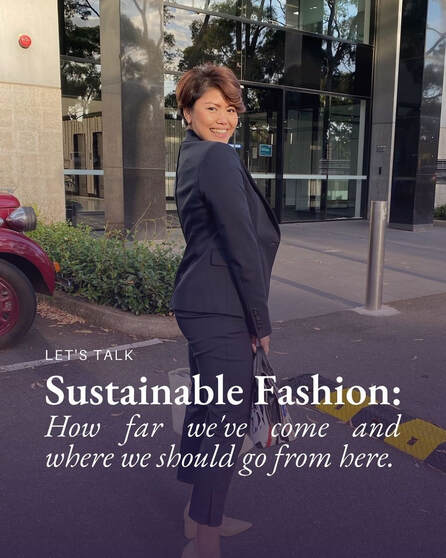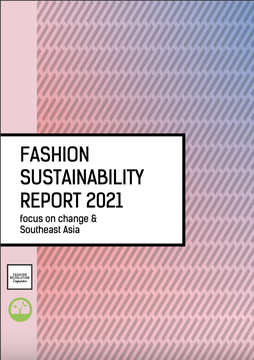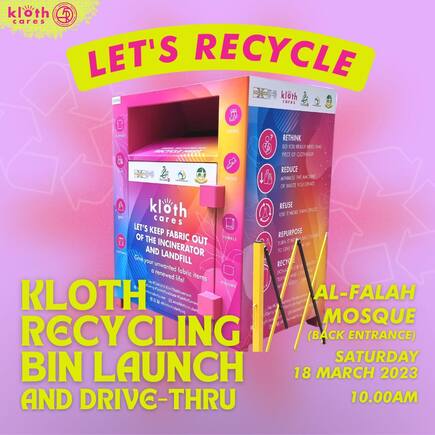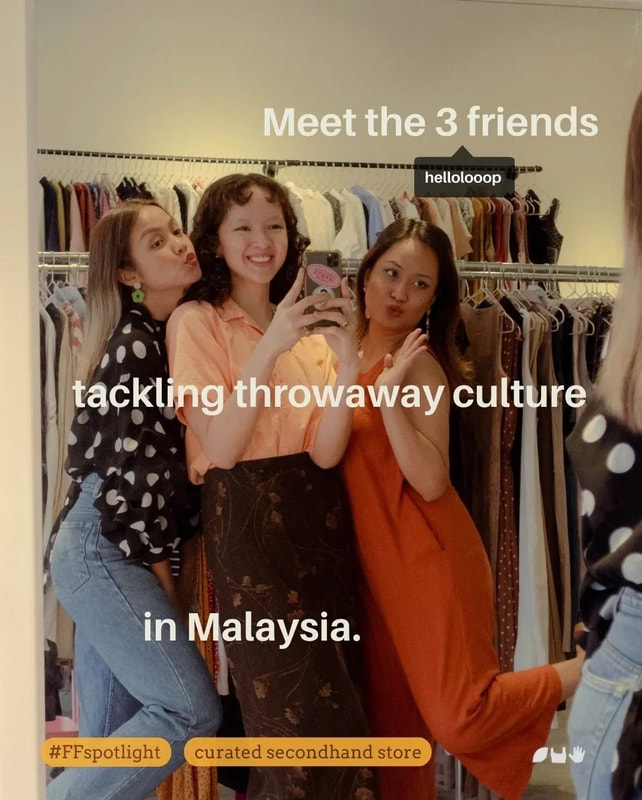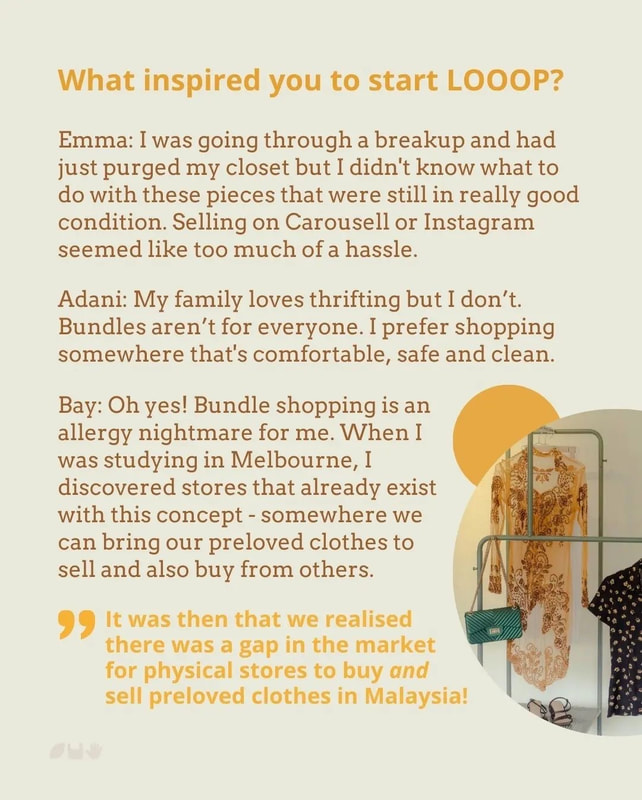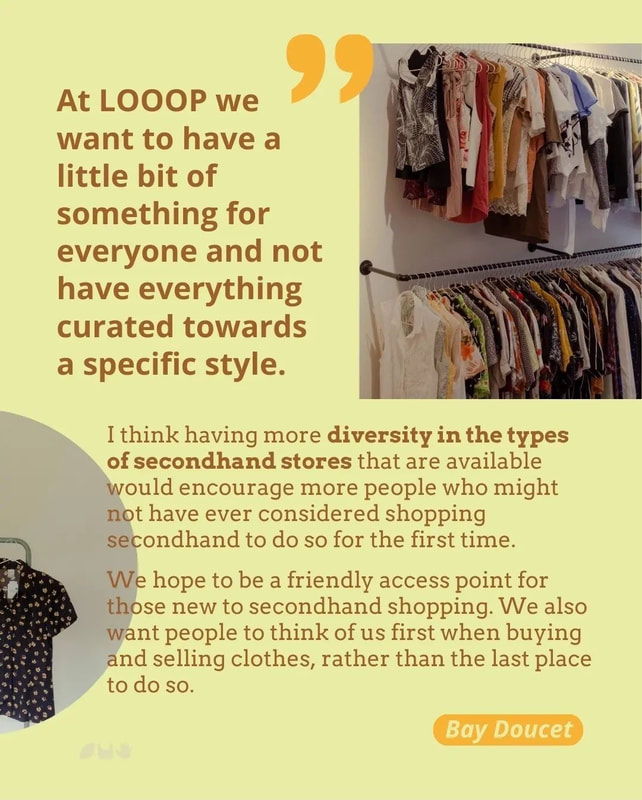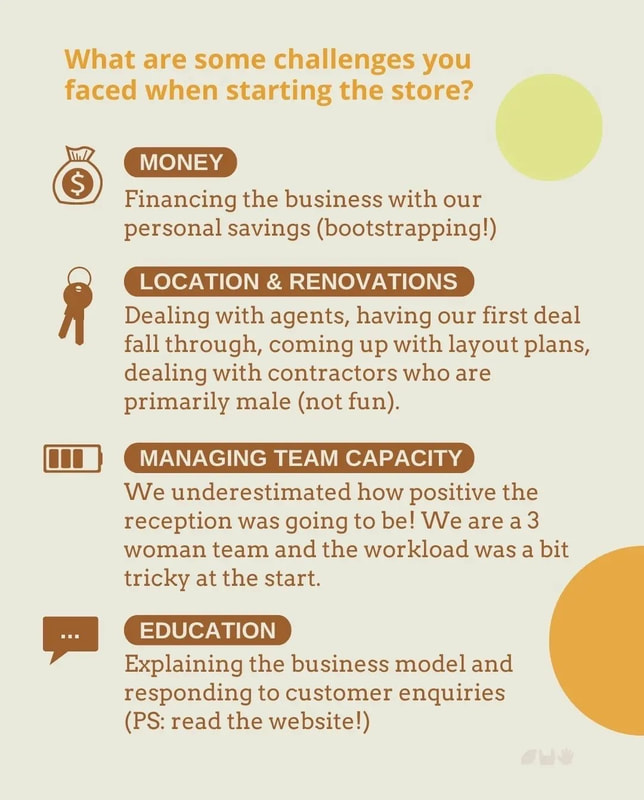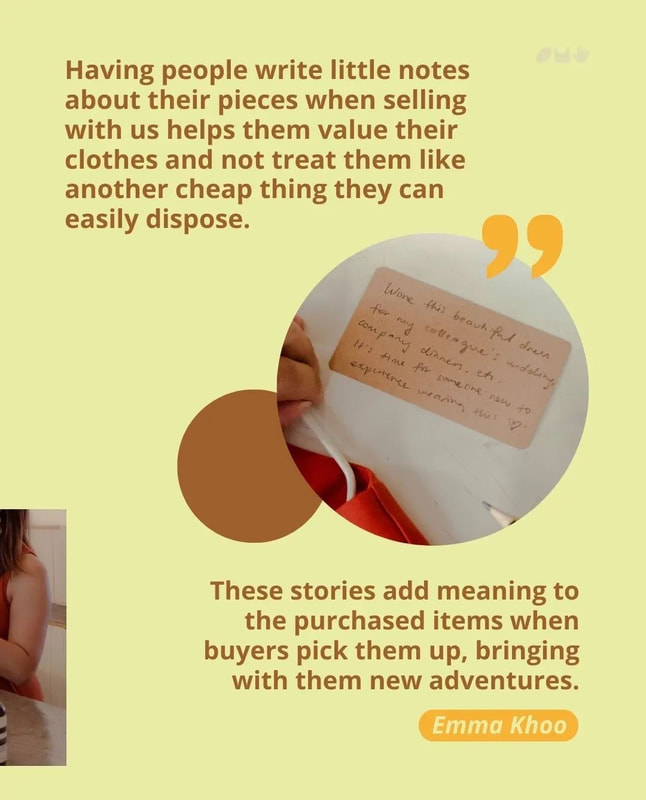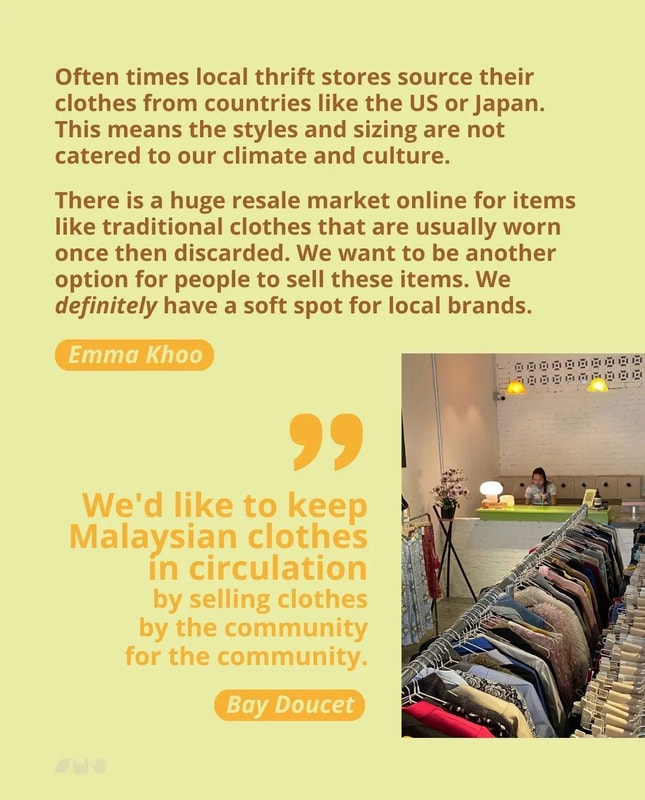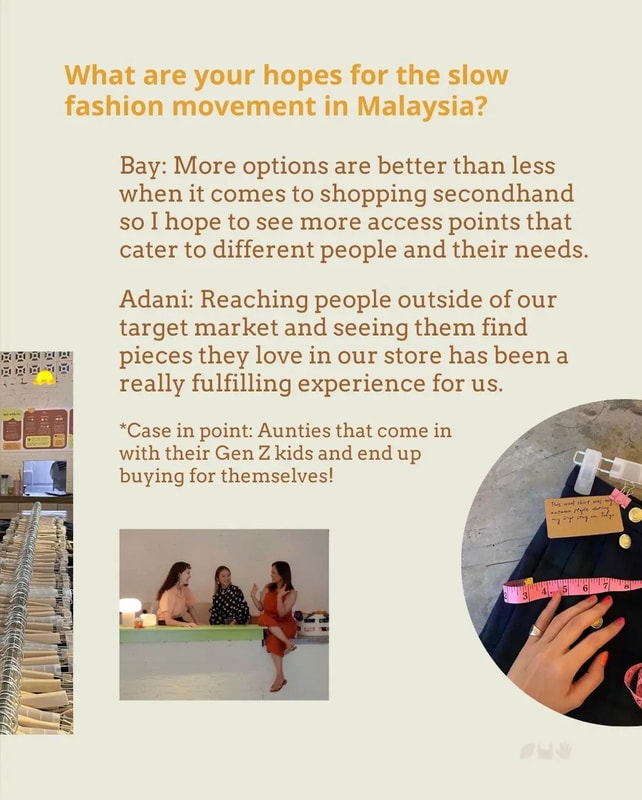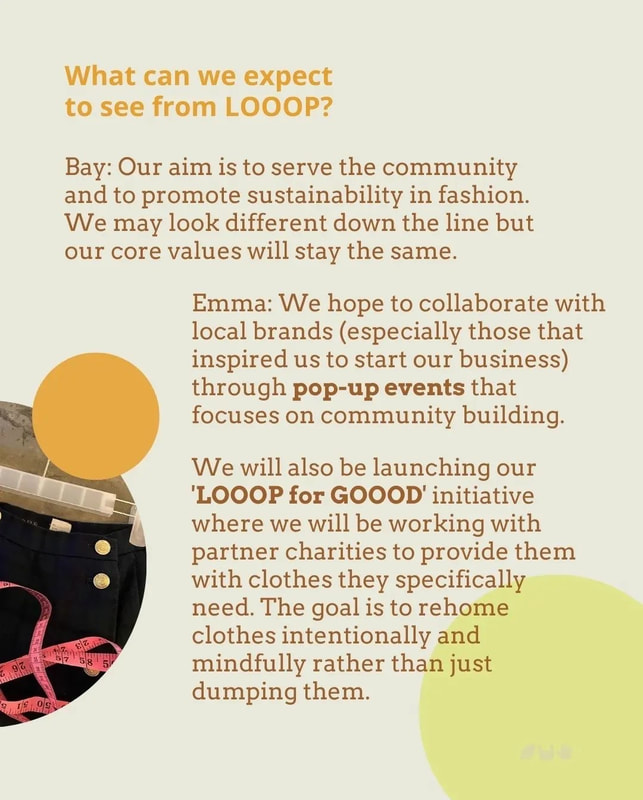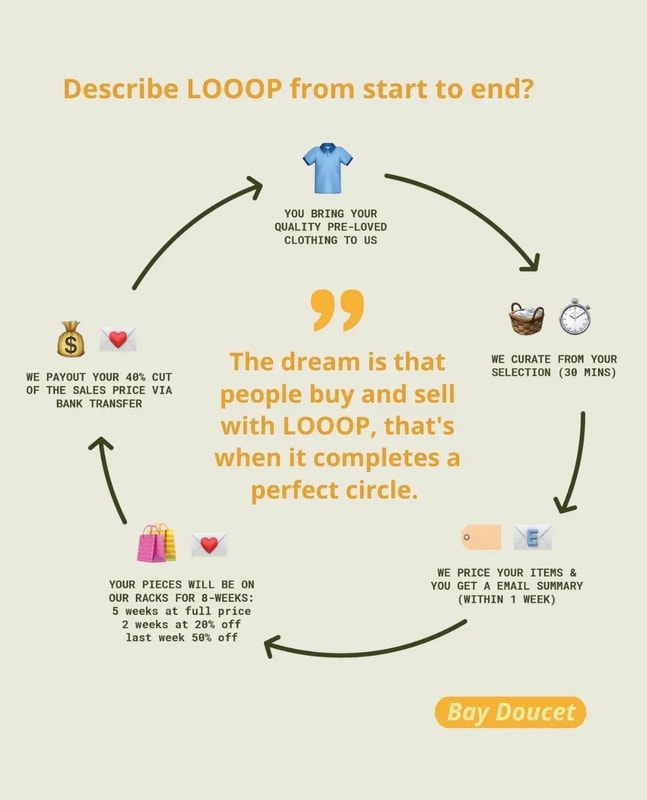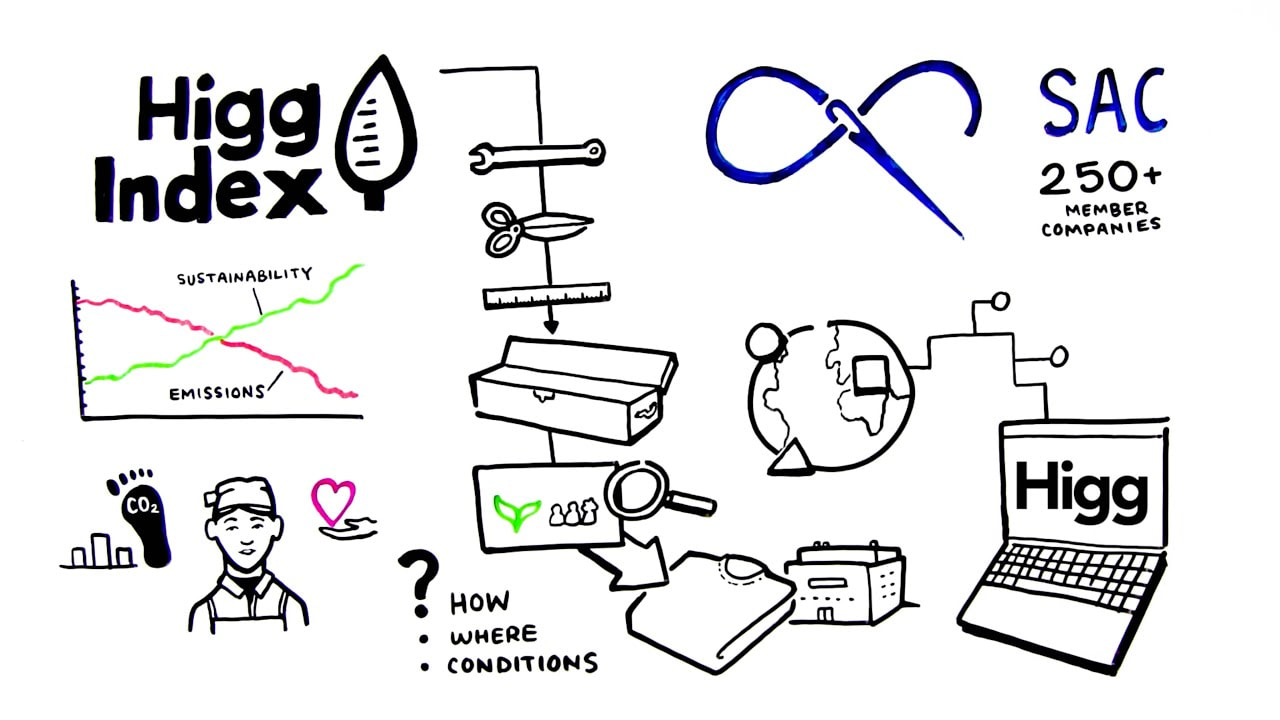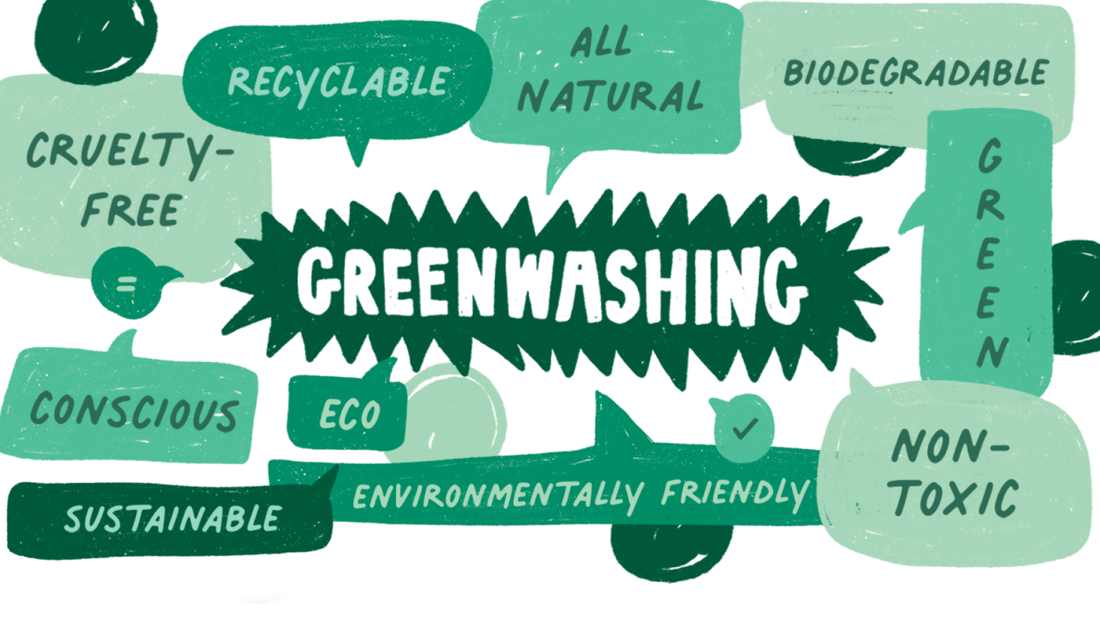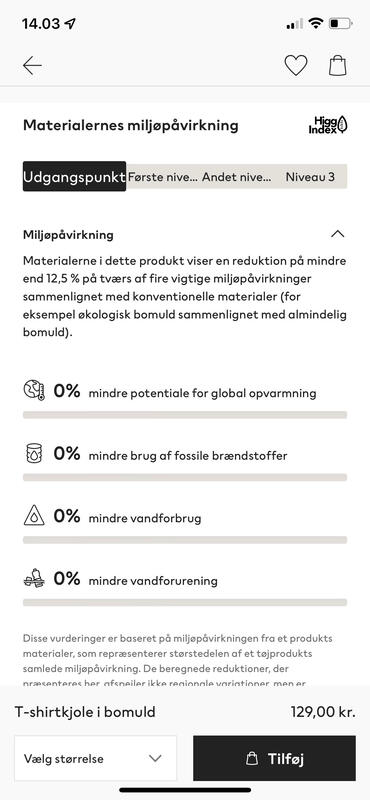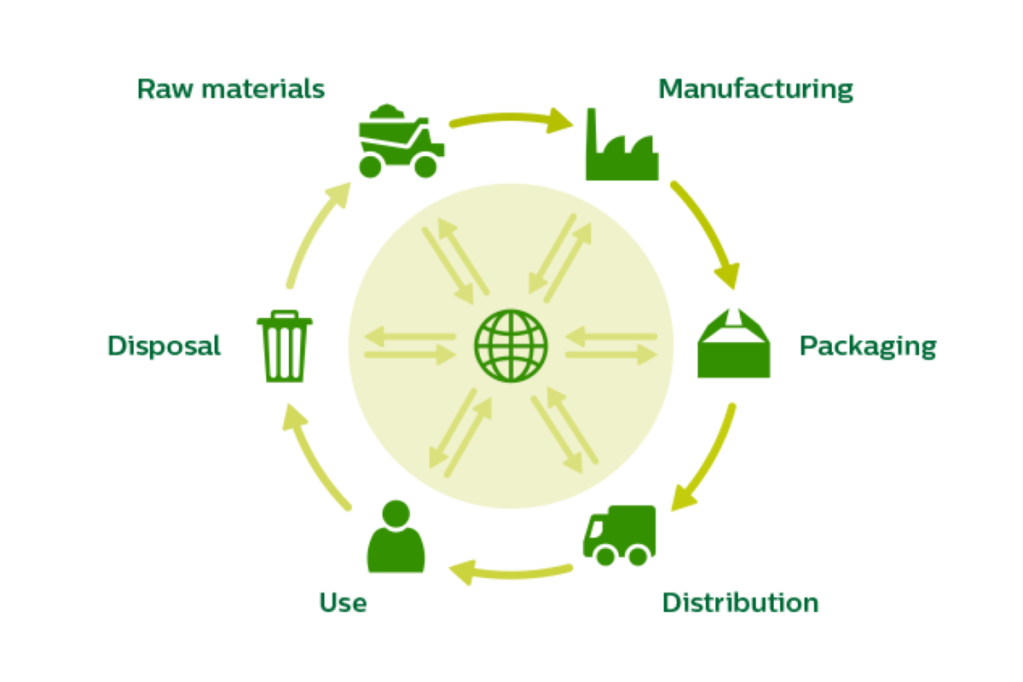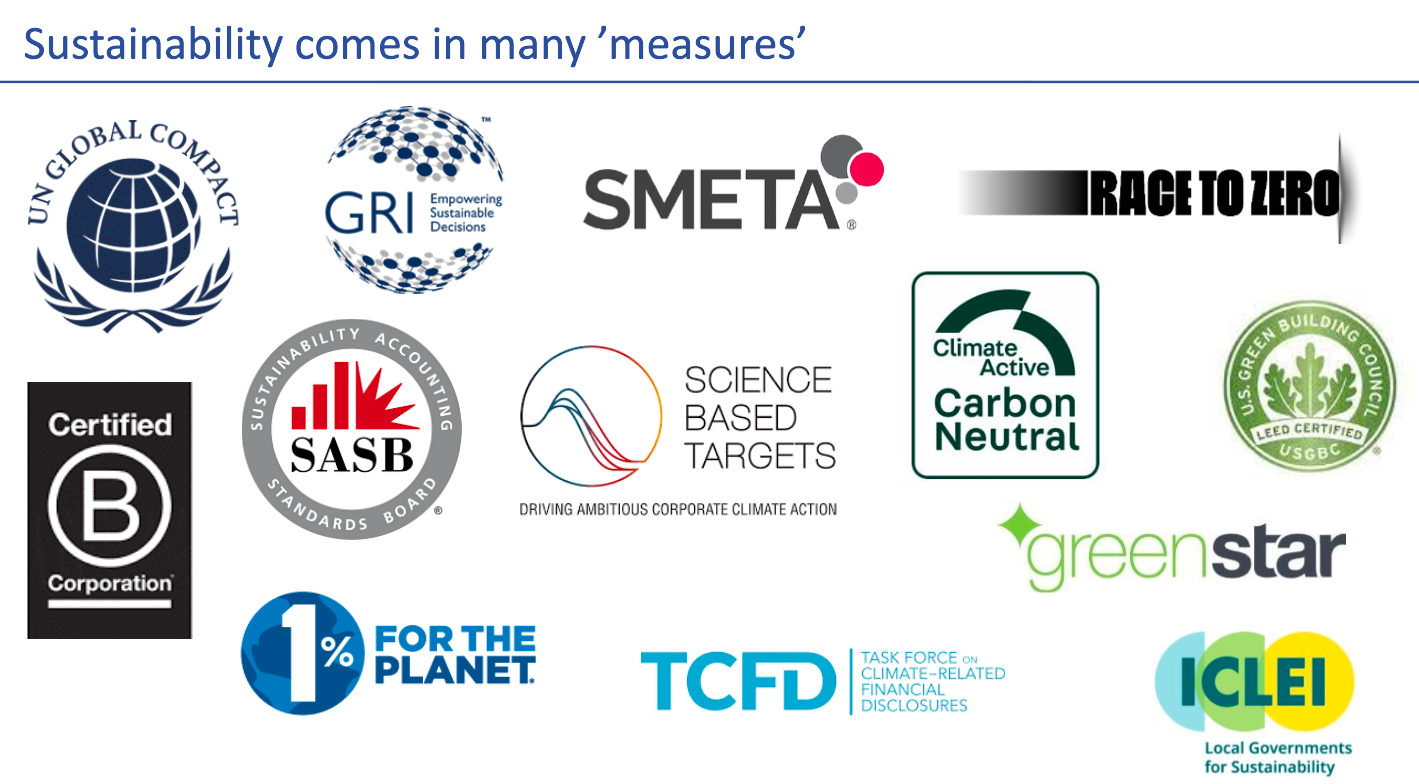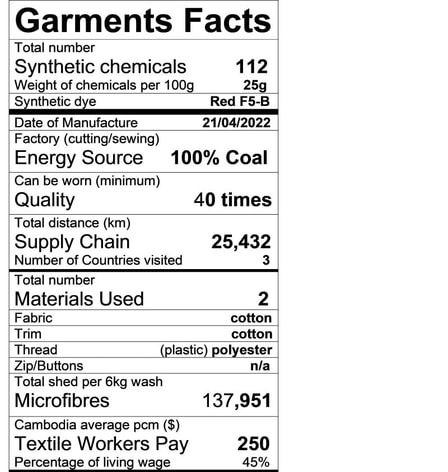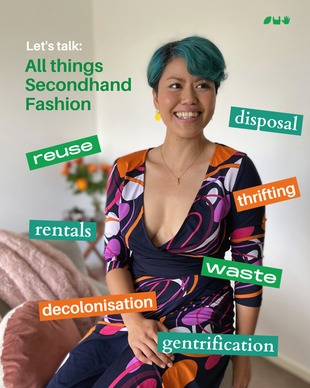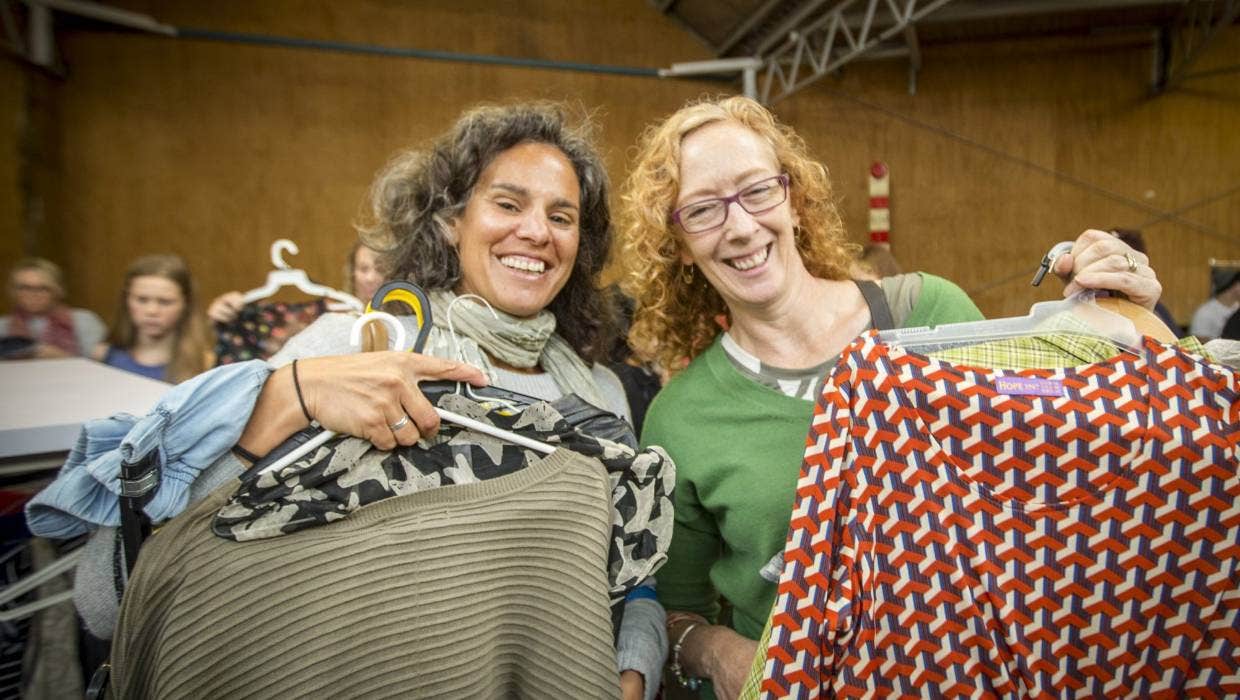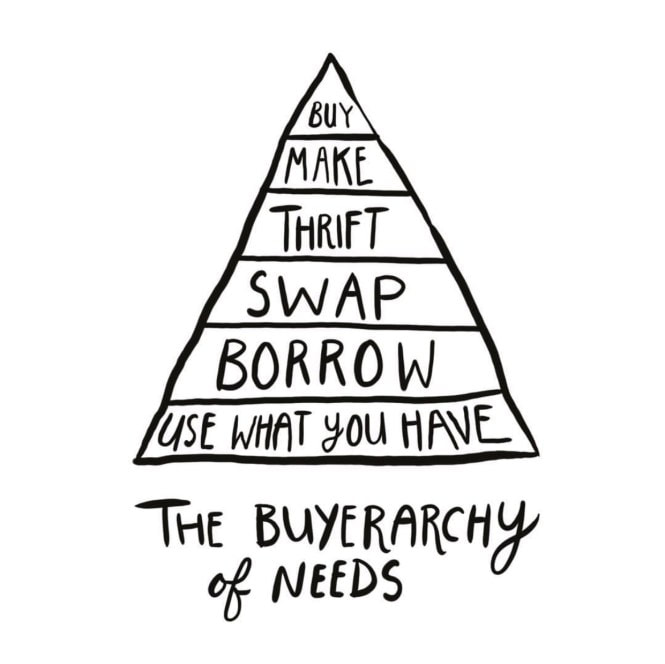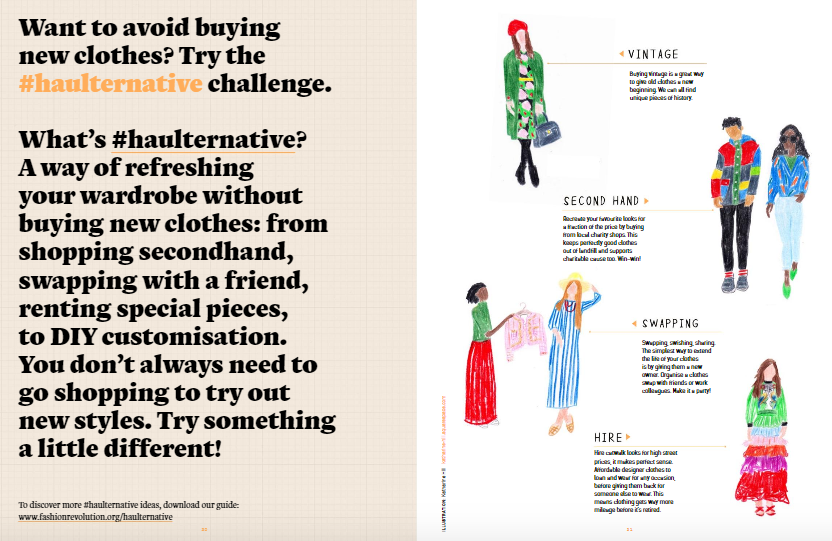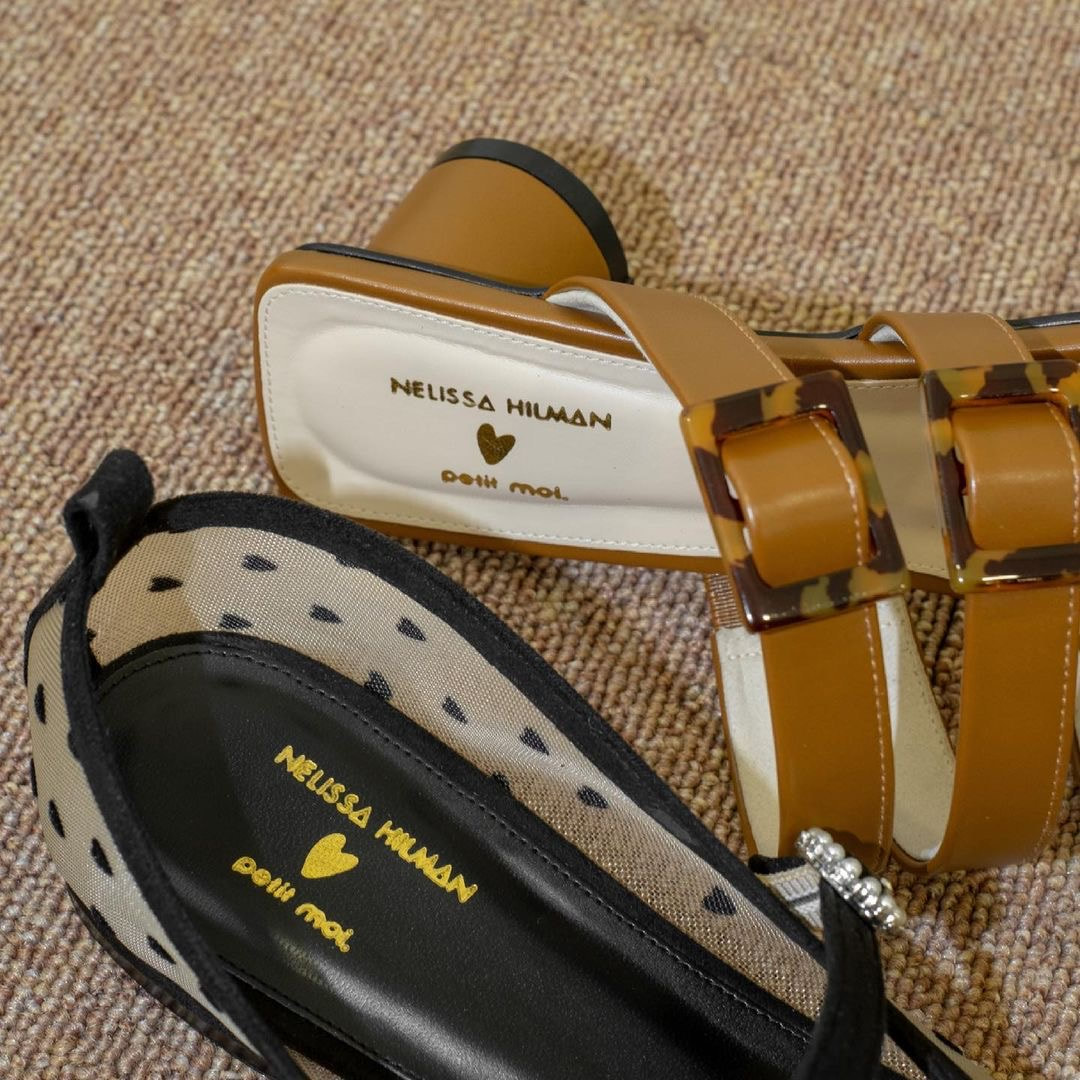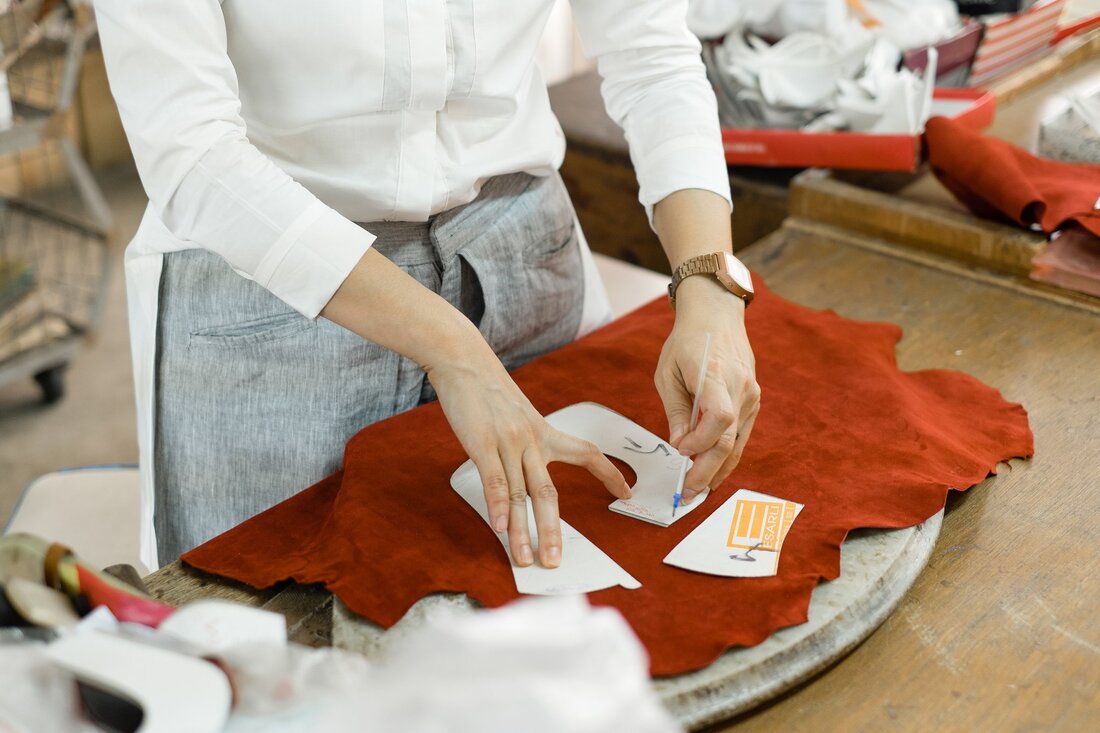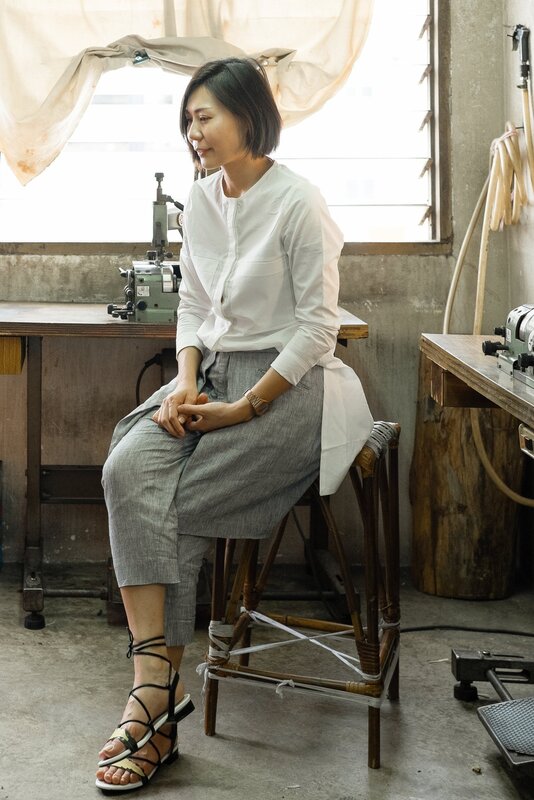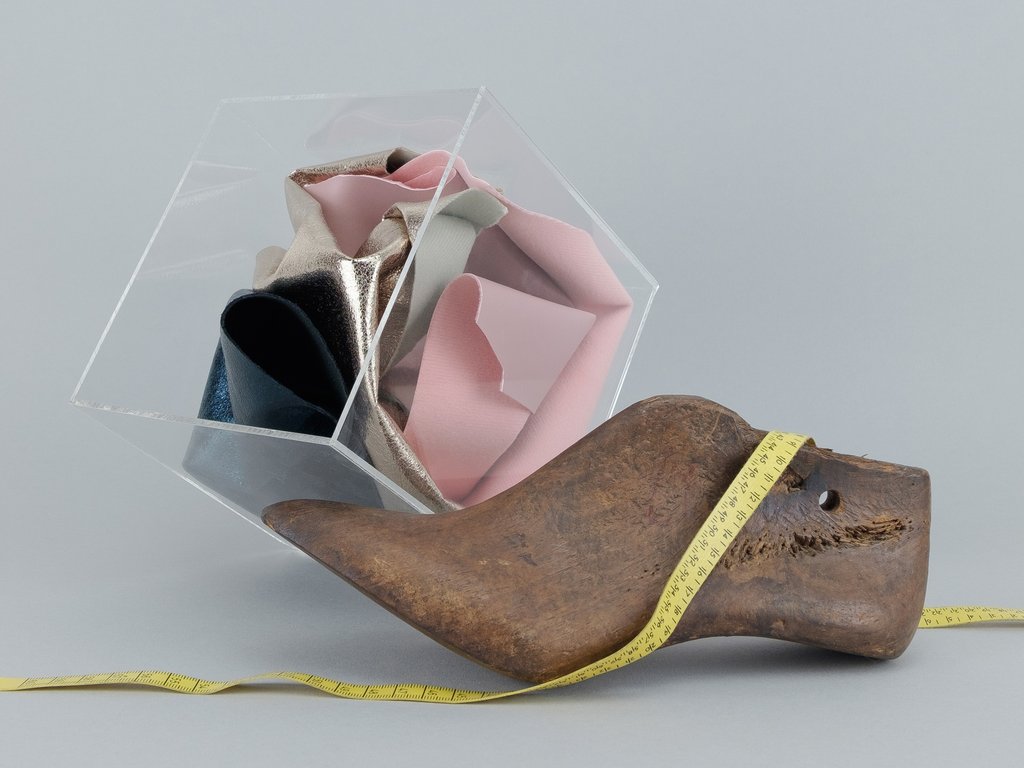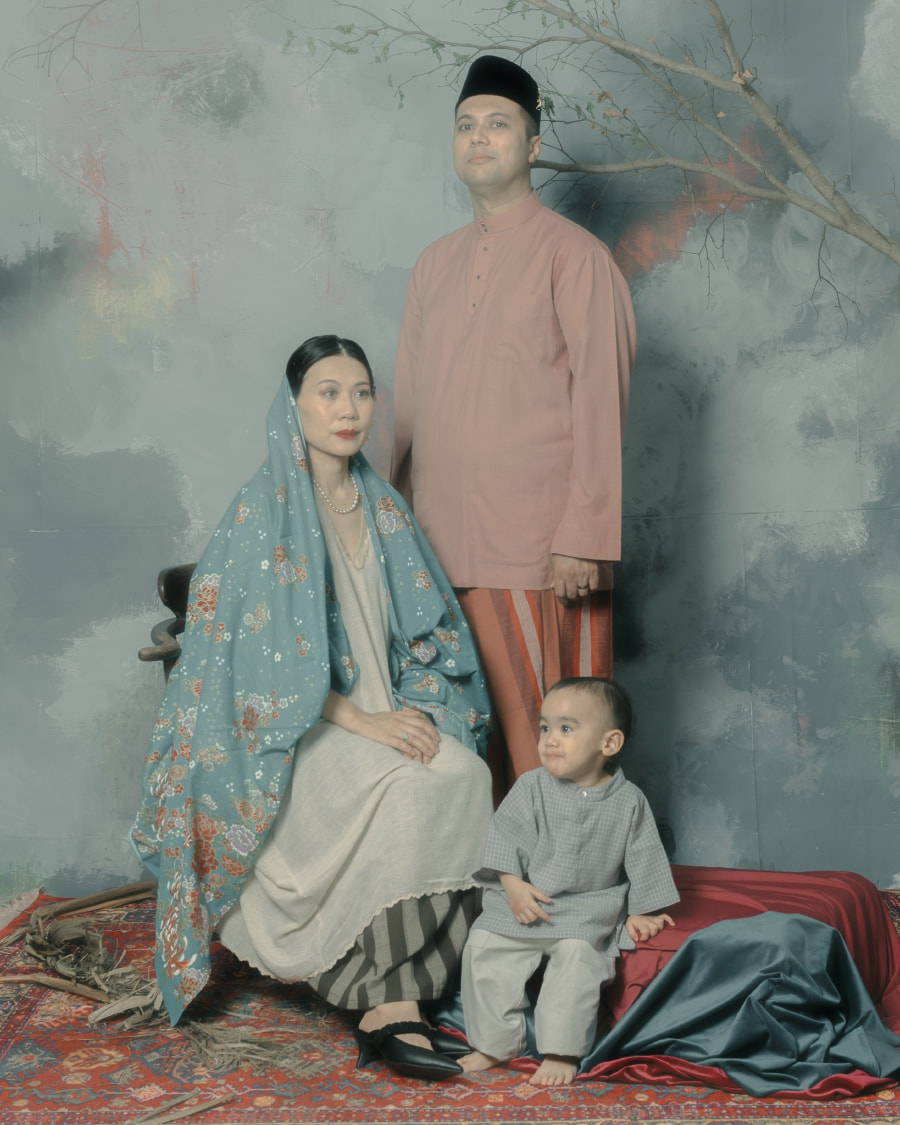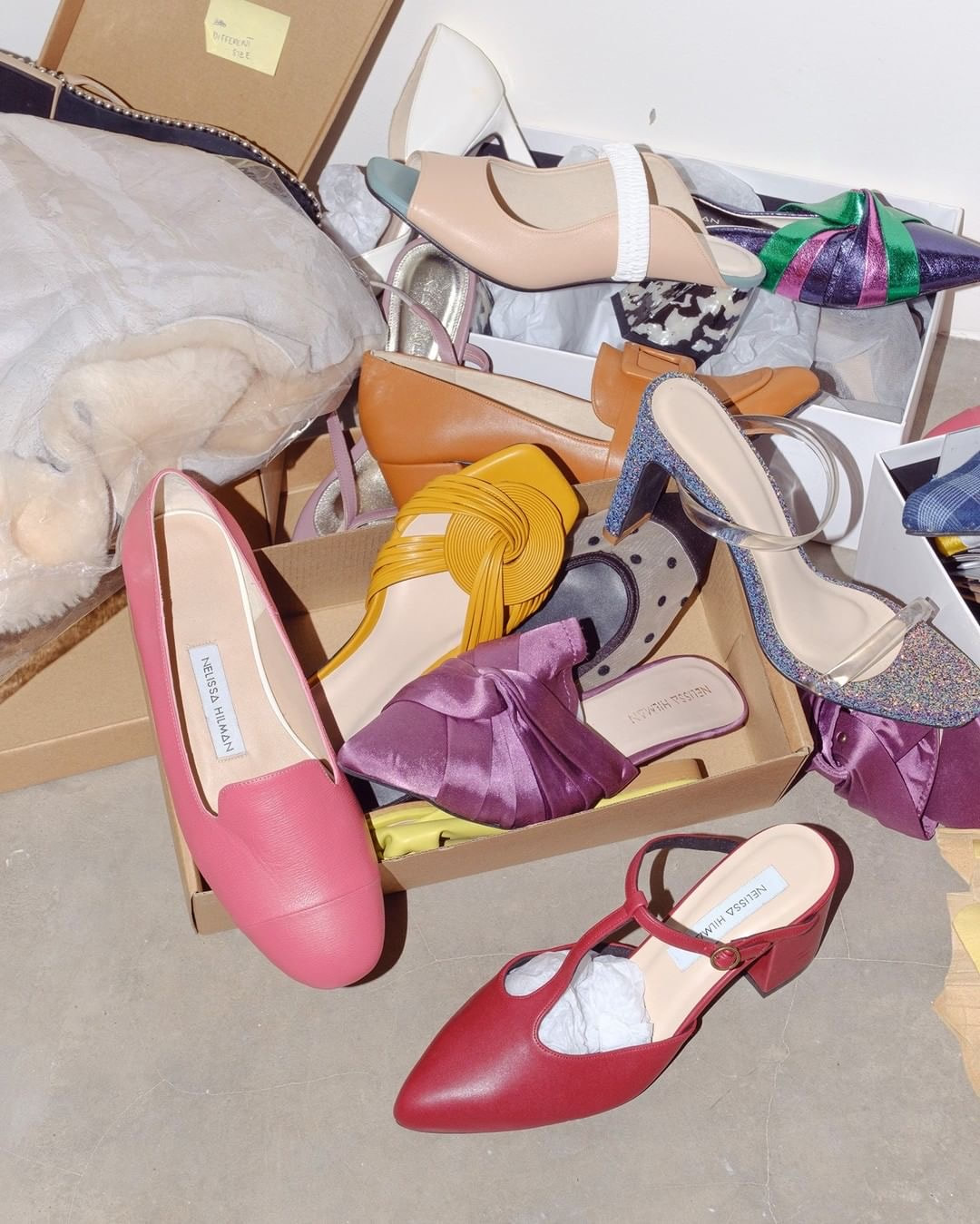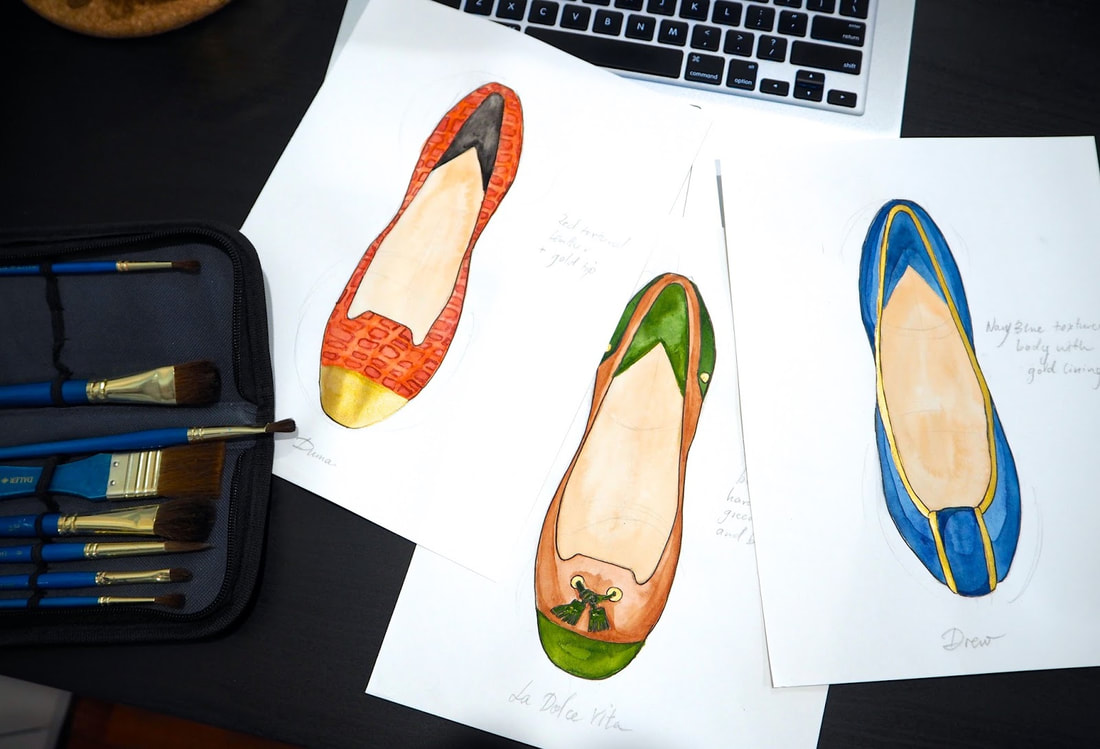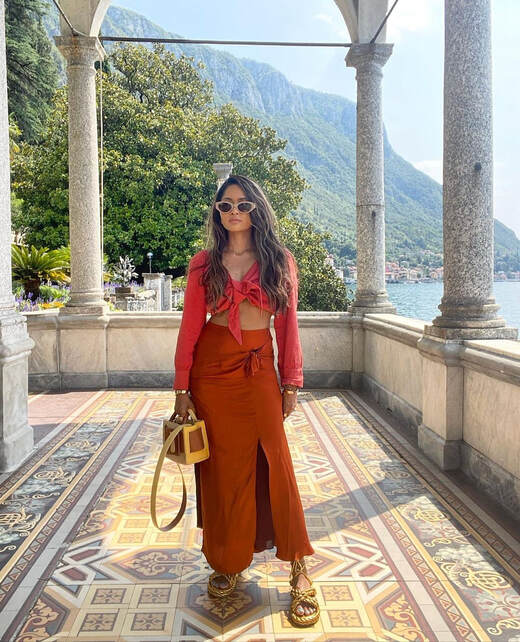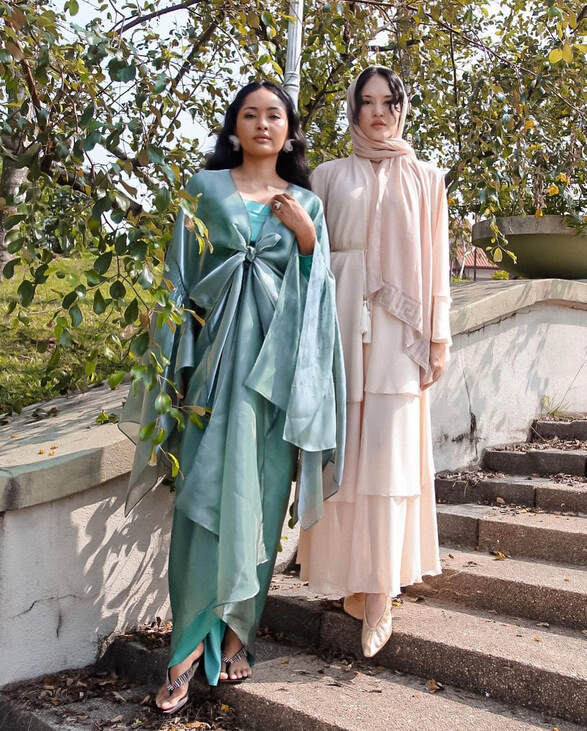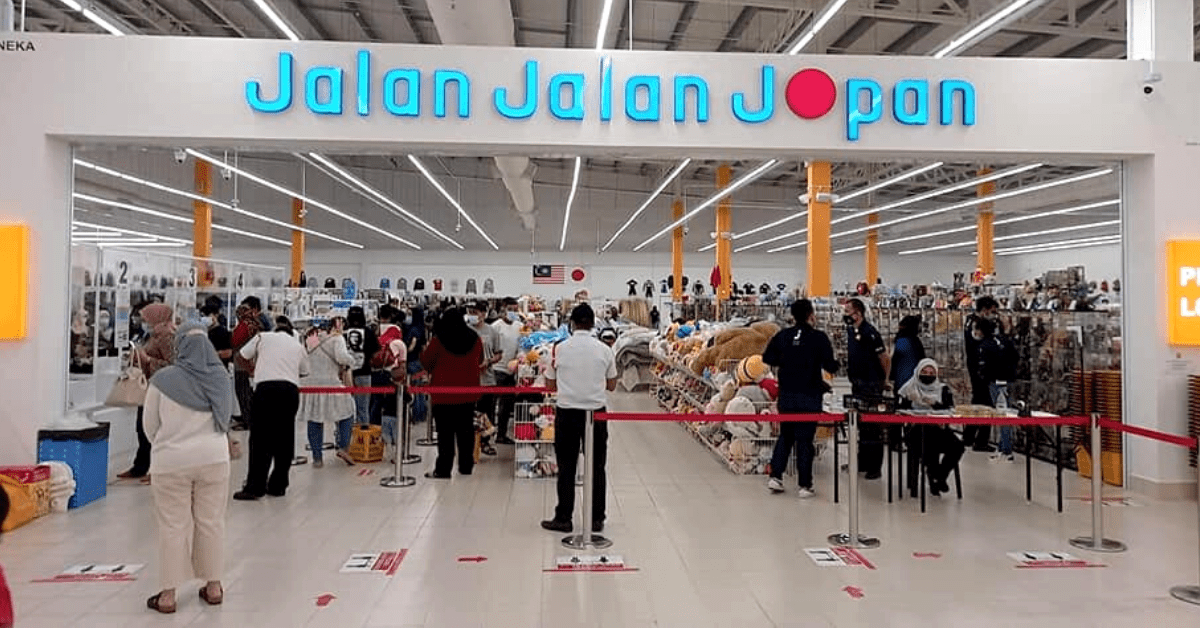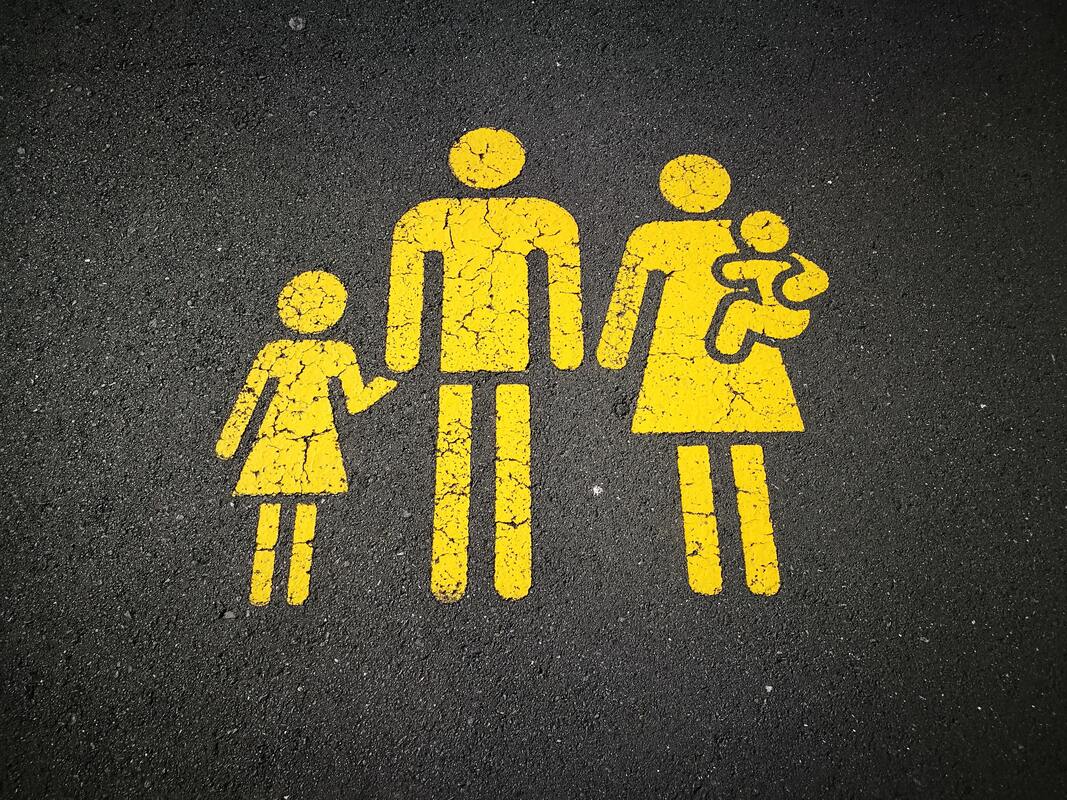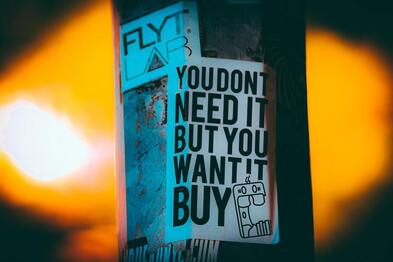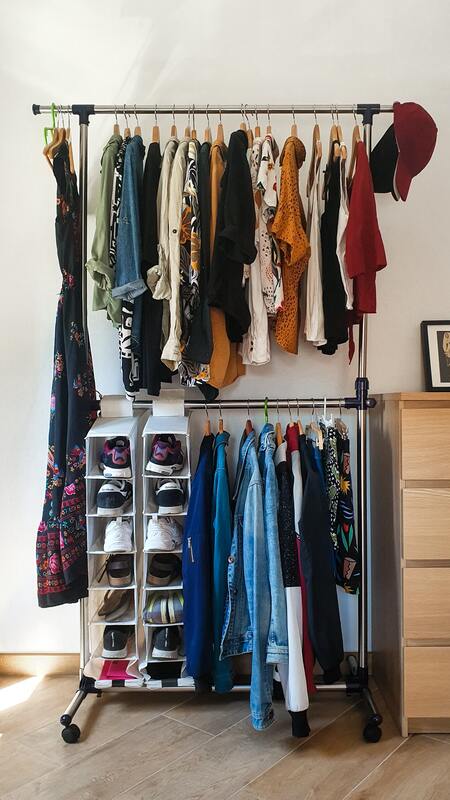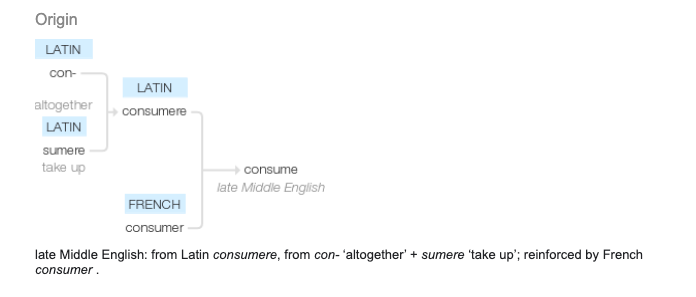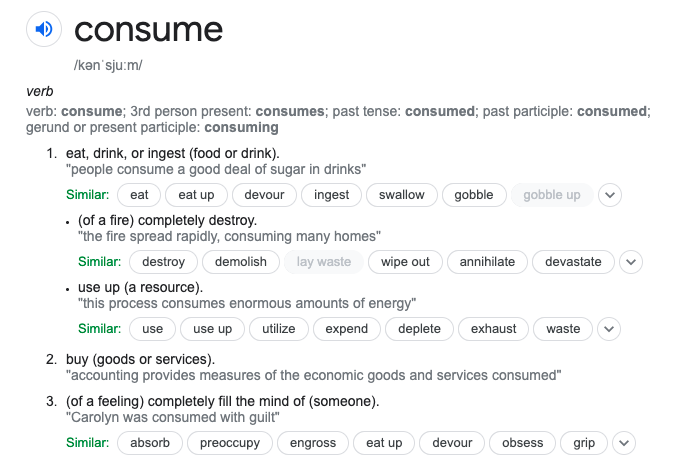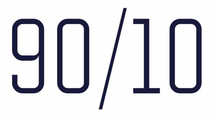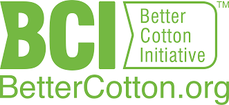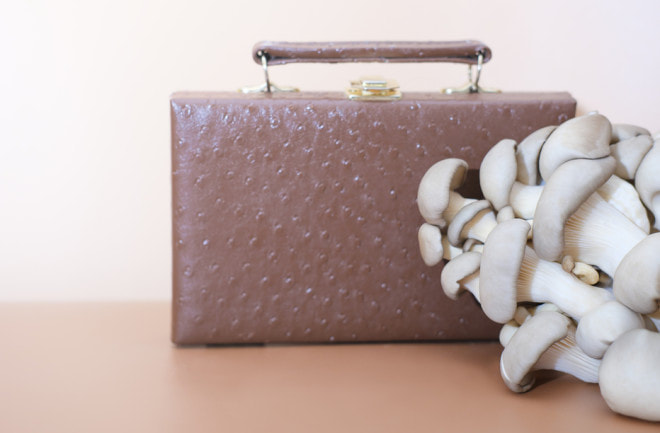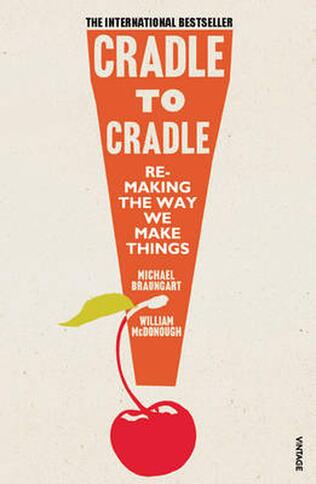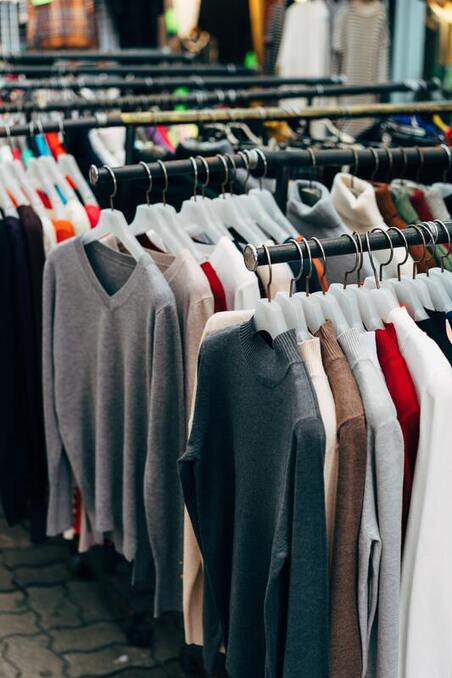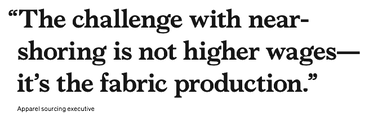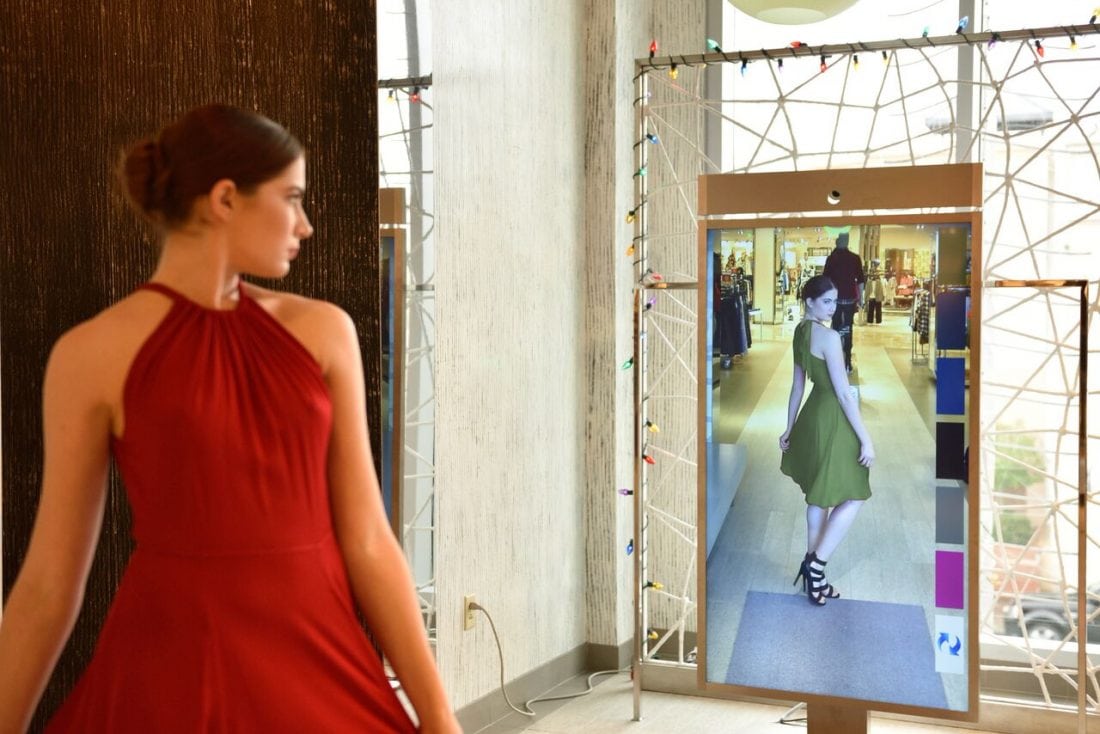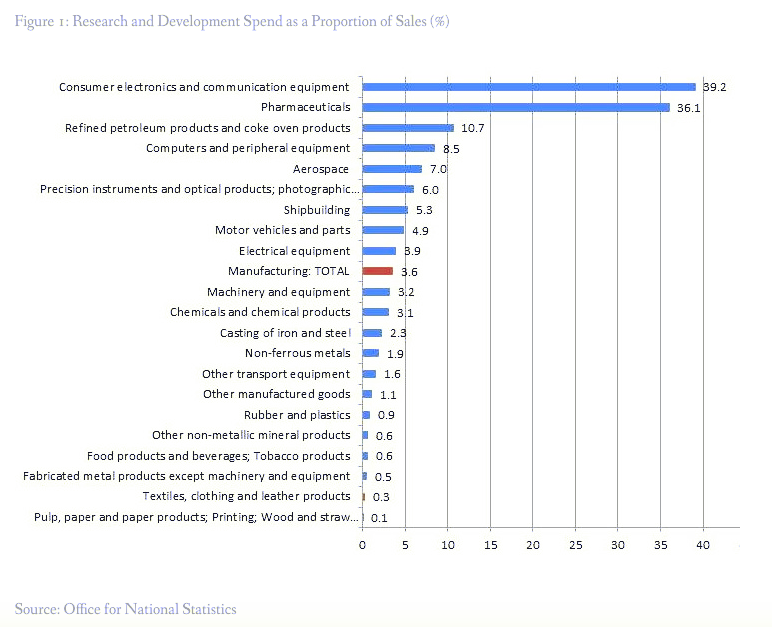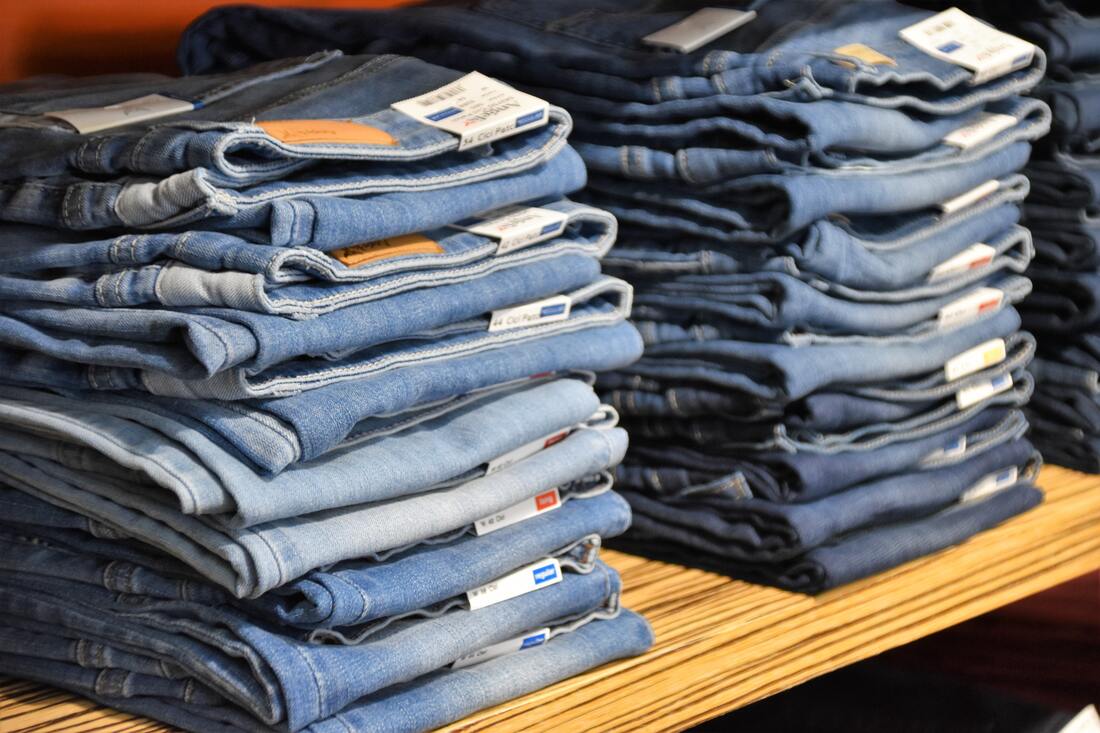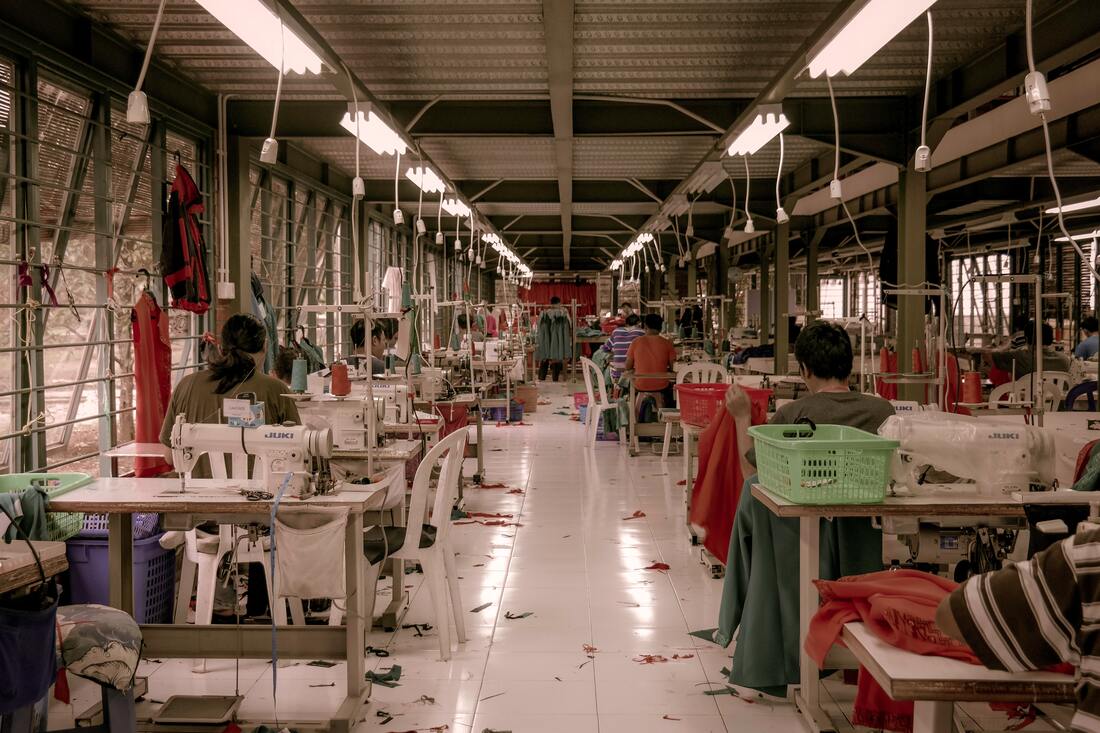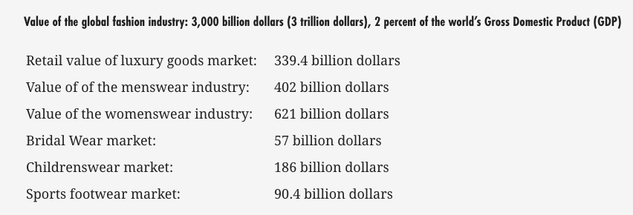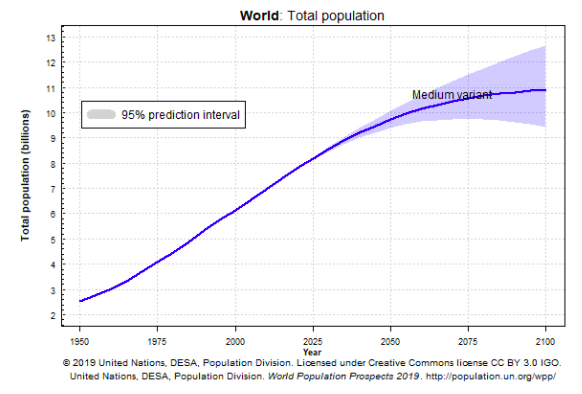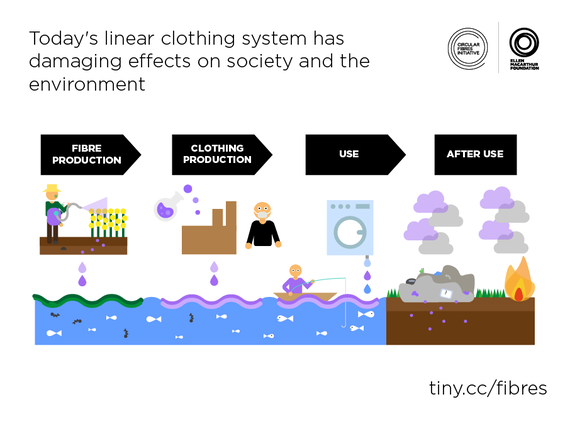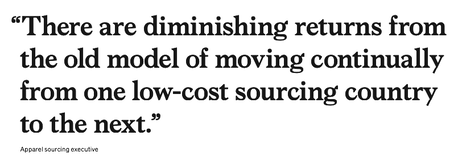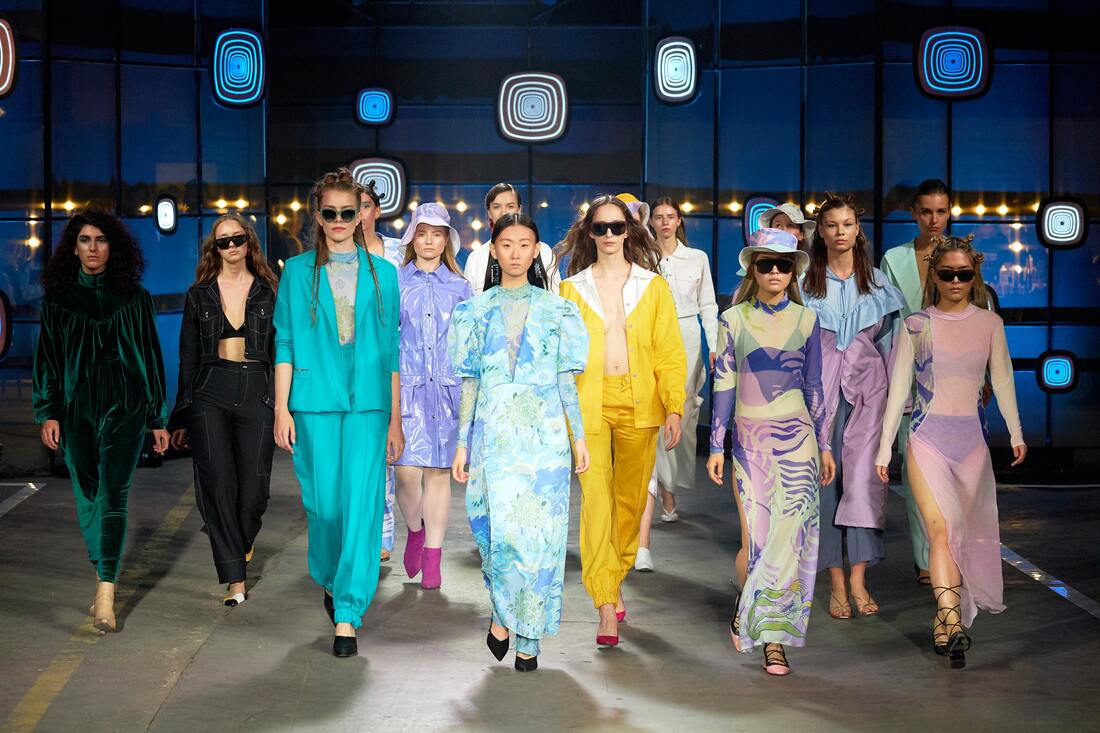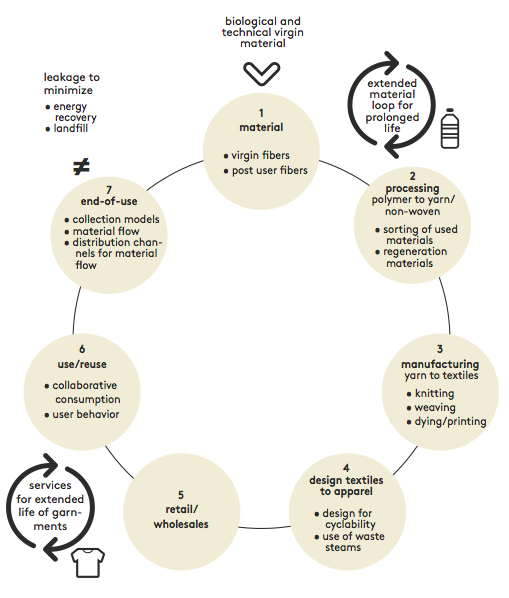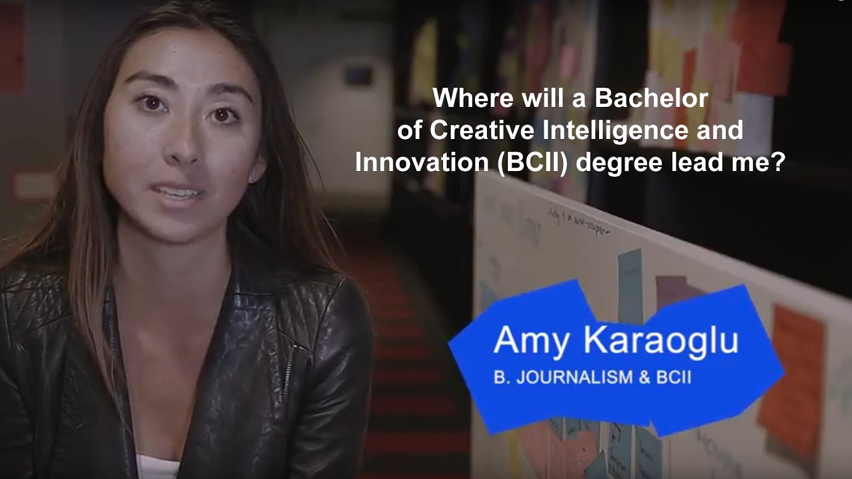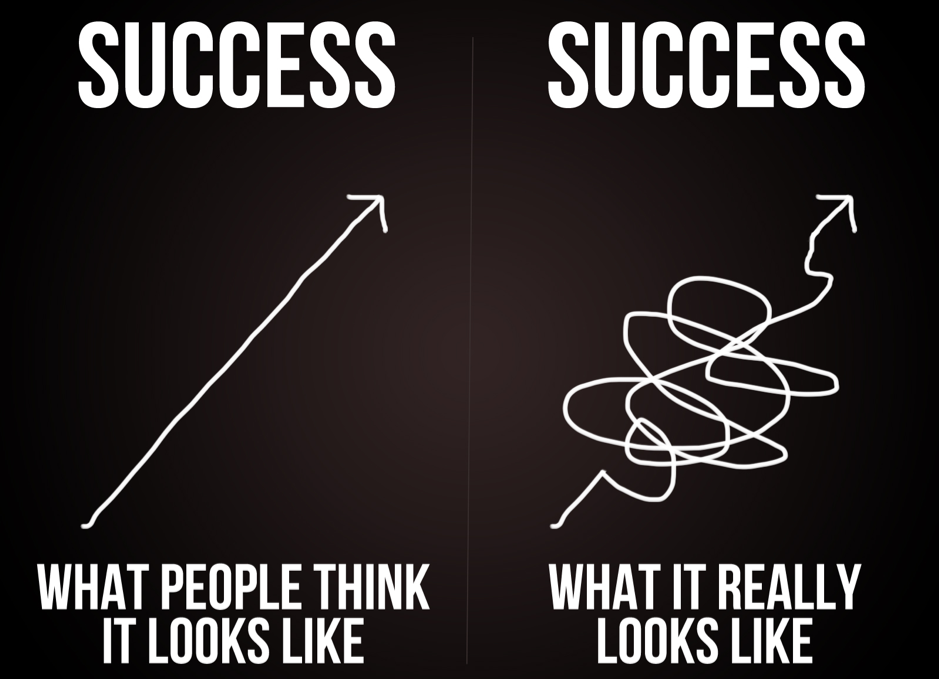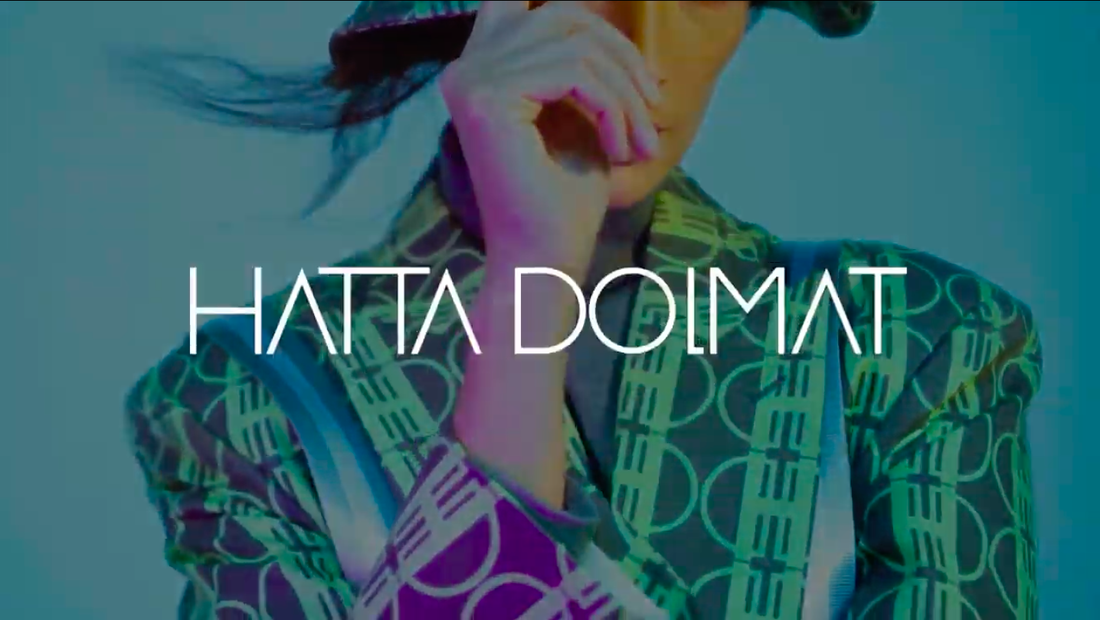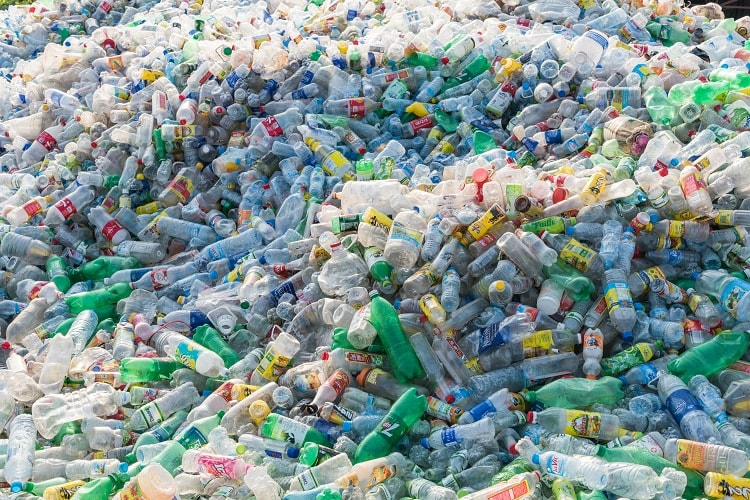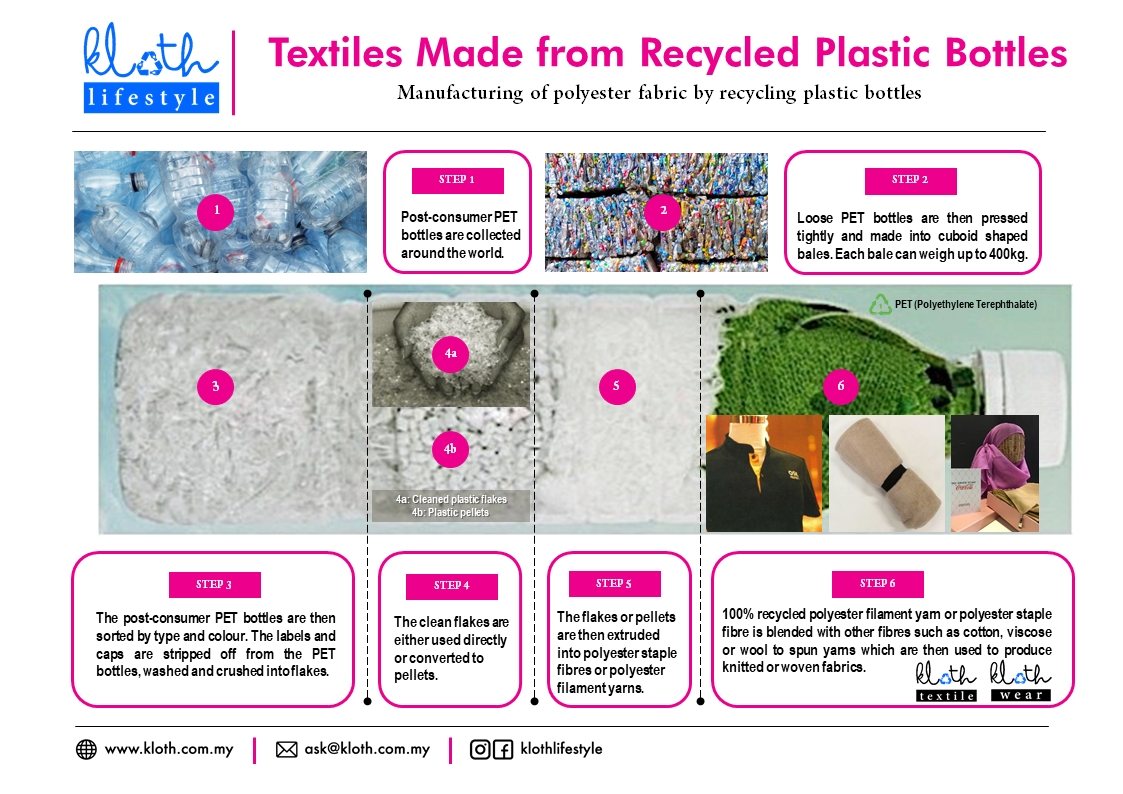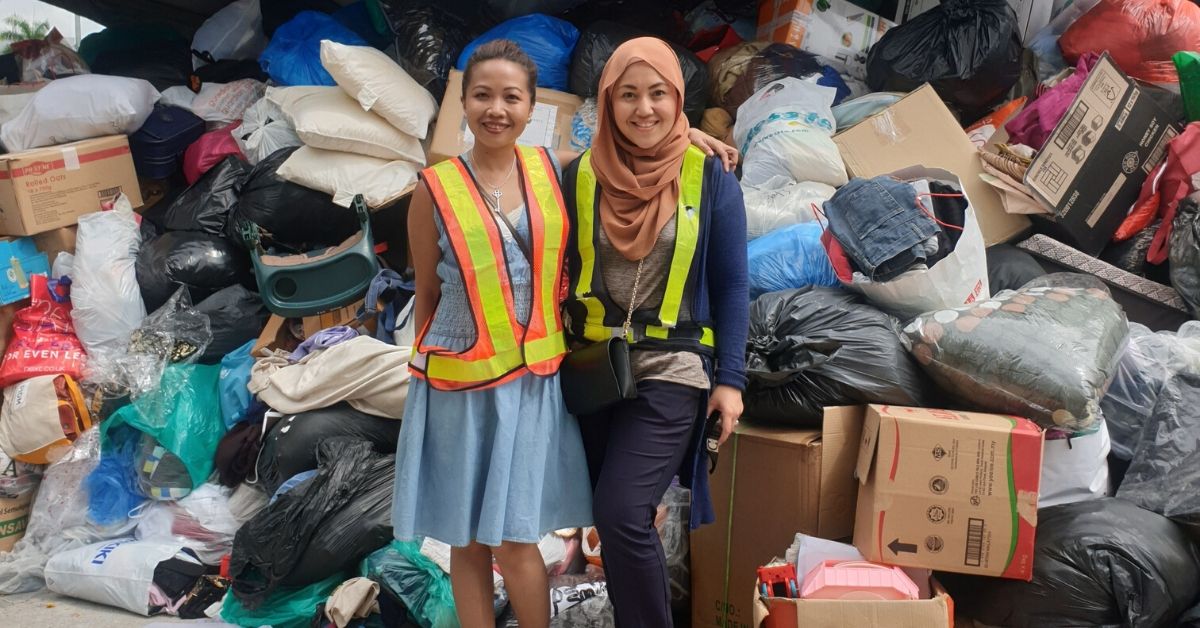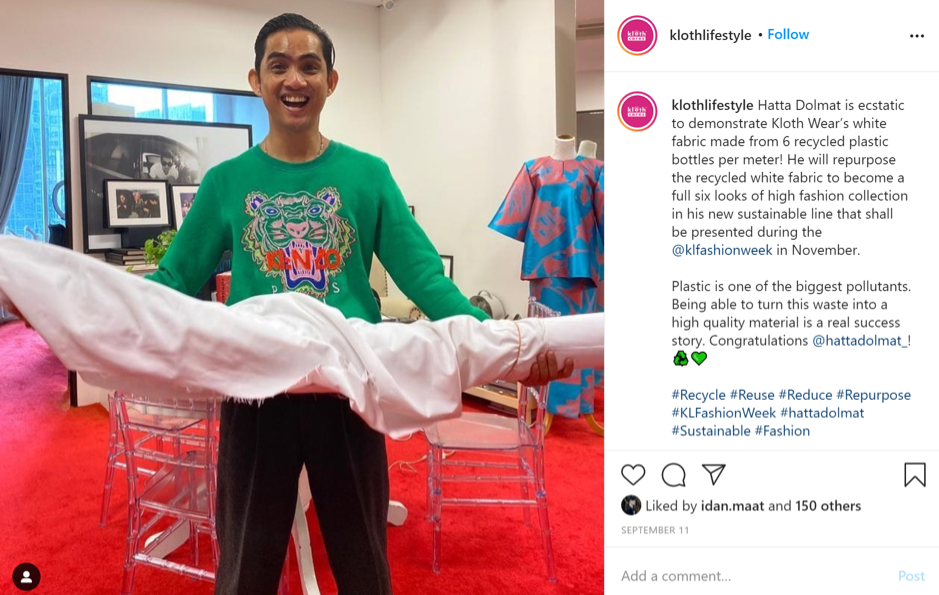|
It's Earth Month! In case you've missed out on our posts about fashion and our wonderful home - here's your 101 guide to understanding your clothing and consumption habits' impact on the planet.
​ Whether a new follower or seasoned supporter, these are absolute must-reads! Fashion and Nature
Where it all started.. Some key #fashfacts you need to know to grasp the significant environmental impact of the fashion industry.
Fashion and Climate Change
You are wrong if you think fashion doesn't contribute to advanced global warming. In this post:
Fashion and the Oceans
Did you know that fashion is a big consumer of plastics? Yes, textiles are made of plastic - ever heard of polyester? In this post:
Fashion and the Forest
Where do a lot of our textiles come from? Well, natural sources, such as cotton, bamboo, softwood and hardwood plantations and a range of other plants. In this post:
Fashion's Contribution of Biodiversity Loss
Biodiversity — short for biological diversity — is the variety of all living things and their interactions. Biodiversity changes over time as extinction occurs and new species evolve. Scientists often speak of three levels of diversity: species, genetic, and ecosystem diversity.
Beware of Greenwashing
We've said it before, and we'll say it again: DO NOT FALL INTO GREENWASHING TRAPS on Earth Day! In this post:
Circular Fashion
Is circularity real? Or merely a buzzword that fashion's adopted? We deconstruct this for you:
Regenerative Fashion
If you have followed us a while, then you might be familiar with the term 'regenerative' agriculture. No one remembers anyway, so here's a little recap:
We hope you've enjoyed this Earth Month edit. There's so much more we could share, but we thought of keeping it simple this time. Watch out for more edits in the future!
​- Najah ​
Join us in our Slow Fashion movement with the hashtags #ConscientiousFashionista and #wardrobetruths on Instagram, and follow us at @fashinfidelity. To receive early updates about our events and happenings, join our mailing list! Go to https://bit.ly/fashinfidelitysubscribe
tags: #earthday #earthweek #earthmonth #fashionrevolutionmalaysia #fashionrevolution #fashrev #greenwashing #circularfashion #regenerativefashion #sustainablefashionmalaysia #fashrevmalaysia #malaysia #conscientiousfashionista #fastfashion #slowfashion #wardrobetruths #fashioneducation #fashion #fashinfidelity
0 Comments
It's 2023 and sustainable fashion has gone mainstream. Where are we at and where we should we be heading in this space? Let's take a closer look. 1,629 words; 8 mins read. It’s been a bit over five years since I started FASHINFIDELITY from my grandmother’s living room in Kuala Lumpur at the start of 2018. Ah, the years go by so fast! In case you didn’t know, FASHINFIDELITY was born to facilitate the sustainable fashion conversation that I am so passionate about from a holistic perspective, something I thought was not prevalent at the time in Malaysia. We infuse local content, industry news, and international campaigns into our platforms, and expose the black and white and grey areas of the fashion supply chain, never shying away from tackling controversial issues. We also aim to provide easy-to-digest solutions, because we believe in showing what’s possible with the power of collective action. Having quit my corporate job and taken a year ‘off’ with no belongings, armed with an idea to write a business plan, I decided I was going to research the key people in this space. I created a ‘Master’ research list, and I put everything and anything I could find from brands, consultancies, rating and accreditations, published indexes, and influencers and movers and shakers by country. I had been living outside of Malaysia for 17 years, so I had to start afresh in terms of what I remember about life, culture, and business growing in KL. It’s now 2023, and I thought I’d give you a bit of an update of how I think the scene has evolved since then. 1) The relationships between not-for-profits and corporationsIn 2018, I had come across a number of zero-waste and ‘green’ product stores. I also found the only viable way for ‘green’ products to commercially enter the market for businesses was for them to be touted as corporate gifts or supplies. This included rPET hand towels (with personalised embroidery, of course), and plant-based catering dishware and packaging. Malaysians love freebies and food, and it didn’t matter if this was corporate merchandise! Now, fast forward to today, I noticed that corporate gifting is still a cultural phenomenon Malaysians can’t shake out of. But instead of merch, there are plenty of businesses that promote a different way of gifting. For example, corporate ‘gift boxes’ that promotes all-natural products or handmade items made in Malaysia, or corporate ‘experiences’, such as collaborating with a social enterprise on conservation projects, or appreciating traditional arts, heritage, and culture. What remains the same is that Malaysian civil societies, not-for-profits, and social enterprises have a symbiotic relationship with for-profit corporations and government agencies. Many deliver social, cultural and environmental justice work that rely on sponsorships from corporations or government agencies, because this work normally furthers a corporation’s CSR (corporate social responsibility) agenda, as well as being claimable as a tax deduction in the organisation’s taxable income. 2) Clothing & textiles disposal Kloth Circularity is a regular collaborator on FASHINFIDELITY content, as we see our business purpose are much aligned. I first reached out to Kloth (previously Kloth Malaysia) in 2018, because I read that they held exclusive rights to market Waste2Wear products in the country, a line of ‘green’ hijabs, or scarves, made out of recycled plastic bottles by a company based in Shanghai. Not long afterwards, the Malaysian Green Technology Corporation (GreenTech) signed a memorandum of understanding (MoU) with Kloth to lend a voice to promote eco-friendly fashion products. As we all know now, since then Kloth has focused their business model to power a Malaysian-centric movement to keep fabrics away from landfills, and boy, have they done that! Kloth partnered up with Life Line Clothing Malaysia, a textile recycling factory based in Port Klang, and the rest is history. Kloth currently has over 350 fabric recycling bins across the country (and now in Singapore), where everyday residents can drop off their unwanted textiles, with weekend drop-off events also servicing this need. It is important to mention there are also other providers in this space other than Kloth, which is all the more encouraging! It’s not an overstatement however to say the facilities to recycle comingled recycling is very inconsistent in this country, let alone collection of unused or unwanted textiles. Textile diversion from landfill has definitely improved since then, as can be seen by the yearly collection figures. Unfortunately, Malaysia’s overall recycling rate is still very low since the Federal Solid Waste and Public Cleansing Management Act 2007 (Act 672) came into force in 2015. Solid waste in this country is still very ineffective and poorly managed. Reporting on any national statistics on solid waste management is very severely lacking in transparency and good data, and very untimely. Here is a reel that we did with Kloth that explains what happens after you donate textiles at their bins. 3) Secondhand clothing, thrifting, and resellingIn 2018 there were a number of ‘physical’ stores that were known to be ‘secondhand’ goods hubs in Klang Valley, but also in populous states such as Negeri Sembilan and Johor. These were frequently by regulars and provide for an accessible price point for purchasing secondhand items, mostly clothing. Obviously Bundle shops are synonymous with secondhand clothing in Malaysia, and these stores serve their purpose and have a steady stream of regulars shoppers. Over the years there’s been a noticeable shift in where secondhand clothing were sold: mostly online, marked as ‘pre-loved’ goods. Pre-loved ‘markets’ and ‘pop-ups’ are common, usually coupled with arts and cultural events, and have garnered popularity among Gen-Zs. There’s also another shift: businesses selling pre-loved goods are also now owned by more younger entrepreneurs, wanting to do their part of going against the grain of disposable (fast) fashion and contribute to the take-up of thrift culture in Malaysia by smashing the stereotype that buying pre-loved clothes is taboo. These include opening up curated physical stores, some sourced from the ‘Bundle’ goods or direct from the recycler, here and from overseas, but there are also stores that are selling items on consignment from locals. A sub-culture of upcycling and re-selling have also emerged, with presence in both online and offline communities. This has led to some gentrification of thrifting, but at the same time, has contributed to a renewed interest in local brands, heritage fabrics and skills, eco-styling services, and repairing and mending. I’d say compared to five years ago, this space is thriving and will keep on growing. I’m all for it! Check out our guide on where to shop secondhand fashion in Malaysia here, our chat with Kloth about the future of secondhand clothing, and our awesome interview with Haida Yusof on Malaysian thrifting, honouring your clothes and not being a ‘sell-out’ here and here. 4) Sustainable consumption, sustainable design, and awareness of SDGsLast but not least, the movement for sustainable consumption is definitely on the up, too. I remember in 2018 I visited The Hive Eco Store in Bangsar in KL, and was impesssed that a zero-waste service provider like this even existed in Malaysia! I was used to the concept in Australia, but seeing this particular movement culminating in a profitable business was very encouraging to me. I knew that Zero Waste Malaysia, founded in 2016 is a highly active community of over 40,000 members that promotes and provides resources for individuals and communities to strive for a zero waste lifestyle. I knew that sustainable fashion consumption was a subset of this massive movement and I made the decision to consciously lean into zero waste communities I could find to accelerate my cause. I reached out to FashRev Malaysia at the time, too. There were other related communities in Malaysia that contributed to the sustainable consumption umbrella: healthy eating restaurants, veganism, well-being and fitness, locally-made products, and environmental conservation. Today, the community and advocacy in this space has grown exponentially in a way that’s unprecedented. Malaysia has gone on to ban single use plastic straws, for example, and shown leadership during the China plastics ban by turning back containers full of plastic waste to be processed illegally here. Malaysians have also embraced emerging local designers in the sustainable fashion space, and entrepreneurs providing solutions to managing difficult wastes, as well as provide online marketplaces to sell and buy from more responsible brands. Repair and DIY are making a comeback. Banks and large institutions have hosted Sustainability Development Goal (SDG) conferences. Kuala Lumpur Fashion Week first debuted its sustainability showcase runway with a segment called ‘Design to Sustain’ in 2019! Publications such as Tatler, Zerrin, Riuh, 24 Local and SAYS have convered many articles on Malaysian brands that champion sustainability, as well as the more recent platforms Sense Scoop and First Classe. Hatta Dolmat produced a collection for KLFW with rPET fabric in 2020. Taylor’s University fashion design students designed a collection based on a ‘Sustainability Meter’ last year, and just recently, the Malaysia Fashion Creativity Award was founded by a reputable line-up of fashion educators and industry players to rethink Malaysia’s fashion future by considering the nation’s heritage, fit for the world stage. Check out our interview with Xe Linn, founder of Malaysia’s first zero-waste label here. The COVID19 crisis really made Malaysians think twice about their purchasing habits, especially for non-essential items such as ‘fashion’ clothing and footwear, and helped stake a more mindful pattern of consumption moving forward. I am convinced this change in behaviour will continue to stay with a lot of us, as FASHINFIDELITY polling, from time to time, suggests. In the next 5 years, I hope embracing slow fashion, reuse, re-wear and re-style will be the norm in Malaysia, and sustainable fashion designers will continue to push the boundaries of questioning good design within academic institutions and curriculums. Personally, FASHINFIDELITY is earmarked to grow in this space, too, by providing the ultimate resource, community, and media presence online to be engaged in this topic. Watch this space - I’m excited! What do you hope to see? - Najah x Join us in our Slow Fashion movement with the hashtags #ConscientiousFashionista and #wardrobetruths on Instagram, and follow us at @fashinfidelity. Tags: #malaysianfashion #malaysiandesigners #sustainablefashionmalaysia #fashrevmalaysia #malaysia #conscientiousfashionista #fastfashion #slowfashion #wardrobetruths #fashioneducation #fashion #fashinfidelity
While we need to set high standards for sustainability in apparel production, are we too woke-washed to realise we mostly offer criticism, but not much else? 2555 words; 12 mins read By now, everyone in fashion has heard about the class action lawsuit filed in the Southern District of New York in July 2022 that accused H&M of deceiving consumers about the veracity of its sustainability claims through the use of “false and misleading” environmental scorecards and advertising. This came about at the back of the recent Higg Index ‘sustainability scorecard’ controversy, where Norwegian outdoor wear brand Norrøna was asked by the Norwegian Consumer Authority (NCA) to pull down their use of the ‘Sustainability Scorecards’ on their website and corresponding materials. H&M’s class action lawsuit was in relation to both the use of the Higg Index Sustainability Scorecards, and greenwashed ‘misrepresentations’ generally, where it claims its products are ‘conscious’, a ‘conscious choice’, made from ‘sustainable materials’ and prevented, through its recycling program, ‘from going to the landfill’ through the use of green hang tags, in-store signage and online marketing. We know a crackdown on greenwashing is absolutely needed in fashion and apparel, as there are currently varying degrees of minimum criteria when it comes to defining a product line ‘sustainable’ in fashion and apparel. Even though these recent developments have been welcomed by consumers and industry watchdogs alike, I think the precedent set by the consumer watchdogs in both the USA and Norway can have ripple effects in terms of its potential for driving change in this sector, and if I may, I’d like to offer a critique on the repercussions from a different lens. Before I go further into this, let’s recap on a number of key elements of the Higg controversy that require breaking down past sensationalised news headlines we’ve been littered with in the spirit of these developments since June 2022. What is the Higg Index?The Higg Index is a widely used suite of tools created for the fashion industry to assess the sustainability of the materials used in their products. It was created in 2011 by a group of industry heavyweights, including H&M, Walmart, Nike, Levi’s, and Patagonia. It is maintained by the Sustainable Apparel Coalition (SAC) and their technology partner Higg. The SAC has about 250 member brands. The Higg MSI - Materials Sustainability Index - in particular, is a tool that calculates environmental impacts of over 90+ materials often used in apparel and textiles, using data submitted from industry and life cycle assessment (LCA) databases. In May 2021, SAC launched its customer-facing transparency program, with an announcement that Amazon, H&M, and Norrøna among the first brands to participate. The program, at the time, planned to focus on the environmental impact of a product’s materials, and will expand over the next two years to incorporate additional data including manufacturing and corporate responsibility. However, in June 2022, the Norwegian Consumer Authority, NCA has officially taken issue with SAC regarding the use of LCA data being used to support consumer facing environmental claims. Why does the finding from NCA matter?On June 16th 2022, the NCA banned the usage of the Higg Index in marketing, and issued a warning to H&M to curb its use on their website as they believed the SAC should not allow its partners to use Higg Index ‘Sustainability Scorecard’ to market to consumers. Norway believes that this sets a precedent in Europe and warns the SAC that it may face ‘economic sanctions’ if there are further violations of its Marketing Control Act. They had previously issued a similar warning to Norrøna. What are the implications from this finding? Data from the Higgs Index is complex, and can be misleading to everyday consumers. When Norrøna originally employed the transparency platform to tout the improved sustainability profile of some of its products, it included a visual scorecard indicating that its organic cotton T-shirts produced 14 percent fewer emissions, used 9 percent less fossil fuels, required 88 percent less water and created 47 percent less water pollution than their conventional counterparts. This, the NCA said, misled consumers because the information supplied referred to the average environmental attributes of the cotton fibre, not those of the specific finished items, meaning there was insufficient proof that the claimed impact reductions were “true and correct.” SAC’s response As at June 27 2022, the consumer-facing effort has been suspended. According to SAC’s media statement, “We have made the decision to pause the consumer facing transparency program globally as we work with the NCA and other consumer agencies and regulators to better understand how to substantiate product level claims with trusted and credible data. This specifically means temporarily removing the published Higg Index seal and scorecard from the participating online retail platforms while further evaluation takes place.” To this end, SAC has commissioned an independent third-party expert review of the Higg MSI data and methodology. Norrøna has also provided a response here. What is LCA, why is it important, what makes LCAs credible? Life cycle assessment (LCA), also known as a ‘cradle-to-grave’ or ‘cradle-to-cradle’ analysis technique, is a methodology for assessing environmental impacts associated with all the stages of the life cycle of a commercial product, process, or service. For instance, in the case of a manufactured product, environmental impacts are assessed from raw material extraction and processing (cradle), through the product's manufacture, distribution and use, to the recycling or final disposal of the materials composing it (grave). An LCA study involves a thorough inventory of the energy and materials that are required across the industry value chain of the product, process or service, and calculates the corresponding emissions to the environment. LCA thus assesses cumulative potential environmental impacts. The aim is to document and improve the overall environmental profile of the product. The International Organization for Standardization (ISO) and their procedures in particular, ISO 14040: Environmental management - Life cycle assessment - Principles and framework and ISO14044: Environmental management - Life cycle assessment - Requirements and guidelines is the widely recognised standards for conducting LCAs. ISO 14025: Environmental labels and declarations - Type III environmental declarations - Principles and procedures, also relies heavily on independent, verifiable LCAs. The most important applications of LCAs are: 1) the analysis of the contribution of the life cycle stages to the overall environmental load, usually with the aim to prioritise improvements on products or processes, and 2) comparison between products for internal use. Criticisms have been leveled against the LCA approach, both in general and with regard to specific cases (e.g. in the consistency of the methodology, particularly with regard to system boundaries, and the susceptibility of particular LCAs to practitioner bias with regard to the decisions that they seek to inform). In turn, an LCA completed by 10 different parties could yield 10 different results, even with the ISO 14040 and ISO 14044 methodologies applied. Are we too critical that we unknowingly contribute in ‘cancel culture?’I think greenwashing is prevalent in a lot of forms, and the Higg ‘Sustainability Scorecard’ could definitely be taken as greenwashing. However, any effort to shut down a highly utilised and trusted industry tool needs to be constructive. The Higg Index acts as a starting point for the industry rather than an end game solution. There’s bound to be issues such as insufficient data considering that this industry has a complex supply chain. SAC has stated numerous times that collaboration is important to fill in the data gaps. For someone who works in the industry and has used Higg’s suite of tools, you can’t help but feel ‘attacked’ when outsiders who may not appreciate the effort and work that has gone into developing these metrics and calculations are shut down so swiftly, and more so by those who perhaps don’t understand the intricacies behind LCAs, eco-footprinting, aggregating research data, embodied emissions in materials, and the concept of environmental product declarations. I personally think the Higg Index is a great resource. The data (as sustainability practitioners understand it) needs refining and will be refined over time. Can you introduce me to anybody who works in this field who doesn’t agree? While constructive criticism is important, the index should not be slammed but rather given further feedback to improve over time, and to have their data be reviewed by external sources to ensure its accuracy and transparency. I think the creation of SAC itself is a big milestone for fashion brands, in the spirit of working together and sharing competitive information, something the industry is notorious for not doing. To quote a heart-warming story of how SAC came to be, many years ago, the original group of pioneers in this space decided that if they don’t start somewhere, they will never make a ‘standard’ lift off the ground. One of the principles the group was guided by was, ‘don’t let perfect get in the way of good enough’. The Higg controversy narrative conveniently forgets about the concept of sustainable developmentLCA information availabilities for products, process and services are not limited to apparel and footwear. Construction products that contribute to the built environment, housing, and public infrastructure also face similar issues. Take rating tools and schemes that exist out there to incorporate not only transparency but performance-based metrics for built environment, such as BREEAM (UK), Greenstar (AUS), and Envision (USA). The construction industry, instead of plotting against each other in a battle of ‘who has the best tool’ out there, gets on with the job that matches their setting because it is their responsibility and their responsibility only to design our buildings and infrastructure to account for our future. (Just a tip, for a summary of built environment ratings and certifications around the world, check this out: https://fidic.org/node/5943). And whoever said that their tool is perfect? What is missing from the Higg Index controversy reporting is the big-picture thinking needed in this industry to harmonise their sustainability agenda. Having worked in environmental and social governance for the last 18 years, one thing that stood out for me in fashion and apparel is the glaring problem of accessibility to sustainability competency by region. It seems the ‘solutions’ that are making the most noises are those that feature ‘brand’ involvement, especially global conglomerates, but also from an English-speaking point-of-view. There are many players that make up awareness, competency and advocacy for change in the fashion supply change, and manufacturers – literally the players who hold the key to bottom-up innovations – are rarely mentioned in mainstream media on their successes and achievements to exemplify progress in this area. Why is it always the brands, or seem to be the brands, who are supposedly the only ones spearheading change? Moreover, the Higg Index and their suite of products is – on a scale of transparency – more complete than any other effort other brands or coalitions can emulate. Think about the collective data sharing and collaboration that is happening in Southeast Asia, for example. There isn’t any. Are we dissuading progress for other regions responsible for the production of apparel and footwear? Should we be letting perfect get in the way of good enough? My personal take on it is that data collection for materials in the fashion and apparel supply chain should be driven by each country producing it, because harmonisation of materials comes from none other than where they are produced. The systemic monitoring, progress of reporting, and troubleshooting should happen at this level, overseen by a textile and apparel industry association in each region. The other missing link in the recent reporting of the controversy is how the many ratings and tools for certifications in areas in the fashion and apparel supply chain can be harmonised from a sustainable development point of view. Sometimes it’s easier to say fast fashion needs to stop, but the reality is we will produce clothes for people to wear and textiles to furnish our homes, no matter the time, year, or day, and especially to satiate demand from emerging markets. Hence the concept of sustainable development. The Sustainable Development Goals (SDGs) already provides a blueprint for how we consider all aspects of development that ties so many impact areas together, no matter for everyday people, organisations, businesses, and governments. Its language is universally accepted and can be measured across all levels. Is fashion and apparel solely interested in how their products ‘appear’ to be a more responsible choice for humanity, or does the industry want go that one step further to be united in its front to tackle humanity’s biggest challenges? An ‘eco-label’ can’t be such a bad thing, can it? It’s hard enough for consumers to understand sustainability information as they are being presented now, and this sort of headline is definitely not consumer-friendly. The Higg Index controversy risks slowing the ability of consumers to use sustainability information in their purchasing decisions. I have always been of the view that an easy-to-comprehend sustainability scorecard is something that will sway consumers to be more responsible purchasers. In 2016, I founded FASHINFIDELITY, an online platform that solely exists to deconstruct complex supply chain information and news stories, much like this one. Polls with our followers suggest an overwhelmingly high interest in a universally accepted clothing ‘footprint’ labelling. We know currently there is work by Peter Gorse, Textile Researcher at Cranfield University on a ‘Garment label’ akin to our food’s Nutritional label that has gotten a lot of traction by consumers and brands alike. Sourcing Journal recently published an article that purports that out of a sample of consumers, when asked what they really want to see on an ‘Eco-Label’ for garments, the main concern was recyclability at 45%, followed by human rights for 39% of respondents. Chemical use, animal welfare and material use were each deemed a priority by 33% of consumers, quoting a study conducted by Responsible Business Coalition. The implications from the H&M lawsuit and the Higg Sustainability Scorecards have wide repercussions. If brands decide to use Gorse’s ‘Garment Facts' label, could he be sued, too? The bigger picture of responsible consumer marketing In Australia where I live, we have a health rating tool on food products in supermarket shelves, that gives you a figure of 1 to 5 stars to indicate its ‘health’. We are also used to metrics such as the Energy Rating on whitegoods such as kitchen appliance, or the Water Efficiency Labelling Standard. I can’t recall a time where food brands or appliance companies sued the government as ‘misleading’ the consumer. With all the talk of transparency to move the needle for more responsible and ethical production of apparel and textiles, as consumers we have just had enough. We deserve better, and we want standardised, reputable garment eco-footprinting, now. Fashion and apparel should just get on with placing product labels, pronto. If it means it is the Higg Sustainability Scorecard, so be it. To do this though, intellectual property issues need to be sorted out to ensure accessibility and coverage for all brands, big or small. The exorbitant prices that SAC charges should be levelled out so anyone and everyone can partake in driving the transparency and performance agenda. The more consumers are used to ‘ratings’ being made visible at point of purchase, the more we normalise the power of consumers’ purchasing decisions, and before you know it, it’s just another part of choices everyone needs to consider, that makes up our everyday purchasing decisions. Join us in our Slow Fashion movement with the hashtags #ConscientiousFashionista and #wardrobetruths on Instagram, and follow us at @fashinfidelity. Tags: #greenwashing #lawsuit #consumerlaw #norrona #hm #higgindex #higg #conscientiousfashionista #fastfashion #slowfashion #wardrobetruths #fashioneducation #fashion #fashinfidelity
KonMari-ing your wardrobe? STOP! Read this first. It's time to re-think before you de-clutter.. 1131 words; 5 mins reading time. Hello, chickens! It’s been a while since I’ve written here, but that’s because I’ve been focusing on delivering high-level, juicy, and more interactive content down at the ‘olde Insta platform. And if there’s one place I’d love for you to hang around at, I would totally be OK with you keeping up with FASHINFIDELITY happenings there! As you may well be aware, we are focusing on all things secondhand fashion this month! You might also already know that I am a proper 1980’s child of the hand-me-down Malaysian culture, and, as a result, am now a true-blue Aussie thrift shop fan as an adult. My proudest moments of joy usually come from putting together an outfit at the op-shop for less than $20. It seems that wearing secondhand had become a bit taboo since I left high school at the turn of the millennium, but it could be that they’ve started to be cool again. Thanks to our Gen Zs who are super conscious of their purchasing habits, the creativity they are exposed to on digital platforms, and the influence of sustainability practitioners they adore, wearing other people’s clothes is no longer considered yuck! In February, we have a series of posts with our favourite not-for-profit, Kloth Lifestyle, who are at the forefront of mindful consumption advocacy with their campaign to #keepfabricsoutlandfill, giving clothes a second chance. We’ve so far uncovered some (shocking!) stats on Malaysian's clothing consumption habits, and created some fun reels for you to enjoy as we normalise secondhand wear, once more. Did you know that 27% of Malaysians have thrown away clothing after wearing it just once? Wearing a garment for just 9 months longer reduces 20% of its footprint. It's time we rethink the way we consume and dispose of our clothes… so read on. The Buyerarchy of Needs
Of course, ‘Borrow’, ‘Swap’, ‘Thrift’ - all pretty much sums of consuming secondhand clothes, which are the next tiers of the buyerarchy of needs. Instead of chasing the latest must-have brands and designs, consumers are now pricing in the environmental footprint of their clothing. Many are buying preloved items helps to:
For those who are in love with their clothes as much as I am, I dare you to show us some of that love this Valentine’s Day by posting beautiful pics of you and your lovers. Why not? Outfit appreciation happens every day! And if they’re secondhand, bonus points to you! Questions to ask *before* donating your clothesUnfortunately though, I understand some of you will fall out of love with your clothes at several crossroads in your life, and so we’ve put together a reel (watch it here) to summarise what steps you can take to retire your loved ones responsibly. It could be they no longer fit, are 'out of style' or have already seen their share of wear and tear. If you are in the midst of KonMari-ing your wardrobe, then here us out. Before packing your clothes and sending them off to a charity shop or recycling centre, ask yourself a few questions first. Let’s give some thought to how we could reuse and repurpose some of these pieces and save them from a landfilled end, such as:
What we’re trying to do here is keep those items in still good condition, local. It’s super important to keep these clothes, shoes, and accessories, and textiles in circulation within the local and regional context, instead of forcing their fate to be shipped off-shore, or worst yet, landfilled before finding another ‘forever’ home or use. 3 Ways to Responsibly Dispose of Your Clothing in MalaysiaBut of course, how does one actually dispose of their (much-loved), but out-of-love fashion items in a responsible way. Well, guess what? We’ve compiled just the guide for you! (Applicable to Malaysians only, but hey – if you need us to research some other geographical region for you, please just get in touch.) Herewith are our 3 ways to responsibly dispose of your clothing in Malaysia: 1. Organise a clothing swap with your friends, colleagues or relatives. Find resources on clothes swaps below: The Swap Project https://www.facebook.com/theswapproject/ Style Swap Malaysia https://www.facebook.com/groups/251041125428607/ Beli Nothing Project (Facebook group) https://www.facebook.com/groups/893062110869381/ 2. Donate to charity or sell at a consignment store. Locations below: DONATE: Bargain Basement IOI Mall IOI City Mall Kedai BLESS https://www.kedaibless.com/content.php?page=outlet Midvalley Megamall Ara Jaya (D'aman Crimson) Citta Mall Bless Shop @ Sunway Mall Commercial Center (SMCC) The Salvation Army https://www.salvationarmy.org/malaysia/redshieldindustries Different locations throughout Malaysia Fashion-Karma https://fashionkarma.com.my/ Subang SS15 Women’s Centre for Change https://www.wccpenang.org/contact/ Penang The Lighthouse Thrift House https://www.facebook.com/The-Lighthouse-155309407857742/ Penang Pusat Amal QC Malacca City Menara Shaftsbury, Putrajaya Damansara Perdana Orang Asli Community Contact: Cikgu Azie 0172712143 Sungai Buluh Orang Asli Community Contact: Kak Hanem 0132299307
3. Drop items off at a Waste Collection/Recycling Bin I-Cycle bin - locations Kloth care bin - locations Community Recycle for Charity (CRC) - locations (1) and locations (2) Aaaaand… there you have it! Can you think of any other locations or organisations that should be added to this list? Let me know at wardrobetruths {a} gmaildotcom. Later on this month we have lined up a roundtable discussion on the topic of secondhand fashion, with an array of interesting perspectives delivered by a selection of really awesome changemakers in this space. Stay tuned for that, it will be a rad night! Don’t forget to please give us a shout out and promote us to your family and friends if you like our work. We hear and take in all of your feedback, always. Until the next post, thanks for your support! Love ya. Join us in our Slow Fashion movement with the hashtags #ConscientiousFashionista and #wardrobetruths on Instagram, and follow us at @fashinfidelity. Tags: #secondhandfashion #secondhand #handmedown #thriftedfashion #buyerarchy #textilewaste #malaysia #malaysianfashion #wastedisposal #klothlifestyle #conscientiousfashionista #fastfashion #slowfashion #wardrobetruths #fashioneducation #fashinfidelity
21/9/2021 Celebrating our shoemaking heritage: how Nelissa Hilman does sustainability differentlyRead NowIf you were born after the 1980’s and asked about Malaysians and shoemaking, you would be forgiven to think that we don’t have either the talent or industry. You’d be easily mistaken to think that Dato’ Jimmy Choo, our biggest Penangite export to fashion, was an exceptionally rare example of a tale of hard work, persistence, and determination. 4681 words; 20 mins reading time But the reality is, he is only one of many – one of many great shoe entrepreneurs that emerged from the industries that served our British empire prior to independence, that has come to define the grit, enthusiasm, and creativity of our rakyat today. The Malaysian Footwear IndustryMalaysia has a long and rich history of footwear manufacturing, going back about 100 years ago. This makes sense, because earlier in the twentieth century the cultivation of rubber-yielding trees became commercially attractive as a raw material for new industries in the West. Indeed, by 1921 the rubber acreage in Malaysia (mostly in the Peninsula) had reached 935,000 hectares (about 1.34 million acres) or some 55 percent of the total in South and Southeast Asia while output stood at 50 percent of world production[1]. Rubber was Malaysia’s main export product, a position that held until 1980. You can’t comprehend the story of Malaysian footwear manufacturing without acknowledging Malaysia’s natural rubber industry. Try buying a shoe and not notice all sorts of soles made from rubber! In its early years, a significant number of the footwear industry players comprised of small- and medium-sized businesses, operating from homes and utilising largely labour-intensive methods, and some of these shoemakers still survive to this day. Back in the day, hand-made shoes would adorn the feet of royalty, high society, and prince and princesses of Malaysia. Over the 1980’s under the tutelage of Prime Minister Mahathir Mohamed the industry (and Malaysia’s economy, as a whole) flourished and saw a proliferation of supporting cottage industries supplying various parts, components and footwear-related accessories for the industry. The Malaysian footwear industry produces a wide variety of footwear ranging from safety and industrial footwear to sports shoes and high fashion footwear. Some of the everyday shoes that Malaysians wear and love include locally-manufactured brands Larrie, Princess, Carlo Rino, Nose, Bill Keith, Vincci, Dr. Cardin, and most recently, Nottingheels. According to the Malaysian Industrial Development Authority (MIDA) there are currently about 1,000 footwear manufacturers, employing a workforce of some 30,000. They are mainly located in the states of Perak, Selangor and Johor. The annual production capacity is estimated at 70 million pairs (2009 figures)[2]. The “footwear capital” of Malaysia is actually situated in Seri Kembangan, a suburb 50 kilometres away from the heart of the capital city, Kuala Lumpur. Nowadays, Malaysia’s footwear exports is valued at RM652.7 million (2017 figures), with a large portion of the industry’s revenue deriving from the original equipment manufacturing (OEM) business, or making mass-produced shoes under an international licence, for example, for Puma, Adidas, Hush Puppies, and Scholl. Malaysian shoes are synonymous with quality, style and value for money. Since the 1990’s however, China has taken over as the biggest shoe producer, with approximately 9.5 billion pairs of shoes exported in 2019. With its lower labour and production costs, Malaysia can’t compete on price for OEM mass manufacturing. Exports of Malaysian-produced footwear has dwindled over the last decade, with Malaysia External Trade Development Corporation (Matrade) calling on the local footwear industry to innovate and produce locally-made premium shoes in order to stay relevant. Matrade’s director of Lifestyle, Life Sciences and Medical Devices Abu Bakar Yusof said in 2018, “Local footwear designers should emulate Christy Ng and Nelissa Hilman in producing premium products to help catapult the country’s footwear industry into the global market”, referring to finished products higher up in the value chain will be most competitive. While the department-store brands shoes we’re all accustomed to might still have orders from local and overseas buyers albeit an overall decline due to the current worldwide pandemic, those small (mostly home-based) artisans that came from the descendants of the original shoemakers from the last century don’t get a mention in the national agenda. On a Mission to Revive Our Heritage
Part 1: The beginning Nelissa, a chemical engineer by profession, decided to take a break from the corporate sector a bit more than ten years now. What started as an exploration of creativity became a passion that was too strong to not pursue. After “ended up using up pretty much all my savings” to study at Polimoda (in Italy) on a shoemaking course, she thoroughly enjoyed making shoes and exploring its many aspects. She interned with a local shoemaker for a year, and in 2012, despite the Malaysian Footwear Manufacturers Association cautioning “the shoe industry is very tough”, her label was born. She found out a lot of shoemaking entrepreneurs and businesses had already moved to China back then, and it would make sense to do so due to cost and accessibility. She laments, “What's left are the smaller artisans. And here we are, 10 years later, the numbers went from 3000 to probably about 1000. So we're losing talent, so to speak. It saddens me because when we first started, I only wanted to work with locals.” Having appreciating the art of shoemaking and learning of its Malaysian story, she wanted to take on the challenge. “I do like China. I do like the spirit of things in China. But then, the heart wasn't there, I needed to be here and see things and talk to the shoemakers and things like that. So that was how we started!”
Part 2: The middle Nelissa realised very early into the business that, “It wasn't so simple. There are a lot of steps (pardon the pun!). Once a design gets to a shoe factory, they basically assemble all of your parts. I had to learn how to manage the heel, the insole, the outsole, a lot of components that I didn't realise I needed to put together! And then you have different sizes. And each size requires different sets of materials. At one point, it became a bit too much for me.” Her process engineering experience helped, but in the end, she knew she had to relegate control, in a sense. She creatively designs her shoes, but she lets the shoe factory decide how it’s done, because “…they have existed for 20, 30 years, and they have their own suppliers, and they have their own supply chain. So we rely a lot on them”. She started selling her shoes online, and it wasn’t long until her first brick-and-mortar shop opened in Bangsar Village 2. Once she mastered the end-to-end shoemaking practice and the day-to-day of managing small batches, she began to dive deeper into the production process. You could say that Nelissa had it in her a curiosity – more than most – to understand how things actually come together: “My last corporate position was in fact in green technology, very much focusing on how do we transform plantation waste into energy, things like bio ethanol from algae. I was exposed to renewables when I was working, but I had a really good lecturer on sustainability on environment at university.” It was fitting that she took that curiosity outside of the immediate confines of the shoemakers’ facilities and workshops. “Starting from last year, we've been a bit cleverer, or should you say, strict, in terms of supplier management. We would like to know more. We would ask, can you share with us your outsole supplier? Who supplies your materials? Can you provide the MSDS (Material Safety Data Sheet) for us so we're able to see all of the components of the shoes?” It was clear to her no one probably had asked these questions before her. She followed the curious trail as much as she could. “It’s not easy”, she says. “A lot of them are small players and they keep records manually, they don’t really use the computer… most of them don't even speak Malay or English and they only converse in Chinese.” But she keeps at it. “Once we get more information, we try to update our information on the website. So, we’re trying.”
Having gone through the line of enquiry, it became immediately apparent there was a divide between what was said and was true. “Because you are not able to travel, and we rely only on that data alone, there's no way to confirm or to audit if the documentation submitted is, you know, 100% accurate. So that’s my issue.” I reflected how it's not uncommon for a brand owner to struggle to have transparency in their supply chain. Especially, for small to medium businesses. She continues to tell me about the information she’s gathered so far. “We have raw materials, for example, for our outsoles. We have a whole supplier base in Klang (Malaysia), which is Kossan – it’s a public listed company. I think they have incorporated recycled rubber in their outsole product… that comprises 10%. Our box manufacturer has always been from a local supplier in Balakong (in the state of Selangor, Malaysia). I never understood why people will order boxes from China, maybe it’s to do with cost, but because we're so small, it doesn't make sense to have a 20-foot truck to come in just to deliver boxes to us. My supplier says Malaysian shoe boxes are typically made out of 50% of postconsumer materials.” Part 3: The realisation Nelissa revealed how her experience of figuring things out might be different from what someone would go through now. Finding shoemakers that matched her requirements was a test of perseverence. “I think it’s a lot easier now, we have AliBaba and the like. Back then when I first started, I had a meeting with the (Malaysian Footwear Manufacturers) Association and it was you know, ‘Okay, come and meet me, we'll talk more.’ Then there’s door knocking, then you’ll meet different suppliers, show them my samples, ask them, ‘Can you do this?’ You’ll easily meet ten different suppliers to figure out who you could work with. This took about a year.“ Once she extended her range, then came the realisation that she was on the right track, in terms of her bigger vision of keeping this craft relevant. “I could only rely on a couple of suppliers, even though I’d love to keep these shoemakers in business. But they couldn't cope with the orders! They couldn't innovate because they're really all these uncles, you know, in their 40s and 50s. And they don't have children to continue that work. I think the industry in general doesn't seem very sexy as a whole. You don't work in the office.” She knew she had to keep making shoes. The bigger, more luxury brands could probably make it look sexy, but there’s a reason behind this. Even though they will take a while to track their whole supply chain, they hold a bit more power, so they should have no excuse. As Nelissa commented, “Luxury brands would have a whole unit or department looking into this, right?” Part 4: The selling Understanding how things are made have a lot to do with consumer action nowadays, too. Her customers appreciate her sharing this information. She believes there's an inherent value when you make something, and people forget that that multiple hands have touched it, crafted it, made sure they are soft, supple, look great for the wearer, made with love. There's so much effort put into putting something together, creating a product. She wants the spotlight to come back to our traditions. To celebrate our heritage, decades of knowledge and craft. On the local shoe designers, she says, “We've come a long way. 10 years ago, they were not many of us. There was Christy Ng, and there was a lot of bespoke. We came in because we wanted to offer something different, and obviously, I wanted to exercise my creativity! Back then, bigger brands were conquering the market, you have your Nine West, Bonia.” Her competitive edge opened up because of Direct-to-Consumer capabilities. “Social media got really big, and it became easier to push your product to the market. I was very much product-focused at the time, but to be honest, the visual, the branding, I didn’t know what NH would look like.” Social media does not discriminate. It’s anyone’s game. In terms of the playing field, she did encounter challenges in the beginning. “You have those traders who are resellers. That's not so nice, they simply would copy someone else’s design, and then sell it at a lower price. So that's not fun.” She needed to make sure her brand differentiation was obvious. Of course, her brand is very recognisable now, but she did have to navigate the direct-to-consumer avenue fairly quick. She loves seeing new brands coming out more. “I can definitely say the playing field in Malaysia is getting a bit more exciting. Compared to 10 years ago, consumers are slowly trying to support local. You go to Bangsar Village or any of the Jalan Telawis... there's a lot of local brands. And then you have your Pasar Seloka, you see more brands! The amount of creativity… nourishes the skillset in this space.” Nelissa thinks there are more local brands on the rise and it's going to continue to do so. She’s still learning how to market her product in this space, and will continue to support anyone trying to break into local shoemaking. Part 5: The price of a locally-made shoe Nelissa has seen a shift in thinking of what ‘Made in Malaysia’ can be. “Malaysians are engaged I think… there is a niche, the more educated, fashionable consumers are a bit more exposed and they are able to afford more responsible fashion, on the other hand, there are the others who want to support, but they can’t afford us yet, so they will look at your brand later in the future, you know, work towards it. That's how I started as well, I didn’t know what a local brand is or was about... I only knew them as bridal or couture. During my corporate years, there were a lot of Panini, Marks and Spencer for work, there wasn’t too much choice. You go in, you go out, you buy the same things, you know, year after year. But now there's a lot more options, more exciting things.” She thinks visibility on all fronts will help local entrepreneurs. “A lot of brands exist on social media, but then there are a lot more going on outside of social media too. Having a physical presence helps the non-social media consumer to engage with the brand. The more offline presence exists, the more local brands can educate the consumer. The bazaars, even consignment and departmental store, these are great places to start engaging in conversations on responsible textiles and keep our heritage and industry alive.”
She is constantly challenged by preconceived notions of the value embedded in her products, however. She says, “There are two types of consumers: the ones who want to support local, and the ones who want to support local but cannot because they think our products are expensive. They would ask, your products are made in Malaysia, so how are they so expensive?” And her answer? “Just because you’re locally made, that doesn’t necessarily mean you are automatically cheap! Your suppliers need to be fairly paid as well. That's the key, because without them, Nelissa Hilman wouldn’t exist. And then you have your expenses, your marketing... and we don’t mark-up our products a lot. For direct-to-consumer there’s a general guideline of what the mark-up should be. There's a lot of spending that people don’t see: ads, the team, and the creativity! We create quality products! Also, we’re here. If your shoes become rosak, you can just come back to us if you need, and we can help with the repairing. Otherwise, we will recommend you to go to a cobbler that can help fix your shoes.” She goes on to say, “Shoes are not like clothes… shoes can hurt you. We wouldn't claim that our shoes work for everybody. But I’m here to try to make it work for you, the best that I can.” She emphasises, “I’m not about selling and forgetting about my customers.” Indeed, this author thinks that people forget how things are made, and they forget the value of creativity. Designing something, coming up with the ideas and putting them all together and getting people to make it happen – that's time, money, and labour. We continue to talk about original design. Nelissa adds, “A lot of things that are made really cheaply out there are really just off the shelf designs and you just order them in different colours and mass produce them, that’s it. Workmanship actually costs money.” Part 6: Continuous improvement I ask Nelissa what’s next on the horizon. “The thing is, with shoes, there's a certain lifespan. Because there's a lot of material that goes into its making, especially glue, these are chemicals, they degrade. And depending on how they’re made, the stitching, for example. I constantly ask myself, how do I extend the lifespan of a shoe? It could be five years max before it gets thrown out, or the style doesn't suit you anymore? I'm still trying to figure things out.” Nelissa recently partnered with Kloth Lifestyle in an initiative called ‘Future Steps.’ “Due to the current economic state of affairs because of the pandemic, we didn’t think it was right push for people to buy shoes. So next best thing is, we have this program with Kloth to take people’s old shoes to keep them away from landfill. They have access to a local factory that can repurpose the shoes (which would normally be destined for landfill!) and have an end-of-life solution. We’ve had this program for a while, but it was always in the background. We thought Kloth has struck a chord with the recycling community in Malaysia so we would like to promote their ethos of keeping fabrics out of landfill.” Indeed, footwear has been at the forefront of innovation in fashion. Things like 3D design and materials technology had infiltrated this industry for a long time. Shoes are utilitarian in nature, and also worn to enhance performance – think athletes, avid runners, and the like. It’s important to recognise that shoes do have their own lifespan, and there is a lot of friction and wear and tear compared to anything else we wear. Nelissa says, “Yes, shoes do take a lot of your weight, and when you’re walking or running shoes can hurt, so, it pays to pay (rightly) for the right shoe!” Of course, she’d like to see better performing shoes that’s also fashionable and more responsibly-produced. She understands the bigger brands have a lot of R&D to spend, and they are more than capable to test new technology. They can afford to purchase licences or collaborate with emerging materials and so forth. “We have been following a lot of material and technology news, and we've reached out to a few players. There are legal aspects to developing materials technology, especially IP (intellectual property), in terms of sharing knowledge about that product. I think there's a lot of opportunities, but for Malaysia, the biggest question is where are the funds going to come from, and who is going to support us, or the industry. Also, who's going to take the lead? I’ve enquired about leather alternatives, for example, woven cactus leather. They're not cheap! There’s the price of the material, and then there’s the taxes! So, for us, what makes sense both for the customer and for the business? It’s an exciting space to explore, but also needs to make commercial sense.” Technology can definitely propel us, but there's commercialisation and normalisation of technology. We actually need to put a price on materials that are made more sustainably or more responsibly on par with the everyday materials, and to make that happen, governments and businesses need to incentivise this more, so as to accelerate their production. We need to fast-track the uptake of alternative feedstocks, because that will then open up the opportunity for even smaller players. Not just big players, but smaller players, like NH.
Part 7: The hope I ask Nelissa where she think footwear manufacturing in Malaysia can go from here. “Well, to start, shoemaking has been around in Malaysia for over a century actually. As an industry we were doing really well, in the 80s and 90s, we were exporting shoes to Europe. And then China came, and that totally changed the operating environment.” She thinks the Malaysian Footwear Manufacturers Association is well aware of the challenges the industry is facing. “We have the Development Centre that has been training aspiring shoe makers. That has helped, I think, to generate some interest. It’s just that… the existing suppliers do rely on big orders. Currently, a lot of our Malaysian brands have stocks in the department stores. Unfortunately, due to the prolonged lockdown, I think they have no money, no income coming in. When there are no sales, there are no orders, and it's really hard to maintain, or to have the local ‘sifu’ around. I think a recent Association report is saying that if this continues, more than 50% of our manufacturers will close down. These are not big manufacturers. These can be like a family-owned business, very small businesses. I’ve even seen a one-man show making shoes. I'm not sure what the subsidies are given for families or manufacturers. I do understand that a lot of digitalisation grants have been given out to traders and to companies, for selling, but there is probably not enough focus given to make us ‘seen’”. It's difficult to imagine the enduring commitment our local shoemakers have carried on over the years. Nelissa says, “The thing about shoemakers is… you need a very long time to develop a certain skill, for example, even lasting a shoe may take someone five to seven years to become really good at. Stretching, for example… requires specialisation and it takes years to acquire. So if we lose this talent now, it will be really hard for the industry to replenish our skillsets and to compete. Perhaps we can still have a local industry but if you want to compete internationally, there's a bit more investment required, and who is going to champion this? I do know that I want the industry to be around in the next century or so. But I also want technological advancements to come in, whether it be material or new machineries, or new techniques that artisans can adapt to, which makes us an interesting place to make shoes and export high degree quality of shoes. Shoes you can sell in Italy or Portugal.”
She adds, “I do want the industry to flourish back to where we were in the 80s and 90s. I want the industry to be sexier!” She loathes that some Malaysians are designing shoes or bags abroad, but she understands it because it's probably more efficient to do things that way. She talks about the younger generation continuing on our beadwork, weaving, woodwork, and hand-printing. “We've been losing our songket makers, our artisanal craftsmen, and so on. I was using the library before the lockdowns, doing my research. I was trying to find out who are our batik makers, our sulaman experts? Who have we got left? Our wau makers, one left? Perahu makers? Probably a handful. So, what are we doing? How do we keep this community alive? These are our country's assets, right?” One could say that our obsession with manufacturing technological products, driven by a deliberate government policy in the 1980s (remember Mahathir’s Wawasan 2020?) to digitise the economy did have a direct effect on our tailors and shoemakers. (Malaysia’s biggest export now is electrical and electronics products, at 36% of all exports). This policy action was, as we have seen today, been at the expense of slow, artisanal culture. As we wrapped up our conversation on Nelissa’s hopes for the future, she gushes about something she’s been brewing. “I’d like to design a programme where we can harness new talent. It’s all on paper, for now. But it’s been in the back of my mind for a while. We’ll see.” The dedication of this woman is unwavering. Sustainability in Nelissa’s world means we fight to move our craft into the next generation, and the ones after that. Let’s bring out our best foot forward, then! Details on the Future Steps shoe take-back program can be found on Nelissa Hilman’s website. Head on over to our Instagram at @fashinfidelity to take part in our #MyConsciousCloset challenge with NH, a slow fashion challenge aimed at getting to know our closet (and shoes!) so we can love and care for them better. Join us in our Slow Fashion movement with the hashtags #ConscientiousFashionista and #wardrobetruths on Instagram, and follow us at @fashinfidelity. Tags: #nelissahilman #malaysia #shoemaking #shoemaker #artisanal #craft #heritage #manufacturing #whomademyshoes #conscientiousfashionista #fastfashion #slowfashion #wardrobetruths #fashioneducation #fashion #fashinfidelity [1] Drabble, John. H, University of Sydney, Australia, Economic History of Malaysia, https://eh.net/encyclopedia/economic-history-of-malaysia/ (last accessed 19 Sep 2021)
[2] Author unknown, “MALAYSIA: OVERVIEW OF MALAYSIAN FOOTWEAR MARKET”, Istituto nazionale per il commercio estero Italia/ Italian National Institute of Foreign Trade, https://docplayer.net/21571318-Overview-of-malaysian-footwear-market.html (last accessed 19 September 2021) An interview with Haida Yusof-Yeomans, proud sourcing professional of beautiful things and ex-celebrity stylist by Najah Onn. 6,494 words Here at FASHINFIDELITY we get all sorts of questions from our Malaysian followers but the ones that come up very often is on thrifting and the second-hand clothing scene. If you’ve followed us a while, you may also know that we’re *always* advocating for new and refreshed ways to use what’s *already* in your wardrobe as well as not buying anything new first and foremost, but evidently, there remains challenges to adopting the thrift lifestyle. You may remember that I took on a few of your questions during an IG Live on 14th July (you may access the recording here.) What was evident during that session was that even though there are so many who are receptive to thrifting and expressed their eagerness to play their part in consuming differently, the second-hand scene in Malaysia is not as abundantly accessible to many, quite yet. Since that day I’ve been mindful of others who could share their experience on creatively finding different ways to be stylish, and who more qualified to share their thoughts on this other than Haida Yusof-Yeomans (IG: @haidayusof), celebrated stylist-cum-thrifting icon of Malaysia? Haida’s resumé is quite impressive. When she started working as an assistant to the general manager of a fashion events company, she didn’t know being a stylist could be a career. But a career she has plotted! Through her initial experience she has forged her way to work as a fashion stylist with both CLEO and Harper’s Bazaar Malaysia, and then moved on to become quite the in-demand freelancer, styling celebrities and artists who are not afraid to push beyond mainstream trends and go out of their comfort zone a little. Nowadays, Haida works a little differently, too. Speaking to her on Zoom from the comfort of both of our homes, she tells me she is ready by uploading a photo of herself on her IG story 2 mins prior to our agreed meeting time (looking flawless, of course.) We had a friendly chat as I started off thanking her for her time and explained our interview will be recorded. We had been friends for a number of years when I was introduced to her by my good friend, Iz Sulaini. When I somewhat ‘infiltrated’ the fashion scene, I decided to base myself in Malaysia from 2018, and constantly looked to her as reference for contemporary news and happenings. She was at the time an editor for an online zine called Error Digital (IG: @errordigital.) I wanted to get to know the ins and outs of her ‘world.’ I assisted her on a fashion shoot once (for ZALORA) and gained a baby stylist badge as well as covered stories for Error. Since then, we’ve regularly been keeping each other up-to-date on each of our own projects, and have been featured together on forums on sustainability, styling, and fashion. When Haida announced she was leaving Malaysia for good to be in Dubai in April 2019 (with her husband, Stuart, an investment and asset fund manager), she was leaving behind not only her roots and her family, but also the publications and styling industry that was too rigid for her liking. But how can she not? Being raised by a seamstress mum who was very much into art, drawing, and cooking—instilled in her the joys of breaking boundaries and unusual ways of appreciating, but also depicting beauty. It’s no wonder her younger sister, Dhaniya Illiani is also a creator (formally: multi-disciplinary contemporary artist, IG: @dhanilliani.) It’s not a secret that Malaysia’s mainstream media still lack diversity, rebellion and adventure in creativity, even though there are enough ‘rule’ breakers by what you can see on unconventional media ‘outlets’ such as Instagram. Haida thinks these ‘left-field’ artists provide value to the arts industry, as well as generate quite the buzz and respect with corresponding accolades and recognition, locally and internationally. What’s missing are the strings that hold the industry together – government support. As I pressed the record button on our interview, it doesn’t feel like there’s a Q&A session at all. We freely talk about our own ventures and thoughts on things, and here I offer you our (much truncated) conversation. On pivoting, freedom, and the arts.N: What do you do now, Haida? H: Hi Najah! I'm excited with what I do now. Since being based in Dubai, I've obviously been isolated from the local (Malaysian) industry. Add in the fact that COVID happened. So the environment is kind of... a little stagnant? It's just pretty much the same thing, if not even worse now. Because there's no movement, there's no mobility. It's hard for people to progress in whatever plans that they have. But at the same time, it’s a good thing because it makes people think about how they can they rethink their business. So previously in Malaysia, I was a fashion stylist. I styled celebrities, clothing brands mostly. When I moved to Dubai, obviously, starting over wasn't an option. I had to adapt to do another thing that somehow from a hobby became something that it has become now – a personal shopping service. Except that it's more like me finding stuff, and some people like them. And if they ended up liking it, they buy it from me. Does that make me a personal shopper? N: Well, basically, you buy things that you really like that catches your eye? I'm pretty sure that's called having a retail business? H: Oh it’s definitely as a business! I just don't know what to call it. With personal shopping, the client tends to ask the shopper to buy certain stuff that they want. I rarely get that... I do get one or two requests. It's basically me sharing with people really nice things they don’t often think to buy. And then people respond to that. I guess I'm a professional shopper. N: I think I saw an article today asking whether any of us have pivoted our careers during COVID... and I'm pretty sure 90% of people have! H: Oh, yes. I mean, who hasn’t? Especially people in the creative scene, what else can they do? It is really sad to see… What is a country without its arts? I had to change my career per se because I was restless all the time. The thing is, I've always loved sourcing items for my clients back when I was styling… I loved finding cool and unusual stuff. N: I mean, when you were doing your styling work, you had to source a lot of things yourself, right? I reckon you're pretty good at it! H: I reckon! N: Maybe you are professional 'sourcer' of good, beautiful things. H: Yeah, it's a bit of a mouthful, but I’ll take that. You know what, when it comes to sourcing stuff, I'm pretty damn proud of myself. There’s a sense of satisfaction when you are bargain hunting, or finding one-of-a-kind pieces, that thrill of finding something that you can't get in shops! One of my biggest pet peeves is actually looking like everyone else. I feel like if you want to position yourself as a public figure in fashion, you can't just follow trends, you either have to set trends, or you have to embrace things with consciousness, you know, with thought. When you are thrifting, the pieces that you find, because these are from 15, 20, 30 years ago, or even more, the quality of the pieces that are being produced are just a lot better; a lot more thought out. And they don't look the same. For example, a lot of designers right now are just designing to cater to what's hyped, meaning designs all ends up looking the same. We all have the same logo bag, same shapes and design. Whereas back then, there are so many styles, different types of workmanship and the craftsmanship absolutely stands out. Knowing I have bought them (quite) cheaply, and you can’t get the item anywhere else, brings me joy when I go and wear these pieces out, and a sense of accomplishment when I get asked where I get them from! On curating your individuality through personal style, how not to be a fashion victim, and honouring your clothes. N: I love this! One of the things that I tell my audience is that you have to figure out what your perfect wardrobe looks like. Obviously, you're a stylist, so yours is probably a little bit bigger than mine. As an individual, though, I feel like a lot of people need to understand what works for them. Because trends are literally just that – they come and they go, not everything's going to work on you. So, I think if you understand what your style aesthetic is, and what works for you, and your body, and your stage of life… then this will inform what you want to allow into your wardrobe. H: Yeah, definitely. I think this is one of the things that people need to remember first, before shopping vintage, or just shopping altogether. I've successfully stopped shopping at H&M for over a year now, and that’s pretty big for me! Don’t get me wrong, Zara here in Dubai stocks such beautiful clothes, too. I used to have an addiction thing where you're like, what do you call it… anxious and jumpy? And you're having these ticks? Like, you just gotta get one of those! Now, I would allow myself one item from Zara every year. And that is a pat on the back for me, because I usually couldn't withstand the temptation. But here's the thing, as a regular shopper, everything is about trends. A lot of consumers, they want to get the next big thing because they want to be accepted by their peers. And this is not just bad for the economy – because there's so many other beautiful designers with amazing bags for example, and they all choose to just buy that one bag, because it's a trending bag, or the influencers are carrying it – but it's also bad in terms of identity: you're not creating your own, you’re just a fashion victim! I have a lot of requests from people wanting me to get an Amina Muaddi pair of shoes, or Jacquemus bags, those are top of my list. And sometimes it comes to a point where I’m just like… I don't even want to try to go and procure this stuff. Because in the market, they are now sold at another 1000 (United Arab Emirates) dirham or 1000 (Malaysian) ringgit extra! And I think, do you want to spend that much money when you can get other bags that are just as nice? It will make you more unique, in terms of sense of style and taste. And I want that for my clients!
N: Don't be a fashion victim! H: Yes. If you are a fashion victim, you’re procuring items just for trends, and only want them once. If you are a true fashion lover, you will completely honour the outfit or the bag or the shoe that you have. And you will wear them again and again and again. So don't read tabloids… read up about really interesting fashion figures in history where they don't follow style at all, they create their own style. I think educating the masses in that sense is difficult, because everyone is propelled by what Haley Bieber wears. I myself am trying to shake that off. I don't want to be a carbon copy of someone else when I could just be myself. I'm happy to educate people about it but also be more educated about it, too. N: Shake off the temptation! Going back to Zara though, they do have great designers, putting stuff out there that was new at the time when a lot of people didn’t have access to nice things that won’t break the bank, and that was what made them successful in the first place. This opened the doors for what we now know as fast fashion. We’ve come a long way now since then, it’s not acceptable that they carry on some of the practices that made them successful, but I don't think everyone will stop shopping tomorrow. However, I do think brands have responsibility to clean up their supply chains. And I don't think anyone would disagree with us on that. H: I agree. I am currently entering a phase of recalibrating: when I was in Malaysia, my business card is my Instagram. So, if people see me wearing the latest bags, or the latest shoes, automatically this attracts people to come to my site. People think it’s a strategy: they see me wearing this, they think I'm a ‘fashionable’ person. Now, I can say with integrity that yes, I think I'm a fashionable person but back then, I was such a sell-out! Wearing these things… I felt I was tricking the audience into believing that this is what fashion stands for. And that's the kind of climate that you're in. And because I was so busy, I didn't have the time to put thought into the outfits. Now I’m in Dubai, and everyone here is an influencer – this is where influencers thrive – I felt pressured to appear to look a certain way, you know, with the lips and the boobs, the Balenciaga bags and all that, but then I realised… the more I tried to keep up with them, the more I felt, like, who am I? What is this brand that I'm trying to put out there? So as much as I love brands, like Bottega (Veneta), I will only buy stuff that I think would suit me. Actually, nowadays if I go to a designer store, I end up buying stuff that's not trending from their collection, because I feel such a disdain to support only just one thing, because everyone says that's a nice thing. This is what is happening with a lot of my customers – they are so convinced they need an item, even if it doesn't fit their style, or their personality. I’m such a big believer of how personality sits above all else when you want to be a fashionable person! It's easy for you to wear top-to-toe designer, but if you can't carry it, then it becomes fake. So, going back to recalibrating my mindset: although you will be spending a little bit more on better quality items, you are spending it on something that truly defines your identity. Zara has so many unresolved issues like working conditions in Bangladesh or whatnot, but more importantly plagiarises other up-and-coming designers’ designs as well as big designers. That’s a HUGE problem, we can’t really support this. That quick satisfaction only lasts for that one second of that moment of time. And then after that nobody is talking about it anymore. So now it's about educating the masses about how we can think, or rethink, about what we’re buying. If I buy this jacket, is this going to last the next 10 seasons? You know, I try to wear my items at least five years. I still have my Zara pieces from about seven years ago, which I thought is pretty amazing, because I didn't think I would be keeping them that long. But because I'm a stylist, I know what to do with clothes. It’s hard when people are constantly bombarded with visuals, telling them this is how you wear this with this, and you're like, ‘Oh, this one image?’
On ultra-fast fashion, sustainability, and businesses in the post-COVID world. N: At FASHINFIDELITY, we always talk about fashion being about over-production, over-consumption, and over-advertising. This plagiarising phenomenon is out of control! I recently discovered this brand, Shein, whom I’ve never even heard of. And they represent what’s already wrong with fast fashion, but more! H: Oh my god, Shein is massive here! In Dubai you have the ‘mat sallehs’ who are a bit more in tune with sustainable shopping, they enjoy buying handmade fabrics and don’t mind pre-ordering. However, the locals and to some degree, some expats, they consume cheap materials and I see so much waste! I’m actually thinking of starting my own line, initially from vintage items, upcycling them into modern pieces. But there’s a stigma here with vintage or second-hand, much like in Malaysia. In Malaysia I think that mentality is starting to change, but in Dubai, everyone wears designer, designer, or they buy fake designer. I’m currently in a dilemma because I want to make a collection, but I don’t want to do mass production. There are so many talented tailors and artisans here, it’s something I’m researching… N: There’s a big gap in the market for those who want to start, like you, but wanting to stay true to creating impact, and incorporate sustainability principles in their business. There isn’t a guideline, per se. I get asked this question all the time and I help small brands start right. I think it’s important to tap into ‘why’ you’re doing something, but not confuse it with your ‘how.’ I think we need to take this conversation offline. H: OMG YES. Talking about sustainability, though – Malaysians are confused about that term, ‘sustainable’ or ‘sustainability.’ For me, I understand the concept, but I don't understand the actions that link them together. For instance, there are a number of designers that are doing collections using sustainably-sourced materials, or using recycled fabrics. Well, this is good, but if you're doing it in mass quantities, you're not doing anything sustainably, right? You're still contributing to wastage, overconsumption, etc. Yeah, it's the same thing! So I find myself in this process asking, oh my god, how do I start? What do I do? I must consciously ask myself how do I do this, without jeopardising my true ‘why’, but also obviously people’s welfare and the environment. I started thinking a few years back that business owners and people who are business minded, who start their collections… all they think about is money, money, money. They don't think about the aftermath in a way. And I think Malaysians in general, they don't see this, they only want to buy this peplum (baju) kurung, which only is going to last for one day, and you probably will never wear ever again. And that’s it! A one-time satisfaction feed. So for me, I want to be able to create something that even if it's a little bit expensive for people to buy, at least when they buy it, they’ll wear it again and again. So fostering that sort of mindset into people is something that brands need to think about incorporating into their lines. For example, when I sell my buyers these gorgeous abayas, I tell them look, this is not just for special occasions – freaking wear it out to the grocery shop, meeting your friends for lunch, and everything else! Restyle them! So I think brands need to do this, making the best or full use of whatever products that they put out there. Wouldn’t that be great? N: …They just wouldn’t make as much profit, yawn. H: If that’s what’s important to them, yes.
N: At FASHINFIDELITY we also get into how can we do capitalism differently. What does a post-capitalism world look like. I come from a corporate background and I believe people need to be mindful that businesses must happen, like we can't just stop shopping tomorrow, and shut everything down. And so, if you want to start a business, whatever it is that you do, the advice that I always give people is that always start with the right ‘why’ and then work backwards in terms of the product you're trying to sell – your ‘how’. The product would make someone's life better, or contribute to the lifting and empowering a community out of poverty, or enhance the welfare of animals, etc. It has to be multifaceted. The product can't only contribute to one thing, but it can maybe achieve two or three or four things, and then, when it is no longer at its optimum function, it can become feed or contribute to the environment or other living things in a way. I’m looking at how businesses can be a force for good in the next phase of capitalism and the next phase of the world, post COVID. Just to add to that, there are now all sorts of courses on this, for example, a Master's in sustainable entrepreneurship. I don't know if you've heard about it. From what I know, they're looking at some of those things that you're enquiring about. Businesses can’t be driven by profit, but by an innate reason to create impact. Along the way, you can make profit via your product, but not the other way around. We have to work within the limits of our planetary boundaries, and I really believe we can do so. When we talk about in the Malaysian context, obviously, we're not even there yet. H: Yes, it’ still a foreign concept. Again, it’s about recalibrating that mindset. On shifting mindset to love second-hand clothing, finding vintage, and supporting young designers.N: I often tell my clients when I do my talks to stop buying anything new, and thrift or swap if you want to have a wardrobe refresh, and if you did want to buy a new item, to support really good brands and local artisans. H: I would definitely support the up-and-coming designers – the young ones are the ones to look out for because their eye into creating fashion pieces are a lot better than what the overpriced designer labels are doing right now. There are actually a number of awesome stores like APOC Store, 50 millimetre in London where they curate pieces from amazing young designers and they do things from cable ties to recycled fishing nets and they're so fashion forward. That’s the kind of environment I think I'd like for Malaysia where they actually support the idea of wearing cable tie shoes and whatnot because these items are beautifully done. Get rid of the idea that it’s trash that you're wearing… these are works of art that would be talked about. N: Design sells. H: They are so good! N: Some Malaysians have a psychological barrier to wearing second-hand. 30% however (from the polls I run at my webinars) want to do the right thing by getting into the thrift culture but they say there’s not enough sizes or styles that are ‘nice’ or fit them. What do you have to say about that? H: That’s interesting! I’ve definitely come across the superstitious types, too, like I don’t want to wear dead people’s clothes, I’ve heard all of that before. On thrifting, yes, there is definitely a size issue. However, when I shop, I always keep finding oversized stuff. So where am I looking that people are not? But yes, people might actually have issues trying to find nice stuff. In Malaysia, there are a couple of things lacking in terms of supporting the habit of thrifting. Firstly, there is education – the cultural stigma attached to the idea of buying someone else's clothes, that it’s not cool, it's not trendy and whatnot. Secondly, there aren't enough curated channels. I've been thrifting since I was 13 years old, because my dad loved it and he still thrifts! When we go on holidays we never went to malls, we always visited the thrift shops or the markets because bless his heart that was what he could afford for us. But I loved it, I loved every minute of finding these unique items, you really have to have a knack for it. When I was last in Malaysia in June (2021) I realised why people go to me to find vintage stuff for them. Because it's hard. It's super hard to find nice pieces for women, right? But imagine me, thrifting in Malaysia, ten or so years ago – it was even harder. You know why? The people who bring these clothes to us are men. I’ve been to one of these places before, in Port Klang and even for me, damn, it’s overwhelming. There are some women but they're mostly men with fanny packs and the bum bags and they were literally ready, lining up to go and rummage through these bales of clothing. Of course, these are not fashion-centric men. N: ‘Business’ men. H: I mean, back then obviously these thrift ‘shops’ only catered to migrants or immigrant workers because they can't afford to buy things at the malls, right? So all those places that you see in Chow Kit, they only cater to that crowd. And then you have places like Amcorp Mall, there is only a collective of people who liked thrifted clothing, but then again, when I go there, it's not as curated, it's messy. Back then it's even worse because you only have lots of jeans and lots of Harley Davidson type leather jackets, and maybe some Nike t-shirts and that’s it. So I really have had to scour through racks and racks and I have had to be incognito even, wear my most ugliest baju and dive into some of the most shittiest, kookiest areas just to find interesting stuff. I did find a Jean Paul Gaultier dress one time, though. N: Wow! H: Yeah, it was a legit one. This is like seven years ago before it became like a hit vintage item to score. Now, an archive JPG top would cost you anywhere from 1000 ringgit to like 5000 or even more, up to 7000 ringgit just for a shirt. So you do find these finds, they're just not everywhere. And it's harder for people to find items in a centralised place, especially for women. I actually had this idea if it weren't for COVID, that I wanted to contact the guys from either at Jalan Jalan Japan or 2nd Street… asking them if I could be their chief curator or something! I would help select pieces that would be appealing to the more contemporary buyer. There are such things as dated items, you know, like what your grandma wore that you can't wear at all. And then there are pieces that your grandma has worn, but you can still wear again. These are timeless pieces, they can be worn again and again and again until it's worn out. I've seen so many of these pieces, it’s just that they haven't put them into proper sections. So the buyers miss out on these. That is an issue in Malaysia. Also, plus size women, there definitely is a limit on nice clothing for them. I don't know if the people who select these items from the bales deliberately just choose oversize clothing, because again, these are men that are doing the sectioning. I have seen on 2nd Street where they have the warehouse open to public right next to the shop in Subang. I see women sifting through these bales. But then again, you end up wasting the clothes, because people aren't going to buy the not-so-pretty pieces, or they're not styled in a way where it's pretty. This is why I envy European vintage stores, because they know how to curate these items. They know how to style these items on their shop mannequins or in their social media accounts, they're so savvy. Whereas for us, it used to only be very utilitarian, for the working class, and those who couldn’t afford to shop at high-end or even mid-range labels in the malls like Padini. I dare say thrifting for vintage has now become elitist – there are really cheap, unattractive clothes for the masses, and then there are high-end stores that sell stuff from overseas, upward of 1000 ringgits. N: There’s no middle ground, for the rest of us. H: Yeah. N: Interestingly, however, most thrifted items in Australia, where I am, are for the middle-class, but started off as charitable places for those who are on lower wages. And curating is definitely the right descriptor, because even here where we sell them, mostly organised by religious-affiliated institutions, like Sacred Heart Mission or St Vincent de Paul, colloquially knowns as ‘Vinnies’, we have volunteers who curate their shop windows. I had an IG Live earlier in the month, and when this question about availability of clothing in varying styles popped up, I told my audience there’s actually so many ‘bigger’ sized clothes and designs that end up in Malaysia! I’ve seen it! My client operates in Port Klang (Malaysia) and sorts and remanufactures clothing that don’t sell here. So I have to wonder, who sorts these clothes!? I reckon there’s a business opportunity there, for sure. H: Yes, curating is so important. It teaches Malaysians who don't believe in thrifting, or just completely against wearing second-hand clothing, that you can breathe life into these clothes once more. You can be so much more fashionable wearing these clothes instead of clothes from Zara and everything else, because it's all about how you style them and how you honour these clothes on you. There’s value in these pieces, the wearability factor is super high. I remember visual merchandising work in some of the thrift shops in London was fantastic! I didn't think I wanted the boots that I saw in this shop until I saw how they styled it. Trying to make these clothes look appealing to the public – you can definitely make it look expensive! In the past, working with some clients there are limitations, like you can't wear this with that, which is completely against my ethos of fashion styling. In their heads, they only want to wear Gucci because they think they’re ‘expensive’, or ‘exclusive.’ I had a hard time trying to convince them you can wear vintage or second-hand and still look great. Just because you wear designer labels or new clothes... this doesn't automatically make you feel expensive. It's about how you carry it and how you sell it. And once I’ve convinced them they are shocked to see how they can stand out and look different! If you know how to wear them, you can definitely make it work. So I have been toying with this idea for so long. Jalan Jalan Japan, if you’re reading this, just give me access to all your clothes because I love I love love. I wish I could have access to your coats, I don't mind being in a sweaty warehouse, because I love digging through the stuff. Haha!
On Gen-Z turning tides and supporting craft.N: On a positive note, I think the tide is turning, I think we both agree that people are more conscientious about the things that they buy now. H: Yeah. And based on my vintage posts, I have so many people DM-ing me I want this, I want that… there’s actually a good business in it, too. It's just that it's a lot of work for me – one person to have to do the sifting, the sourcing… it's time, energy and money. Which I don't mind doing because I end up buying for myself even. But I wish I had the opportunity to do this full-time, which I can’t, not right now. Nowadays, even massive celebrities, they're no longer pulling clothes from designers. You know, they're actually pulling clothes from vintage curators, like, Pechuga Vintage, or NL Official Vintage… people have started to actually go to them to find these rare, archival pieces to wear to events. This is the new status of dressing that is unattainable to the general masses in a way now because obviously, they're a lot more expensive to procure. But the trend is heading towards this. A lot of thought comes into it when you do decide to dress vintage. At the moment, the younger kids, they're doing this so well. And I think the younger generation is going to pick this up. And, because of Instagram, Pinterest, all these visual stimulations they are exposed to…. it's just amazing to see what they can pull off, and they're already being entrepreneurial from such a young age. So, this generation is embracing the changes already… they're going to be the ones that are going to pave the way to more sustainability in fashion. If you look at Carousel there are tonnes of pages where college kids or high school kids are buying oversized Tommy Hilfiger shirts and turning them into cropped tops or shorts. In Depop they are upcycling clothes. I am seeing that trend currently in Malaysia. It's just not that mainstream yet, but we’re getting there. N: Thinking about the future and how we can have a society that embraces thrifting and styling, what else do you think is the missing puzzle in this piece? H: We need to go back to our roots. I used to buy these mengkuang basket bags in Bangsar, they're made by artisans in Terengganu, and these costs about 40 ringgit, but Marni, the Italian brand, they’re selling similar products for 5000 ringgit! Why would you buy that when you can support our local craft? Embrace your batik makers, too, for example. There’re so many ways you can embrace sustainability, it’s not just buying stuff made from sustainably produced materials, it is also about supporting the craftsmen, the artisans with local knowledge who have been doing this for generations… you'll soon realise that this definitely enriches your life, broadens your mind. N: Yes, I always keep telling people that, in Malaysia, we need to figure out what sustainability means to our own heritage. We don't need to compete with what sustainability means to the rest of the world. Everyone has their yardstick. What we've seen is that globalisation has made Western aesthetics taken over what we think we want to achieve, or to ‘look’ like, it’s made us lose some of our own aesthetics. We need to be propping up our own local industries because we owe the future of our heritage to them. H: Yeah, I'm very hopeful for that, because I do want to see our local industry flourish. I've been following a lot of like activism pages – yours is the best in fashion by the way – one of the contents I really like watching is about the Native Americans and how they are showcasing their heritage on TikTok. I find that very interesting because obviously, it's a culture that's completely been swept under the rug by the American media. So, seeing them out there and seeing how they are fusing that with their Western-style fashion is so cool! It’s a bit like, ‘I am American, but I'm also Native American.’ So, you can definitely merge differing style aesthetics but also embrace your culture. The sense of pride the wearer would feel… it just warms my heart. N: Definitely. I think that’s the future of fashion. We’ve got an interesting IG Live coming up in August where I’m interviewing a couple of indigenous brands in Malaysia to celebrate International Day of World’s Indigenous Peoples and I’m looking forward to a bit more insight into their individuality and how their heritage informs their brand ethos, and how does this contribute to impact. H: I'm actually really curious to see what other brands that I can support because – this is probably the same with you – the further you are away from your home country, the more you want to be connected to it somehow. So I’d really love to tap into that, after this whole COVID mess is finished. I would love to go to Terengganu or Malacca again and discover all these local shoe makers, there are tonnes of these craftspeople and makers in Penang that I didn't get to explore. So let’s reconnect to our roots and see how we can put them back in the fashion map, because this is something that you can't get anywhere else. N: Well, on that note, thank you so much for your insight, your wisdom, and your time, Haida. H: Thank you, Najah! Even though we ended the recording of the conversation, Haida continued to speak candidly on her experience with fashion in Malaysia, and we promised each other to explore more sustainability in fashion topics. Stay tuned! Don’t forget, we’re already halfway through our Fashion Detox challenge that runs from July through to September. How are you going with this? Feel free to DM us on Instagram and report back on your progress. Here is a list of places that Haida highlights as places to get into thrifting:
Najah’s list of marketplaces where you can thrift:
Do you know of others that we’ve missed out on? Please share these with us! Join us in our Slow Fashion movement with the hashtags #ConscientiousFashionista and #wardrobetruths on Instagram, and follow us at @fashinfidelity. Tags: #haidayusof #stylist #vintagefashion #thirftedfashiontips #thriftedfashion #malaysia #malaysianfashion #fashionvictim #conscientiousfashionista #fastfashion #slowfashion #wardrobetruths #fashioneducation #fashion #fashinfidelity We won’t heal the world unless we heal ourselves. 2473 words, 12 min read. 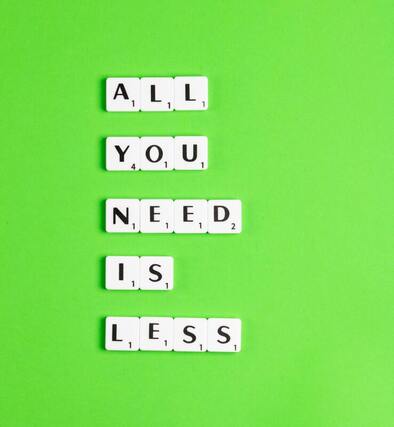 Photo by Edward Howell on Unsplash Photo by Edward Howell on Unsplash Recently, I watched the movie, “The Wisdom of Trauma”, a film made by Maurizio and Zaya Benazzo, co-founders of Science and Nonduality. The movie features Dr. Gabor Maté, a renowned speaker and bestselling author who specialises in neurology, psychiatry, and psychology. If you haven’t watched Dr. Maté in action, you should. I’ve only come across his work recently, and my favourite part of watching him being interviewed is that he doesn’t engage in therapy ‘speak’, if I could call it that. He is a trained physician with a background in family practice and a special interest in childhood development and trauma, and in their potential lifelong impacts on physical and mental health, including on autoimmune disease, cancer, attention deficit hyperactivity disorder (ADHD), addictions, and a wide range of other conditions. According to the movie’s synopsis, “Trauma is the invisible force that shapes our lives. It shapes the way we live, the way we love and the way we make sense of the world. It is the root of our deepest wounds.” In the movie, Dr. Maté presents the viewers with a new vision: a trauma-informed society in which parents, teachers, physicians, policy-makers and legal personnel are not concerned with fixing behaviours, making diagnoses, suppressing symptoms and judging, but seek instead to understand the sources from which troubling behaviours and diseases spring in the wounded human soul. I think the movie speaks to everyone today, as anyone can relate to its messaging. From how trauma can be affected by childhood bonding to how trauma can lead to underdeveloped emotional coping mechanisms, to reasons behind addiction, to destructively riding the wave of capitalism… and then Dr Maté makes a poignant case on healing and self-worth, through the eyes of people he has treated or spoken to.
There are many clips of famous people included in the movie, but one segment from a long interview of Dr. Maté by Tim Ferriss, the famous entrepreneur, really got me. I hope you’ll be able to watch the film if you can, but in that conversation (which you can find here) Dr. Maté asks Tim why, returning from a trip, was he so angry to see his ‘to-do’ list was not done by the person he had hired to do them. Dr. Maté and Tim discusses how there could be a few good (logical) reasons why the tasks weren’t done, like that person might have ADHD and can’t follow through, or the person could have been in an accident, etc. Tim’s automatic emotional reaction was to think that the person who didn’t do the task didn’t care about him or respect him. Now how relatable is this scenario? Dr. Maté says, “We don’t respond to what happens, we respond to our perception of what happens.” What follows the next 3 minutes is that he dissects Tim’s reaction to a trauma in his past, with such precision that you just can’t fault his method! The conversation then ends with how you can reframe a challenging moment from learning from it and then turning it around as a tool for empowerment. Now I know listening to something as simple as this doesn’t seem like a massive realisation for everybody, because I do believe that most of us can and have processed a similar scenario, learnt from our emotional outbursts or reactions in one shape or another. What’s amazing here is however, the link back to an unconscious part of Tim’s memory, in the distant past, to his actions today was so stark – and Dr. Maté was able to unpack these with such meticulousness and returned him back to the present, fairly quickly. Watching that clip is a reminder for us all. 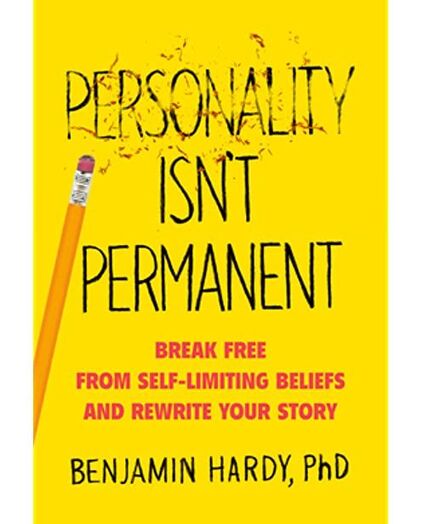 Similarly, Dr. Benjamin Hardy, a psychologist I regularly reference who works in organisational psychology and self-motivation and coaching, also starts his work with trauma. He says that trauma is not what happens to you, it’s what happens for you. In his 30-Day Future Self Challenge (yes, I am a graduate), he doesn’t move through the course without asking his participants to really look at their trauma (or traumas). He provides a ‘trauma transformer’ tool in his work to reframe the ‘it happened to me’ scenario into ‘what can I learn from this’, and uses these as the key starting points for radical self-transformation for self-growth. In his book, Personality Isn’t Permanent: Break Free from Self-Limiting Beliefs and Rewrite Your Story, Dr. Hardy says:
Dr. Hardy is an intense believer in creating your Future Self, and he explains how one can tackle this in his writings, books, and courses. Talking about Trauma – we probably all have had one or more experience(s)Before I make the case for healing from trauma as a key to healing the world, let’s talk about trauma. First of all, trauma is not a bad word! We’ve all experienced “trauma,” whether we think we have or not. I always thought that trauma had to come from a one-off, ‘mega’ shocking experience, but after watching that Tim Ferriss interview, I’m now reassessing what kinds of trauma I might have been subjected to that I hadn’t yet realised! The Wisdom of Trauma movie came with a bit of a booklet on trauma, and states that there are three types: Shock Trauma, Developmental, and Transgenerational. You can download the booklet here. I don’t see myself falling in any of those categories, and subscribe perhaps to a more general definition. Here’s how Dr. Lisa Firestone describes it:
Dr. Maté argues in the movie that all human beings can have the opportunity to have a relationship with their trauma; to acknowledge and then empower. Unhealed or unchecked trauma, coupled with the way our society is being shaped right now, is what is driving the unhappiness, the misery, the overconsumption, the unfulfilled lives of so many, and the destruction of our natural world. Our measures of success are driven by capitalismIn today’s world, our measure of success, or how we measure ‘value’, is often reported as Growth Domestic Product (GPD), which tracks how much money is spent by society, not why. The clear winner here is of course, money. Yancey Strickler, author of “This Could Be Our Future: A Manifesto for a More Generous World”, wrote on Medium that humanity needs to look at a post-capitalist world where we measure our livelihoods by value that is not tied to money. He says,
What drives our materialism, or better yet, why do we desire wealth? The short answer is: capitalism. Capitalism is a system of economic production whereby business owners (capitalists) acquire the means of production (capital) and hire workers who get paid for their labour. Capitalism is defined by private property rights, capital accumulation and re-investment, free markets, and competition. Modern economies in much of Western society today are organised under the banner of capitalism. While capitalism has certainly helped propel innovation and prosperity in modern society, it can also create inequalities and contribute to market failures. The economist and philosopher Adam Smith wrote The Wealth of Nations in 1776, in which he described the birth of a new form of human activity: industrial capitalism (nearly 250 years ago.) Generally regarded as the father of modern economics, the core of Smith's thesis was that humans' natural tendency toward self-interest (or in modern terms, looking out for yourself) results in prosperity. Smith argued that by giving everyone freedom to produce and exchange goods as they pleased (free trade) and opening the markets up to domestic and foreign competition, people's natural self-interest would promote greater prosperity than with stringent government regulations. I have my own views about Smith’s musings – especially his theories of establishing new colonies and ‘causes of prosperity of new colonies’ – because as I see it, as much as a nation can market freely, if you’re ‘industrialising’ Europe, you couldn’t really go very far without some form of colonial exploitation in its future. And guess what has happened? (Insert rolls eye emoji here.) I’m certainly no economist, but outside of my very limited understanding of all of Smith’s work (The Wealth of Nations really should be read in conjunction with The Theory of Moral Sentiments, 1759), the wider accepted consensus of Smith’s capitalism is that he came from ‘cooperative’ capitalism principles whereby if all goes to plan, everyone benefits from distributed ‘wealth’ and ‘prosperity’, and therefore, human being’s overall well-being. Indeed, the alleviation of poverty was one of Smith’s central concerns, as he states, explicitly and repeatedly, that the true measure of a nation’s wealth is not the size of its king’s treasury or the holdings of an affluent few but rather the wages of “the labouring poor.” His version of equity was that or relativity, however – differences in wealth and income can happen, but prosperity is relative. Capitalism in the way that Smith envisaged, has become a bigger beast in societies we operate from today, and have cycled through many iterations; the latest the subject of many criticisms on its shortcomings. One could only describe our newer strain of capitalism, also known as classical liberism (or interchangeably described as neoliberalism, economic liberalism, or economic fundamentalism) as being socially and environmentally destructive. We are supposedly chasing ‘prosperity’ as defined by one narrow goal – wealth – but we are doing so at the expense of the prosperity of flora and fauna, respecting planetary boundaries, spiritual happiness, social capital, and intergenerational equity.
In countries like Australia, where the public sector enterprise of socialism exists to overcome the disadvantages of private sector (or, let’s just call it, business) capitalism, Smith’s original intent for wealth and prosperity for all is under threat, as businesses very often influence state policy and affairs, and the government has failed to properly fund upgrades to infrastructure, provide public housing, drive down income inequality, regulate the media, look after citizen’s health services, and other public ‘good.’ But how did we get here? Smith’s theory on industrial capitalism lacks proper explanations for pricing or a theory of value. This is a little bit more complicated to explain but basically, because of this void, it wouldn’t be extravagant for me to say that since that day, we’ve been pretty confused. (A bit on Smith’s theory of value and explanation of price can be found here.) And here we are, in the evolution of man in the 21st century… we’ve been conditioned to ask what is the value of a product, and subject its price to what we think is its value to us, instead of simply… valuing something that isn’t necessarily a product for our consumption or enjoyment, or valuing a product or venture, not just based on price, but based on a whole swathe of outcomes or purpose. The Post-Modern Capitalist WorldIn the book Sapiens, Yuval Noah Harari writes about the moment when early humans learned how to cultivate wheat, and how human life changed from hunting and gathering to farming. These early humans thought they had tamed wheat, Harari writes, but in reality, wheat had tamed them. From that point on, a huge amount of human energy went into growing wheat. We did whatever wheat wanted us to do. It’s the same with money. We think wealth means we’ve mastered money, but in reality, money has mastered us. We live in a universe of infinite potential, and yet we allow financial ROI (return on investment) to define the limits of what’s possible. The form of capitalism as we know today is not the capitalism that Adam Smith envisioned. It’s bastardised, according to the author Simon Sinek in this interview. Milton Friedman in the late 1970’s theorised that the responsibility of business is to only maximise profit within the bounds of the law, but completely disregards ethics. The good thing is, the idea that businesses need more varied measures of success than simply profit and growth, or valuing these in terms of money, is in more ways than one, already here. Many economists all over the world are acknowledging capitalism, as it exists today – is broken. Moreover, economies cannot become completely divorced from the demands of democratic majorities, and the role of governments.
You might have heard about conscious capitalism, inclusive capitalism, and the Five Capitals. You might have come across doughnut economics, a theory proposed by economist and author Kate Raworth, which suggests that it's possible to thrive economically as a society while also staying within social and planetary boundaries. All of these versions of capitalism advocate for the balancing of the state of capitalism today, to ensure everybody (and animal, and living thing), wins. This 5-minute video by Simon Sinek provides a great overview of how businesses can be a force for good, and provide for the restoration of the principles of capitalism for the sake of society, profit and the planet. Healing ourselves first to curb our own destructionSinek has often been quoted to state that purpose is the very reason to have (a) business. Growth is not a purpose (or shouldn’t be the purpose of a business.) If you break this down, individuals must also then, operate towards their purpose. How do we find our purpose, or our ‘Why’? By healing from our trauma (or traumas.) Surely, none of the reasons for being is to constantly shop, consume, or produce our way to happiness. If we want to heal the world, then let’s heal ourselves first. Join us in our Slow Fashion movement with the hashtags #ConscientiousFashionista and #wardrobetruths on Instagram, and follow us at @fashinfidelity. Tags: #consumerism #materialism #capitalism #happiness #trauma #thewisdomoftrauma #consciousconsumer #healingfromtrauma #conscientiousfashionista #fastfashion #slowfashion #wardrobetruths #fashioneducation #fashion #fashinfidelity If you’re like me and you’re pretty dismayed at fashion’s linkages to enslavement, exploitation, oppression and the cycle of waste and pollution, it’s very likely that we’d often asked ourselves, how do I consume differently? 2637 words, 13 mins read. According to popular resources, the meaning of consume basically is: to ‘take up’, whether it being ingesting food, use resources, buying goods or services, and even emotional energy or thoughts. It originates from the Latin con- ‘altogether’ + sumere ‘take up’, reinforced by the French consumer. What this means is that humans really are just in the business of consuming everyday, aren’t we? I don’t think there is any one day where we don’t consume anything. We’re always consuming something. Humanity comes with an embedded footprint for literally just being and existing – so once you’ve gotten these facts out of the way, then we can move on to the next phase. So, consuming differently with respect to your choices of fashion really is, at the heart of it, a clever combination of aesthetic and ethics. With that in mind, it’s important to remember that there is no one-size-fits-all wardrobe, nor there is an ultimate wardrobe. What we mean by a Perfect Wardrobe, is one that sparks joy (borrowing that term from Marie, thanks), one that moves with body size, shape, and lifestyle preferences, one that is trans-seasonal (instead of trend-led), and one that reflects the environmental and social justice values you carry throughout the stages of your life. So, how do we start? Follow the steps below. Step 1: Design Beats Willpower Have you heard of the 90/10 Law? Ha! Yes, another self-help mantra you think? Well, not quite. But it’s a legitimate thing. Let me explain. It is the rule-of-thumb that says 90% of the results come from the first 10% of the process. Digest that for a moment. Bam! (Full disclosure: there are many other definitions of the 90/10 Law, but this is by far, my favourite.) When designing your Perfect Wardrobe, it’s very important that you consider your wardrobe is fit for the future. You need to start investing in a bit of time and energy in thinking about the full cost of your wardrobe, not in monetary terms, but how does your existing clothes fit in with any additions, as well as their cut or colour. According to Lucy Siegle in her book, ‘To Die For: Is Fashion Wearing Out the World?’, anything you buy from now on must be subjected to greater scrutiny and a keener eye for ethical credentials and possibilities. While a piece may not be perfect in sustainability terms, it must have a level of ethical integrity that YOU yourself must be comfortable with. Are you really concerned about chemicals in the supply chain? Do you want to showcase innovations in fabric and upcycling? Are you an avid supporter of a handful of local designers who you think, with the right amount of support, can influence their own bubble? Do you think of consumption in terms of resources? Compare the way we navigate our wardrobe pieces with the way we navigate our grocery shopping for a weekly meal. We know we need to get the basics right: carbs, fibres, protein, minerals. Add local grocer, calories, mileage travelled, and the type of farming practices, packaging, recyclability, and certifications you prefer -- I call these my ‘true north’ compass. Then there are the ‘wants’ -- like a chocolate bar. You splurge on a Fairtrade, organic, dark-chocolate version. Make it count. Quality over quantity. The same can be said about your Perfect Wardrobe. For me, there are the basics: items that you will constantly wear to protect you from the elements. A good pair of jeans, shorts, trousers, boots, sandals, sneakers, t-shirts, shirt, and a dress. Then there is the fit and quality -- my ‘true north’ decisions: I want anything I own to look great for my body shape, meaning I only purchase designs that I know will work, and feel comfortable for either home, the office, or socialising. I will only buy second-hand, and if I buy new, I would only buy them when I travel to a foreign place, and it has to be something culturally tied to the place, preferably, made by artisans or someone local, and with its provenance (down to the fabric and manufacturing) known. Then, I think about layering for different seasons. The layering combo could be a vintage piece that tells a story, a new item I bought because it embodies zero-waste principles in its making, or something funky I’ve had for a long time that always give me a sense of fulfilment – “sparks joy.” These are what I call the ‘wants’ -- like the chocolate bar – they are not the basics that will carry you throughout the week, but they make you feel great, accomplished, and a little bit unique! In essence, if you already know what you’re ‘designing’ in your wardrobe, it’s easy not to reach for the ‘cheap and cheerful’ stuff, like a terribly sweet pack of candy, that will wreck your diet in no time, much like the cheap and cheerful $5 horribly printed tee that will shrink in the wash, lose its colour, feels like it’ll rip any second, and never make it to your social media profile anyway, because deep down you know its ownership is ridden in guilt! So, design your wardrobe for success! And stick to it! Step 2: Don’t follow stamps of approval blindly This one is a radical idea. When I say stamps of approval, hear me out: it’s easy to let others do the thinking for us. Heck, there’s so many certifications out there on clothing, that none of *really* know what they represent. I mean, I do. Because I’m a professional. But the rest of us? Don’t lie to yourself. You probably have read a few things on social media and online articles, but never actually bothered to take the time to do next-level investigation on it. If you have, well done! If you haven’t, read on. Well, read on, anyways. What I’m advocating is that you read the labels, the certifications, the stamps of approvals, yes. But make up your own mind about how they fit your 90/10 Rule. Remember this? Don’t go and use the stamps of approval to justify your purchase. No. Use your true north compass to direct you to your purchases. The reason I say this is because……… we started the blogpost with the definition of consume. Yes, that one. We are supposed to consume differently. Say that out loud: consume.. dif-fer-rent-ly. Well done. Step 3: Sometimes, try something new Okay, the world has moved on a bit in terms of sustainability and what that means nowadays. I want to introduce you to a term that I first learnt at university (*ehem*, yes, I did study environmental engineering a while back.) The term is Cradle to Cradle. This idea was one that was put forward by American architect William McDonough and German chemist Michael Braungart, in their visionary 2002 book Cradle to Cradle. They argue that products and economic processes could be designed such that all waste becomes fodder for something else. Nowadays, you might have been exposed to a different term, called circularity. Circularity is a system (also referred to as a circular economy) aimed at eliminating waste and the continual use of new resources. The key to circularity is a regenerative approach that means anything we ‘make’ or consume today, can somehow be used again, or over and over, or can biodegrade into something useful for the planet, to ‘regenerate’ another ‘product’ for consumption. (Keep reminding ourselves we are a species that consumes, okay.) This regenerative approach is in contrast to the traditional linear economy, which has a "take, make, dispose" model of production. In the cradle-to-cradle vision of McDonough and Braungart, waste doesn’t exist even as a concept. Every material is either a well-designed “technical nutrient,” capable of being endlessly recycled, or a biological one, safe to eat or compost. It probably doesn’t matter now which idea came first, but what’s important is that circularity isn’t a new concept. What we need to understand, though, is that we must look at circularity in a worldview that doesn’t exclude humans. If you think hard enough, humans form part of the planet’s ecosystem, so finding a harmonious way to co-exist then doesn’t just look at the way humans consume, but how other living beings consume from us, as well. Are you with me? Let me try to explain.
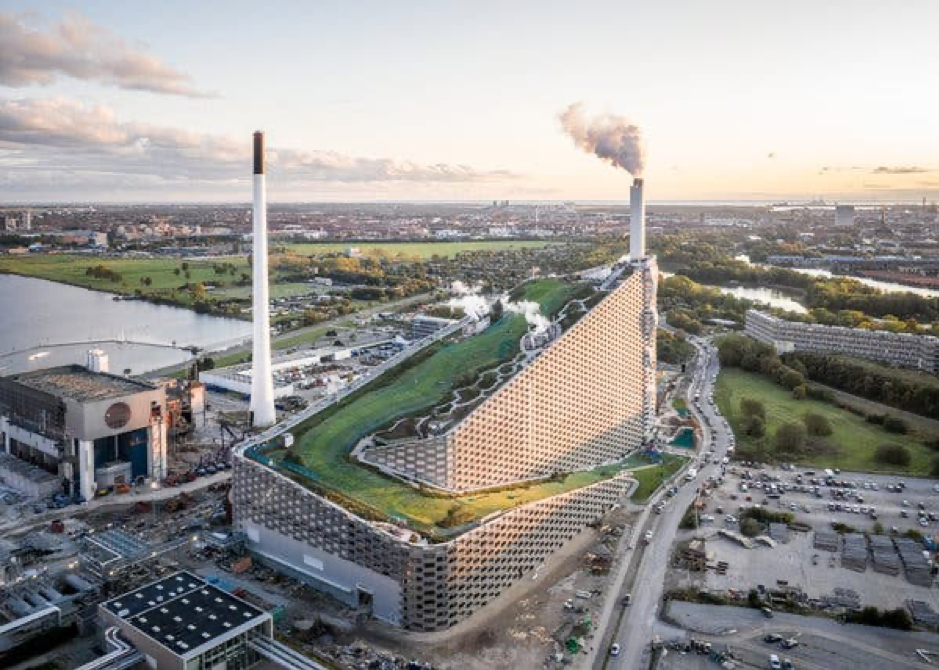 In Copenhagen, Denmark, skiers are able to descend the sloping roof of the Amager Bakke incinerator, which converts 534,600 tons of municipal waste a year into energy—enough to electrify 30,000 homes and heat 72,000. The plant doubles as a recreational destination, with an all-season ski slope, a tree-lined hiking and running trail, and a 280-foot climbing wall, the world’s tallest. (Caption source: National Geographic, Photo: Rasmus Hjortshoj.) In an interview with The Circulars, Alexandre Lemille has this to say about circularity (I would highly recommend reading it): “It’s an economy based on the principle of abundance of flows following natural cycles rules of regeneration. A tree has so many branches, so many leeves and so many fruits. But they were not meant to be produced just for the tree itself but to sustain and feed the surrounding ecosystem: the soil fertility, the birds’ nest, the fauna and the flora. On top of following the rules of the regeneration, it has restorative functions such as capturing the sun light and sequestering carbon. These two functions, the regeneration and the restoration ensures the resilience of the ecosystem it depends on to thrive. I translate this view into business strategies to increase corporate resilience throughout seminars, workshops or training. If their strategy is regenerative and restorative, they will thrive in the medium to long-term. This is what circular economy is about: identifying abundance of flows and to restore them to ensure your resilience is at its maximum.” This is what I meant by possibilities in Step 1. When you look at designing your wardrobe into the future, don’t be afraid to try something new. Ellen Macarthur Foundation came up with a white paper in 2017 called, "A New Textiles Economy", that stated the four key ambitions needed to establish a circular economy in textiles are: "phasing out substances of concern and microfiber release; transforming the way clothes are designed, sold and used to break free from their increasingly disposable nature; radically improving recycling by transforming clothing design, collection, and reprocessing; and making effective use of resources and moving to renewable input." This builds on the work that Dr. Anna Brismar had done earlier, on Circular Fashion. We are growing animal-based leather in labs now. We are making packaging wrappers that are embedded with flower seeds so that we are blooming life where perhaps there isn’t enough. We are taking agriculture waste such as pineapple skin to make plant-based leather. We are taking discarded fishnets from the ocean and turning them into footbeds in new shoes. We are using waterless dyeing processes that excludes the use of harmful substances. There’s so much innovation at the moment in food agriculture, building and housing, energy generation, computer hardware, and clothing, that we need to, simply, cultivate the seeds. So when you see an emerging idea turned into action to how and what we can consume, this is literally--how we can consume differently. Support some of these innovators who are paving the way. I’m sure there was a time in humankind’s history that we thought growing mould to make medicine sounded dumb. All advances in human creativity require pioneers. We must be open to how positive the future can be. |
|||||||||||||||||||||||||||||||||||||||||||||||||||||||||||||||||||||||||||||||||||||||||||
This ability to be nimble and embrace change on a micro level on a continuous basis will determine survivability in the big picture of fashion’s evolution. |
In addition, some of the more ideas that seem a bit crazy to ‘traditionalists’ in fashion now, won’t seem so crazy in the future. So we should start looking at opportunities to realise this, now:
- Why don’t we look at purchasing of responsible materials at-scale?
- Can we look at sustainability as a dominant selection criterion for new suppliers?
- How about incentivising sustainability? For example, financial penalty for negative supplier performance on social and environmental responsibility, and vice versa
- This one is a request that’s quite popular among purchasing executives: There should be no price premium to produce sustainably.
If you’ve been to any of my talks or hear me speak on this topic, you’ll know I feel strongly about fashion lagging in innovation due to the fact they haven’t ‘opened’ their selves up to others ‘unlike’ them. One of the benefits of being a regulated industry is the fact that it is a forcing function to self-innovate. Fashion, not being regulated, has been slow in the uptake of sustainability and hence their ‘sustainability street cred’ is now just getting more traction. It’s definitely starting to change now. But how’s this as an idea: can fashion purposely look to employ cross-industry personnel, maybe more environmental engineers like me? :)
Technology and R&D, apart from being crucial to efficiencies in product design, can also help fashion bridge the old and the new way of functioning. The use of integrated AI (artificial intelligence) for example can realise improvements in demand-focused merchandise planning. The integration of customer insights along the supply chain in real time will enhance the planning and delivery of products, as well as continually eliminate and reduce wastage.
Fashion is known for busting at the seams with creativity, using insights to make beautiful and functional clothing, from a world full of imagination. What if put in the same amount of flair to making dreams happen in a transformative way, giving ourselves constraints to deliver a more sustainable industry? Can we challenge ourselves to make this possible?
In summary
Those brands who act early to remodel the way they operate will pave the way to a successful customer base and social, economic and environmental impact whereas the ones who don’t will be left behind.
As Edwin Keh, CEO of the Hong Kong Research Institute of Textiles and Apparel has said, “There is no silver bullet; rather, there will be a combination of a lot of small innovations and a few radical changes.”
This ability to be nimble and embrace change on a micro level on a continuous basis will determine survivability in the big picture of fashion’s evolution.
Missed out on last week's post? Check out Part 3 of the series here.
Join us in our Slow Fashion movement with the hashtags #ConscientiousFashionista and #wardrobetruths on Instagram, and follow us at @fashinfidelity.
Tags: #sustainability #fashion #fashionsupplychain #supplychain #circularity #ethicalfashion #sustainablefashion #conscientiousfashionista #fastfashion #slowfashion #wardrobetruths #fashioneducation #fashion #fashinfidelity
18/5/2021
What's Eating Fashion Today? 4 Macrotrends and Industry Insights - Part 3: Technology and R&D
Read Now
Problem no. 3: Technology and R&D
Try to imagine this fact for a moment: the way we make clothes hasn’t really changed much in more than a century. We still grow cotton, pick them, turn them into yarn, then textile… and with the exception of mechanised ways to do this, the whole process remains the same.
The same goes for the way we recycle them.
Of course, in the last few decades we’ve introduced synthetics into the textiles mix (which trace back all the way to the discovery of nylon and the pantyhose, if you must know), and technology has enabled us to make yarns quicker, our looms more intricate, and our weaves stronger.
This has made our runners run faster, our athletes break their sweats better, and warmth, coolness, aesthetics, and comfort achieved at many differing price points to suit all sorts of consumers.
What’s been missing in this ‘chase’ to ‘democratise’ fashion to the masses is the element of circularity and end-of-life thinking.
Hence, recycling fibres at scale is, to this day, non-existent.
If you try to research this figure to get more up-to-date info, textile’s R&D spend might have improved a little bit (not that this information is easily found), but this just goes to show how behind fashion is in improving its sector.
Fashion has always been a very laborious industry. Ask yourselves this: how many hands had touched your clothing before you? Point in case: ‘whiskering’, or the act of ‘fading’ certain areas of your jeans to make them look worn, are done by hand. Yes, one by one, each pair, gets a human-operated treatment. (Not to mention the stages prior or after.) Do you think it’s time some modernisation can happen throughout this process?
What’s been missing in this ‘chase’ to ‘democratise’ fashion to the masses is the element of circularity and end-of-life thinking. Hence, recycling fibres at scale is, to this day, non-existent. |
I believe in the realm and technology and R&D, these solutions could be accelerated and become mainstream, now:
- We could accelerate the sourcing of responsible fibres, that considers material degradability, and come from renewable resources
- Cleaner, best-proactive manufacturing technologies should be adopted more (e.g. no hazardous chemicals, waterless processing)
- Virtual sampling should be the norm for most companies, to reduce pre-consumer textile waste
- Zero-waste pattern-making should be incorporated in university fashion and textile degrees to prepare our designers for the future of fashion
- We need a shift in how our ‘assembly line’ works – by adding newer and more updated technology on the factory floor, we gradually upskill staff to add more value in the fashion supply chain, and eventually improve fashion from the ‘inside’
Here are some examples of innovators in this space:
- A lot of players are sourcing alternative textile feedstocks, mostly wastes from food and agriculture. Check out Biomimicry Institute, Algix (Bloom Foam), re:newcell, Mirum
- DyeCoo is a dyeing application technology that reduces chemical loading into the finishing process, and is less harmful that traditional means. DyeCoo’s CO₂ technology is the world’s first 100% water-free and process chemical-free textile processing solution
- Zero-Waste Patternmaking has not quite made it into the syllabus of fashion yet, but ANGUS TSUI has been making zero-waste clothing for a while, as well as Zero Waste Daniel (ZWD)
- Tukatech 3D is a software that mimics the flow, weight, and look and feel of clothing in a virtual setting, and has been used by a number of fashion brands to reduce sampling inefficiencies and shorten product development times. The software showcases 3D fit life-like digital collections, eliminating the need for physical samples.
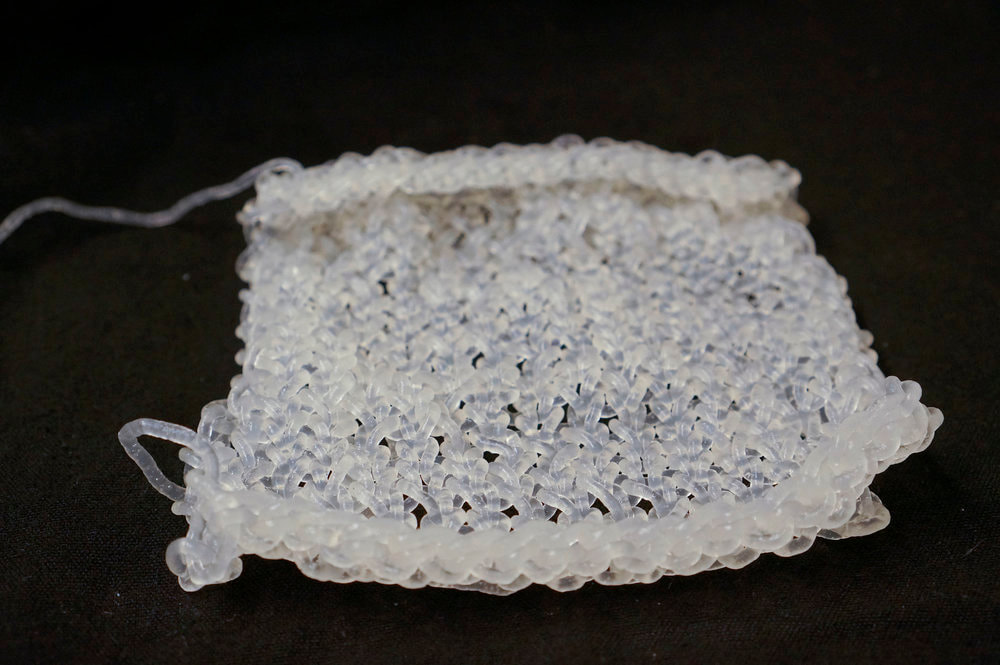 Materials made from kelp, by AlgiKnit
Materials made from kelp, by AlgiKnit
Stay tuned for next week’s continuation of the series!
Missed out on last week's post? Check it out here.
Tags: #researchanddevelopment #technology #fashiontechnology #techinfashion #sustainability #fashion #fashionsupplychain #supplychain #circularity #sustainablefashion #conscientiousfashionista #fastfashion #slowfashion #wardrobetruths #fashioneducation #fashion #fashinfidelity
7/5/2021
What's Eating Fashion Today? 4 Macrotrends and Industry Insights - Part 2: Radical Transparency
Read Now
Part 2 of 4
921 words; 4 min read.
Problem no. 2: Radical transparency
Did you know that there is no common language for sustainable fashion? No shared vocabulary among industry practitioners, therefore, no joint understanding of what being ‘sustainable’ actually is? |
But before we even get to this stage, no one sees the textile factories. Textile manufacturing workers prepare natural and synthetic fibres for spinning into yarn and manufacture yarn into textile products that are used in clothing, in household goods, and for many industrial purposes. These textiles are chemically processed, washed, dyed, and finished. These are often back-breaking work, dirty, unpleasant and very much labour-intensive.
Don’t get me wrong -- the welfare of workers behind sewing machines are important, and fashion has a lot to answer for in this regard. Consider your textile mill workers, too, however: most millhands go to work early in the day and labour for ten to twelve hours straight, amid deafening noise, choking dust and lint, and overwhelming heat and humidity. It was not uncommon during the Industrial Revolution that mills would employ whole families, including children. Children workers in mills are a thing of the past now, but the way textiles come together as fabric really hasn't changed very much.
We know consumers have smartened up. It’s no longer enough to display a ‘list’ of Tier 1 suppliers, without really acknowledging the safety conditions of your workers, or their treatment and welfare, and what types of third-party certifications are associated with your business or suppliers to assure customers of your commitments. Consumers are entitled to know more, and really, this is only the beginning of being transparent about your supply chain.
One of the things that I am not very impressed about is that consumers have to do all the work of ‘understanding’ where fashion or apparel brands sit in the sustainability ‘spectrum’ -- instead of this sort of information being a standard.
Did you know that there is no common language for sustainable fashion? No shared vocabulary among industry practitioners, therefore, no joint understanding of what being ‘sustainable’ actually is?
No wonder consumers are confused!
What if we had a label on our clothes that broke down their ‘ingredients’? Much like how you would have a breakdown of fats, sugars, carbohydrates and dietary fibres in your yoghurt, the same should go for your clothes. ‘Apparel footprinting’ should really be universal and standardised. When we purchase our clothes, after we’ve decided their size and fit are right, and the price range is within our budget, the next thing that would be equally as important is its footprint. This could be a label attached to the clothing. Chemicals used, water, energy, impact on climate, living wage paid, fair conditions, and the like. It’ll revolutionise the way people buy fashion, don’t you think?
- Compliance. Environmental standards throughout emerging markets could match environmental regulation and standards that we have in brands’ parent countries, i.e. Australia, USA and Italy.
- Stop greenwashing! Brands need to try harder to be honest.
- Product footprint ‘label’ needs to be standardised and universal.
- On the social justice front, globally harmonised standards for social auditing for normalised audit collaboration will ensure better transparency on equity and equality.
- Fashion, textile and apparel could look into industry-level wage agreements; and
- Brands could co-invest for sustainability improvements with their manufacturers and textile mills.
We all know that fashion is not regulated, but as consumers are no longer complacent, fashion, textile and apparel should be ready to expect regulation and fines in the near future as governments catch up.
One idea I’m really passionate about is a bottom-up approach of ‘cleaning up’ fashion. What if the above are driven by manufacturing facilities? The supply chain would be so much better, right? Not only that, but the power balance that almost always favours the brands could finally equalise and bring about better outcomes for production planning, worker welfare, and sustainability and the environment.
Missed out on last week's post? Check it out here. Stay tuned for next week’s continuation of the series!
Tags: #radicaltransparency #sustainability #fashion #fashionsupplychain #supplychain #circularity #ethicalfashion #sustainablefashion #conscientiousfashionista #fastfashion #slowfashion #wardrobetruths #fashioneducation #fashion #fashinfidelity
4/5/2021
What's Eating Fashion Today? 4 Macrotrends and Industry Insights - Part 1: Demand Volatility
Read NowIf you’re reading this blogpost then you would have some knowledge already about the origins of fast fashion and its predecessor--high-street fashion —but to recap, I’ll give you a quick history lesson.
What does globalisation have to do with fashion?
After World War II, many nations looked to break down barriers of trade between nations, promote free trade, and set up global organisations. The Bretton Woods Conference in 1944 created the World Bank and the International Monetary Fund.
But since the 1980’s, one powerful phenomenon has taken over the world: The Internet.
Globalisation, then, in its current format, was largely the work of powerful multinational corporations (MNCs) that spanned all over the globe, together with mass media. Multinational giants have profoundly restructured the world economy, global culture, and our lives on an individual level, without us even realising it.
Of course, there are both negative and positive consequences to globalisation, and fashion production, retail, marketing, and consumption are as much caught up in this web, along with other industries such as automotive, consumer electronics, and agriculture.
Supply Chain Challenges and Opportunities in Fashion
We know now, that with increasing responsiveness about social and environmental justice across many developed and developing segments, this is problematic and will continue to be so, unless fashion completely rethinks its supply chain strategies.
The problem with the fashion industry is that its supply chain is completely out of control. |
The State of Fashion and Driver for Sustainability
However, now comes the new paradigms: population growth and disposable fashion.
(I say disposable fashion because the term accurately reflects the apparent quality of the garment, and because nowadays you can make a fashion item ‘fast’, but not necessarily from exploitative means. I’ll save that topic for another day.)
You must be familiar with the Sustainable Development Goals, yes? If you remember, the first goal aims for Zero Poverty, the second for Zero Hunger, the third for Good Health and Wellbeing...... and the list goes on.
In terms of priority actions, I feel the top three pretty much sums up what’s truly important in the world, so going back to the water-food-energy nexus: do we use water, land, and minerals to grow food, provide clean water and shelter, and generate energy, or make clothes, shoes, and accessories?
- Fibre production—from growing crop, rearing sheep for wool, harvesting silk, and reducing a petrochemical to fibrous yarn
- Clothing production—as you can imagine, yarn needs to become textile, and textiles require dyeing and finishing with all sorts of treatments, and once that’s sorted, humans are required to piece panels of clothing together, in Cut-Make-Trim facilities, with their bare hands and tired bodies in not-so-flash conditions
- Use—this one’s interesting. Consumers often forget they are actually part of the fashion supply chain! Consumer care is important in this part of the apparel lifecycle
- After use—once garments are no longer ‘loved’ or needed, they are normally landfilled or incinerated (about 87% of what’s produced)
What’s eating fashion today
You know what’s easy, though? Reading this article, because I have actually done this, and I have managed to sum up fashion’s greatest challenges and opportunities.
Herewith I present to you four macrotrends that are eating fashion.
1. Demand volatility
2. Radical transparency
3. Technology and R&D
4. Purchasing Model
Problem no. 1: Demand volatility
This, coupled with a very dynamic market and market uncertainty can create problems of either overstocking or understocking. (Can you guess why we have an enormous waste problem in fashion?) The MNCs we mentioned earlier: the likes of Inditex group, H&M, and Uniqlo, that employs lean supply chain management strategies, who have offshored their manufacturing and sourcing to Bangladesh, China, and India where they have enjoyed low-cost labour as a competitive advantage, are truly affected by demand volatility, where seasonality dictates trends. Now that we’re either recovering or actively fighting the COVID19 pandemic, we have more unknowns.
When product demand is unpredictable, there should be a strong focus on matching strategy with the uncertainties in demand and supply.
It’s well-known that some of the lean supply chain management practices these big MNCs adopted were focused on decreasing cost measures and improving profit margins. They’ve enjoyed the competitive advantage of sharing resources and materials, and collaboration of specialised skilled labour and manufacturing facilities but in the current context, this can be argued as being ‘wasteful’, such as having communication breakdowns for ordering and sourcing.
What are the solutions? I have three words for you: internal process improvements, where companies engage in flexible production structures. How?
- End-to-end process efficiency—where supply chain risks are looked at from both areas of upstream and downstream relationships
- Real-time information of inventory levels between manufacturers and brands to better forecast demand
- Enhanced communication systems (advanced analytics, big data) and relationship configurations with greater visibility of information between entities throughout the supply chain to expedite responses to changes; and
- Cross-functional collaboration in your own organisation.
In summary, companies should focus on customer-centric, agile product development to meet customer demand, not minimising the price of supply.
In this mode, companies must accept that change is a constant. Some practical examples:
- Zara model but instead of ‘creating’ trends, work with what’s available within manufacturing regions
- Supply-driven textiles and finishing, not demand-driven
- Creating limited and creative products.
Enjoyed reading this post? Check out Part 2 of the series here.
Tags: #sustainability #fashion #fashionsupplychain #supplychain #circularity #ethicalfashion #sustainablefashion #conscientiousfashionista #fastfashion #slowfashion #wardrobetruths #fashioneducation #fashion #fashinfidelity
2989 words; 14 min read.
But when Gen Zs and millennials started representing a huge portion of the fashion consumer group, they introduced their own values around social and environmental issues along with their spending habits. With nine in ten consumers saying they’d like these issues addressed, more brands are prioritising transparency across production and manufacturing processes. Now, Sustainable Fashion finds itself a formidable part of the global fashion industry with its impact only expected to rise.
Sustainable fashion designers hold a unique influence on the way fashion can be supplied and demanded. So, if you’re up for the task, keep reading.
"...being upset by the damage but then also being excited by the solutions" - Tess Whitford, Redress 2018 Sustainable Fashion Award winner |
What exactly is a Sustainable Fashion Designer?
Sustainable fashion designers know that the fashion industry is inherently unsustainable, and it can take years of being in the industry to actually see this unfold before your eyes. Sabi, Tess and Kate say they all shared this same experience.
“I was confronted with the realities of the industry and its consequences,” Sabi says. “I think, more than understanding the importance of sustainability, it was about first coming to the awareness that what we’re doing is unsustainable.”
Once you do, however -- cross that bridge into the realities of the fashion industry -- what you find on the other side are endless and revolutionary solutions. It’s a kindling mixture of feelings, “being upset by the damage but then also being excited by the solutions”, as Tess felt.
The role of a fashion designer has seen a shift since processes that used to be behind-the-scenes have now transpired through the media and consumers are becoming more aware of how fashion works. As designers, it’s important to understand those expectations of your consumer and be able to meet them on a level that you’re comfortable with.
Kate says, “If your values align with ones discussing sustainability, then your role might involve education of your consumer, discussing the processes embedded in your practice, championing the people involved in your process and explaining how garments come to be.”
Being a sustainable fashion designer means that most of the time, you have to start by working backwards, because you consider the process behind each garment and ideally, even its afterlife. And that means, there’s a lot that can be addressed. All across the value and supply chain, sustainable fashion designers must map out the potential social and environmental impacts of their work. These can include efforts related to climate, human rights and even biodiversity.
Although there is no way to be 100 percent sustainable (yet), the bright side is that there are many different ways you can learn from depending on your own values. If the use of chemicals is what concerns you, focus on sourcing organic materials. If it’s fair wages, maybe consider producing locally. And if you’re passionate about reducing textile waste, learn to upcycle or create zero waste patterns.
Tess, who actually won the 2018 Redress Award with her zero waste pattern collection, says being a sustainable fashion designer is an element of being a rebel. “My whole thing with zero waste patterns is kind of like, ‘What happens if you just throw all the rules out?,” Tess says.
Whereas conventional pattern cutting has definite guidelines around what’s acceptable or not, zero waste patterns fuses designing and patternmaking into one by using 100 percent of the fabric. No excess, no waste.
“Even if it doesn’t work out, you’ve learned that it doesn’t. That’s sort of the process that I enjoy and I think is important for innovative design in general and also sustainability,” Tess explains.
True enough, sustainable fashion designers are always challenging the conventional ways of fashion with out-of-the-box thinking and creative solutions, which can only get better with improved technology. Research, experimentation and collaboration are key elements to what makes sustainable fashion so innovative.
In the end, what you bring to the table as a sustainable fashion designer depends on the issues you think should be addressed, to challenge the ideas around it and to be able to communicate that as transparently and honestly as possible through your work.
“The ones that do a really good job and that are able to connect with their markets do so because they really believe wholeheartedly in their message and they believe that the industry does need to change,” Kate says.
In summary, a sustainable fashion designer is a fashion designer that turns the traditional fashion designer’s approach upside-down and creates multiple values to their function. Designing now means there are constraints -- whether it be geolocation, cutting floor waste, fair labour, or materials -- this way, sustainable fashion designers operate outside of just creating good, well-designed clothes and apparel that appeal to the masses. They contribute to problem-solving by product, and also, by influencing thought. How’s that for making an impact!
What sustainable fashion courses are out there and are they any good?
Sabi agrees that education doesn’t have a place in the future if it doesn’t move with time. “What we need to educate them for is the problems of our industry that they need to be part of changing and fixing… so they don’t become obsolete,” Sabi says.
“What I think is key to innovating and developing for the future, especially in fashion, is to be exposed to different ideas, ways of thinking, and methods so that you start to figure out your own impact. Education allows that process to happen,” Kate concurs.
Many fashion courses have been reflecting the conscious work towards this goal. Whilst big institutions like Parsons School of Design and London College of Fashion are definitely desirable, I promise you won’t have to burn a hole in your (or your parents’!) pocket just to get quality education. Here are just some local fashion courses that can benefit any sustainable fashion designer wannabe:
Bachelor & Diploma of Design (Fashion and Sustainability), Collarts (Melbourne)
Just early this year, Collarts introduced this program, making its mark as Australia’s first tertiary fashion degree with sustainability integrated and considered throughout every phase of the curriculum.
Expert, academic and head of fashion at the college, Dr Rachel Matthews says the degree was built on “the idea of design as a problem solving activity” (which Sabi tells me is something we often forget; design is all about problem solving) by teaching students new methods on design and new ways to consider a product’s lifeline and improve the fashion supply chain.
“Currently, there’s no other course like it being offered in Australia. It’s an exciting and immersive course that’s perfect for people wanting to shape the future of the industry. Students will learn how to create desirable fashion with a focus on sustainable, responsible and ethical consumption,” Dr Matthews said.
Bachelor of Fashion and Textiles (Sustainable Innovation), RMIT University (Melbourne)
If you’re keen on getting an early start into the fashion industry, RMIT should definitely be on your radar. This undergraduate major for fashion students, which Kate is currently teaching, focuses on ethical and sustainable practices with digital technologies and partnered projects at the core of learning.
“RMIT strongly advocates for those types of projects and to have industry involved in the students’ experience,” Kate says, “It helps them to understand that these issues we are learning, in a theoretical and practical sense, are backed up by potentially really important figures in the industry who are also saying the same thing.”
Not just to help you contextualise your learning, Kate believes it’s also an important step for you to learn how to collaborate with people outside of the university as well as your peers, colleagues and studio leaders.
Bachelor of Fashion, Box Hill Institute (Melbourne)
Although not technically a sustainable fashion course, we’ve seen great things come out of this program including fashion graduate Tess themself. The program is an overview of the skills and knowledge in fashion including marketing and business, but also presents a third year project, titled Fashion Futures, that invites students’ own ideas around innovative and sustainable efforts.
“That class was about sustainability and technology in fashion, and was the first time I tried zero waste pattern cutting,” Tess explains, “That was my introduction to more about those issues and what got me into everything I do now.”
“It was a very industry-focused kind of course, they were preparing us to actually have jobs when we graduate.”
You’ll also be able to indulge in their Creative Design Hub located at their Nelson Campus. Equipped with sewing rooms, patternmaking tables and a photography studio, the space is perfect for creative flow and collaboration between students of photography, graphic design and of course, fashion design.
Bachelor of Design in Fashion and Textiles/Bachelor of Creative Intelligence and Innovation, University of Technology Sydney (Sydney)
This combined degree intertwines practice-oriented learning and critical thinking around real world problems and possibilities. So, if you’re looking for a course that covers all the bases of fashion and innovation, this is the one.
While the fashion degree equips you with necessary skills and its own practice around sustainability, the Bachelor of Creative Intelligence and Innovation (BCII) can take you that one step further by teaching you how to identify, understand and develop solutions to the most complex issues that face your discipline and industry. By utilising knowledge across multiple disciplines, and can often include students of other majors, what you get in the end is the chance to maximise your potential.
If you’re feeling unsure on how this mix can benefit you, see what past students have to say for themselves in the video below.
In partnership with Coventry University in the UK, these degrees have integrated global sustainability practices, and to give you that unprecedented advantage of designing and marketing, encourages students of both programs to work closely with each other.
Sabi’s own classes teaching the International Fashion Business program have tried to focus on collaboration across different industries, not just fashion. “I think that is the key to solving this puzzle. It’s collaboration outside of this one industry… and finding solutions that can be applied across various industries.”
Recalling her classes, Sabi tries to cultivate this mindset by inviting students to visit technology and engineering companies currently making waves towards sustainability.
“I want to show them how this kind of technology is already part of the industry that they’re working in. And in many ways, that is what’s helping solve those efficiency and wastage issues,” Sabi says. “As fashion designers, we have to be just as excited by a new cool technology as we are by a new hot fashion trend.”
Bachelor in Fashion Design Technology (Hons), Taylor's University (Kuala Lumpur)
Prioritising the advent of new technology within fashion design is not the only perk of this degree, you’ll also get to work on projects alongside Kuala Lumpur Fashion Week (KLFW.) Hardly surprising considering the co-programme director, Andrew Tan, is also the founder of KLFW.
The involvement of KLFW means that their students are pushed to be “more forward-thinking with an industry driven mindset”, something highly valued in any sustainable fashion designer looking to make a positive impact.
Set up with its own on-campus design studio furnished with industry-grade machines and the latest tech, you will also be happy to hear that this program is home to Malaysia’s first co-working fashion studio, Mayamode, which means you get to interact and engage with many other designers along the way.
“Be open to any opportunities beyond what you thought was where you were going to end up, because every experience counts and makes you wiser. Network and connect, even in the less obvious places." - Sabi Sohrabi, Raffles Design Institute |
Tess suggests also looking into online classes and workshops, which they have themselves utilised in setting up their sustainable fashion brand, Pendulum Studios.
“I enrolled in a fashion business course by Fashion Equipped,” Tess says, “Even though a lot of it I was already familiar with [from university], that course went into a little more depth and sort of broke everything down... It was a really useful resource for me.”
Sabi agrees that with living in an age of technology, you can pretty much Youtube or Google most things. “There are even universities offering cheap online courses that you can learn from around the world through Coursera or Udemy. You can hop online and do a three-week course,” she says.
With the abundance of programs available, Kate always advises people to do the research and have a look at what’s on offer to you. Look for a course that’s fun and interesting; one that caters best to your own passion and vision as a sustainable fashion designer.
How do I be successful and what does success look like?
Literally meaning ‘the achievement of a particular aim or goal’, success is relative and it all comes back to your own intentions.
“For me, as a teacher, to define success for my students would be irresponsible and unethical,” Sabi says. “Something I’ve learned... is that you can only make people aware of their own abilities and strengths; letting them define what success means to them and giving them tools to achieve it.”
And being someone who values the process more than the end result, it’s important to remind yourself that the journey to success is just as valuable.
Kate says, “A lot of the times we don’t really get to that end place that we envision for ourselves in the beginning. Our paths can split off into a variety of different mini journeys, and I think that's just as important,” Kate says.
It’s not uncommon to get sucked into the whole ‘constant climb to success’ rhetoric, but success isn’t often a straight line.
Sabi
“Be open to any opportunities beyond what you thought was where you were going to end up, because every experience counts and makes you wiser. Network and connect, even in the less obvious places. That said, don’t compromise your dreams and goals on the first whim of offer. Stay true to what you feel is yours.
“Be hungry for knowledge even after you graduate. Unfortunately, the education that we offer today is still lacking in some aspects. It’s an industry where you’re expected to be a maverick of all things as well, and a lot of crossovers happen a lot of the time. Upskilling is important.”
Tess
“Have a sense of perseverance and keep a level-head. You have to be able to wear a lot of hats, juggle tasks and prioritise without getting overwhelmed by the scale of what you're doing. It's useful to keep an eye on the big picture while working on specific tasks.
“It's really important to have fun with what you're doing. It's a hard thing to do and if you're not excited, it's so much harder. Get really nerdy about all the research and the tech and all the cool stuff you can do with sustainability. Dig into the good stuff.”
Kate
“I think it's really important to be reflective and understand the process or journey in itself is incredibly rewarding. Remain inquisitive, always be curious, ask questions and be willing to learn.
“Not all of our students are school leavers - they come from a diverse range of experiences and backgrounds - we’ve got a lot of mature aged students too. Always believe that you can learn more, because it helps to encourage you to always question, not only practices within industry, but also what you could do better or more of. It leads to interesting conversations, amazing innovations and great reflections on things that maybe didn't work out.
“Make sure that you’re listening to the people around you and the situations that you're in so you remain present and aware of what's going on.”
If Sabi, Tess, and Kate can attest to one thing: it’s the comfort of knowing that intrinsic altruism can go hand-in-hand with financial reward, too, and there’s no shortage of demand for cultivating game-changers in this space.
Sustainable fashion has definitely pushed itself into the crowd of common conversations, and together, we can push its way even further into the spotlight. Designers hold the unique power to create impact and communicate across both consumers and producers. So, go out there and save the world.
Shareena is a journalism graduate with a passion for stories about the arts, culture, social issues, and any combination of the three. She is personally interested in collaborating with other like-minded people, and loves interviewing people on all the above. She is currently a producer and content manager at the podcast, Conversations in Colour.
Tags: #sustainability #circularfashion #circularity #ethicalfashion #sustainablefashion #fashiondesign #fashiondesigner #sustainablefashiondesigner #ecofashion #greenfashion #responsiblefashion #recycling #MelbourneFashion #Melbourne #MalaysianFashion #Malaysia #KLFW #conscientiousfashionista #fastfashion #slowfashion #wardrobetruths #fashioneducation #fashion #fashinfidelity
The week that was
A first of its yearly incarnations, KLFW 2020 was all digital - inviting audiences to watch online from all over the world. Not only that, Hatta Dolmat has marked himself as the first Malaysian fashion designer to design a sustainable high fashion range at the event. And, a first for Hatta himself, the collection will be his opening endeavour into addressing environmental issues, not only within the fashion industry but also with the country’s current lack of solution to textile and plastic waste. About 63% of the world’s clothing and apparel are made of polyester. If you haven’t caught on by now, yes, polyester equals plastic.
“[In Malaysia,] we have been struggling with uncontrollable plastic waste management for decades and now, textile waste is aggravating the problem. There is no doubt that ‘fast fashion’ and the local fashion industry are contributing to textile wastes in landfills,” Hatta says.
“Therefore as a fashion designer, it is my responsibility to not just spread awareness on this issue, but to also show the sustainable methods of clothes making to industry players.”
A study by green group WWF last year found that Malaysians were the biggest consumers of plastic packaging among other Southeast Asian countries, including China, Indonesia, the Philippines, Thailand and Vietnam. At almost 17kg of plastic consumption per person each year, devastating news of plastic waste washing up along local shores alarms the need for a proper solution and overwhelming support to mitigate plastic pollution.
Although ranking highest in waste collection as well, the report says that Malaysia’s lack of infrastructure to recycle large amounts of waste is concerning. Adrian Choo, leader of WWF-Malaysia’s sustainable markets program, says “the root cause of plastic waste leakage into the environment is the lack of sound waste management systems.”
Fabric waste is also plastic waste
The HD Monogram 20/21 collection is released in conjunction with Hatta’s 15th anniversary since his debut, merging together with his early interests of making accessories, such as bags, bucket hats and shoes, out of his fabric remnants. Now, he wants to take that further by designing a whole collection using fabric composed of recycled plastic bottles and organic fibre, commonly called recycled polyester or rPET (recycled polyethylene terephthalate.)
Polyester comes from crude oil which has been known to cause significant damage to the environment during its extraction process, and as a result of its high durability, can take 700 years to decompose. Invented during World War II due to difficulties in obtaining cotton, polyester has bloomed as a versatile fabric that features anywhere within fine apparel and activewear through to UV-rated outdoor gear and cleaning cloths. Polyester fabrics have always been strong, resistant to stretching and shrinking, easy to clean, quick drying and resistant to wrinkles, mildew and abrasions.
Recycled polyester is thought to be a more sustainable option because unlike virgin polyester, it uses plastic that has already been created, such as plastic bottles. These plastic bottles are collected and sorted before being broken down into small flakes. Once cleaned, they are chemically treated into more formed, smaller pieces called pellets or chips. The pieces are melted down, eventually being extruded and bundled into a yarn which can then be woven into fabric.
Not only does this process require less energy and water than the production of virgin polyester, it possesses a lower carbon footprint than both nylon and cotton. It also ensures that plastic, which would otherwise end up in landfills, can be continuously recycled and repurposed, creating an almost infinite lifecycle.
Kloth Lifestyle comes to the rescue
Whilst SWCorp provided their vast data on the subject, the sought-after fabric was provided by Kloth, a social organisation aiming to keep fabric and plastic out of landfills by pioneering a circular economy model.
“It proves that, actually, people do want to recycle. It’s just that they don’t have a platform or outlet that they believe or trust,” Suzy says.
Since then, they have been trying to grow their organisation to become more adaptable to the agile and volatile fashion industry, and more accessible to everyone, which they believe is the reason for slow progress.
Sarah explains, “We’re trying to capture the whole value chain that is needed in terms of plastic and fabric circularity. So, we thought, ‘What can we do? How can we help and expand from this one scope?’”.
This ambition has turned their initial project into a multifaceted company, harbouring their other movement brands including Kloth Cares for fabric recycling, Kloth Wear for their product brand of fabrics, textiles and products made from recycled polyester, and soon-to-be launched Kloth Textile, where they work with various suppliers to source the finest quality textiles for clients to design their own products.
Suzy explains that at the end of the day, they want to provide a ‘one stop centre’. “If you want to do something - be it donating, buying or selling - we have an outlet for you. That’s what we’re trying to do,” Suzy says.
They say many of their successes have come from taking the time to explore different possibilities and particularly with Hatta - serendipitous opportunity. Kloth tells me that when they had first met Hatta last year, they introduced him to their Kloth Wear brand. However, when they were expected to get the fabric, the global pandemic had forced international imports to be temporarily closed. All they had were 35 metres of white recycled polyester fabric.
To their surprise and pleasure, Hatta immediately fell in love with it - holding the roll of fabric up excitedly (see picture below), which Kloth released on their social media accounts.
Then, Hatta quickly got to work; which didn’t come without its own struggles. In the miniseries documentary of his KLFW 2020 journey titled ‘Hatta Dolmat The Sustainable Project’, he shows his design process throughout the collection including his initial trials with the fabric. Hatta says it took months for him to even “get the right colour and learn the behaviour of the material”.
Suzy also lets me in on a little know-how saying, “Hatta’s design was supposed to black in colour, but it turned out greyish black. It's because the fabric cannot absorb colour as well as virgin polyester fabric [through digital printing].”
While he had planned to incorporate flora and oceanic designs into the collection, he quickly decided on a more sleek and forward-thinking design utilising digital printing on the fabric.
“HD Monogram 20/21 is not just another collection… it carries a whole new meaning and responsibility towards the sustainable future. That’s when I thought that I needed to change the direction towards a more modern and high fashion look. I want to show that recycled materials can be high-fashion,” Hatta says.
"Fashion is about responsibility. We need to cure the world." |
Fashioning Responsibly
With a platform like KLFW, Suzy and Sarah both think that Hatta’s collection can create a huge positive impact on the way future fashion designers can prioritise sustainability.
“Because of his influence and also the support from the association (KLFW) whereby the most influential designers are all under the same wing, I believe sustainability in practice will cascade down to young fashion designers and also move laterally in his industry as something exemplary and must be done,” Suzy says.
As part of his ongoing commitment to raising awareness on sustainability, Hatta will also launch the Kuala Lumpur Young Designer Award (KLYDA) in 2021. He explains that while exposure to the sustainable movement among fashion students is low, he hopes that this can be one way for local students to be educated about sustainable and ethical fashion.
“They are the ones who need to get the idea of sustainability,” Hatta saya. “We are also working closely with the Ministry of Higher Education to make amends and make improvements on the local syllabus.”
This collection will no doubt create ripples throughout the local fashion industry, which until now has been pretty quiet about sustainability. And, with the combined and collaborative efforts of similar organisations like Kloth and SWCorp, the beehive can only get bigger.
Hatta asserts, “I want other designers to see that if I can assemble this together, they’re able to do so too. I want the government to see that the fashion industry can also contribute to solving waste management issues. I want the public to learn that the fashion industry is not just full of glitz and glam. It’s contributing to the circular economy of the nation as well.”
Tags: #plasticbottles #plasticwaste #keepfabricoutoflandfills #sustainability #circularfashion #circularity #ethicalfashion #sustainablefashion #ecofashion #greenfashion #responsiblefashion #recycledyarn #recycledfabric #recycling #MalaysianFashion #Malaysia #KLFW #DigitalKLFW #HattaDolmat #conscientiousfashionista #fastfashion #slowfashion #wardrobetruths #fashioneducation #fashion #fashinfidelity
1888 words, 9 min read.
Luxury. Excess. Escapism. Half accurate approximations of French designer names.
Whatever the specifics may be, bottom line is – Haute Couture exists within a bubble of its own.
With one-of-kind handmade designs costing in excess of $100,000, nothing about it seems accessible and, to many, represents the worst excesses of the fashion industry. Something to be enjoyed by out of touch elites that have little concern for conversations on the impacts of the fashion industry. But what if I were to tell you that Haute Couture could actually be the future of #sustainability?
Now hear me out, I know what you’re thinking – surely nothing this outrageously overpriced and wasteful could ever be considered sustainable. But taking a closer look at the practices of the industry might actually reveal that it has more in common with the slow fashion movement than you think.
Oh, the Luxury
By its nature, Haute Couture exists outside of fast fashion’s built-in obsolescence. Couturiers traditionally produce only two collections a year centred around garments that emphasise timelessness. It embodies an approach to clothing that is diametrically opposed to the fast fashion’s cheap chic aesthetic which instead thrives on fast production cycles, limited durability and a consumer mind-set that embraces disposability in exchange for trend-led designs intended for short-term use.
Don’t get me wrong – producing exorbitantly priced garments not meant for everyday wear for the select few might not pass muster as eco-friendly. But Haute Couture’s practices do resemble what has come to epitomise slow fashion’s approach to sustainability, defined by a similar focus on carefully selected materials, more considered labour practices, smaller production batches and an emphasis on longevity in terms of both design and quality. And lately, Haute Couture has been taking its commitment to sustainability even further, offering a potential roadmap for a more radical rethinking of fashion’s practices.
...Haute Couture’s practices do resemble what has come to epitomise slow fashion’s approach to sustainability, defined by a similar focus on carefully selected materials, more considered labour practices, smaller production batches and an emphasis on longevity in terms of both design and quality. |
Ready-to-Wear gets inpired
Xuan-Thu Nguyen, founder of Paris-based Xuan, is similarly inspired by the possibilities that re-using traditionally discarded materials holds. Her commitment to this was already seen in her Fall/Winter 19/20 collection which was crafted from 90% deadstock. She’s decided to take this practice further through the creation of her new line, 1/Off, which works exclusively with vintage pieces to create upcycled garments. To Nguyen, this focus on upcycling should be a given. “We shouldn’t just throw materials away,” she told Vogue. “It’s still beautiful so why not use it?”
For van Herpen, the excitement lies in finding new ways of developing more eco-conscious fabrics and innovative ways of conceptualising design to increase the versatility of garments. She has collaborated with numerous architects and scientists in the past to do this, looking at how a single garment can take on multiple forms through kinetic designs or using a mix of technology and traditional techniques to work with materials in ways we’ve never seen before. She’s particularly excited by the possibility of octopus-like textures that hold the capacity to change colour and shape.
“It’s [still] further in the future, but [it] creates a lot of possibilities for fashion,” van Herpen told Vogue. “You [could] change the design and colours; customise it.” That creates less need for a lot of clothes; it becomes a whole different philosophy of owning.
This kind of commitment to sustainability is slowly becoming part of every aspect of couture, with Chanel recently announcing their investment in a Boston-based start-up that’s developing an eco-friendly silk technology, building on their previous investment in Finnish biodegradable plastic packaging alternatives. Let’s not kid ourselves, Chanel’s overall business practices leaves a lot to be desired – but this kind of investment into potentially mitigating the impacts of their creations creates a lot of new and interesting possibilities for the industry as a whole. Put quite simply, the fact that sustainability is becoming a bigger part of the conversation for Haute Couture and luxury brands can have positive implications for how the rest of the industry views their supply chain practices. Think of it as that scene from The Devil Wears Prada where Meryl Streep schools Anne Hathaway on the real impact decisions made in their offices can have on her everyday life – in this case, sustainability is cerulean, Meryl Streep is Haute Couture and we’re all Anne Hathaway a few seasons away from having a more sustainable wardrobe.
As Alessandro Sartori, artistic director of Zegna, put it, “It is our duty as denizens of this world to live responsibly. Everything is connected, and everything conveys the same idea: we do not need to create the new from scratch, but we can reuse and reinvent the existing, getting progressive fabrics out of discarded ones, translating traditional techniques into innovative lifetime tailoring, turning an abandoned place into an area of creation.”
Overall, 20% of the collection was crafted from upcycled material, with suits made entirely from wool remnants and recycled cashmere proving particularly popular. While far from representing an overwhelming commitment to deadstock, the success of this line does bode well for the financial viability of a sustainability-first approach to fashion.
Haute Couture Can Set the Right Tren
As Joy et al (2012) have found, one of the biggest barriers to embracing the slow fashion movement for consumers is its lack of overall appeal. To most, the concept of slow fashion brings up images of plain clothing with little stylistic interest. When compared to fast fashion’s constant offering of new, trend-led items that offer the immediate gratification of reinvention with one impulsive swipe of our credit cards, aesthetics always seems to trump ethics. That’s further complicated by the fact that, to most consumers, fast fashion seems to exist outside of their environmental consciousness. As the same study found, young people – the very demographic that most embraces fast fashion – seem to view their consumption habits when it comes to clothing as existing outside of the sustainability conversation, even if they are otherwise open to environmentalism. When combined, these two factors make slow fashion an incredibly hard sell to most. That’s where Haute Couture comes in.
By making sustainability central, the hope is that Haute Couture could set a new path for how the industry functions – all while offering a take on sustainability that might be more appealing to the average consumer. |
For van der Kemp, adopting a sustainability-first approach is all about the potential impact this decision might have on broader practices within the industry.
“I also want to show the world that it’s possible to make couture with existing materials, dead stock, high-end leftovers, vintage fabrics and that sustainability can be glamourous, sexy and high-fashion,” he stated to Vogue.
Van Herpen is motivated by a similar rationale. “This is couture; you will not see this in a store next week, but [it’s] the principle behind it. [I have] big hopes that we will be able change the way we think about materials, and the way we produce,” she said to Vogue.
By making sustainability central, the hope is that Haute Couture could set a new path for how the industry functions – all while offering a take on sustainability that might be more appealing to the average consumer.
“Couture in its heyday set the tone in fashion. With my sustainable #couture I want to inspire girls out there to experiment with their wardrobes and with vintage clothes; to teach them to enhance their personalities and be conscious about buying clothes,” van der Kemp told CNN Style.
If nothing else, Haute Couture can serve as an inspiration to us all to step away from the discounted racks and start searching for those few key pieces to be treasured rather than discarded after a season. With its focus on artisanal quality and an appreciation for craftsmanship, looking to couture could serve to give us a new way of looking at garments – and along with it could come a new-found appreciation for custom, hand-made designs. While this might, once more, seem only accessible to the few, people who can make custom clothes are not confined to French ateliers. They exist all over the country and offer a different avenue for our fashion needs based on small-scale production models and carefully constructed items made to last. What better way of injecting a little something special into our everyday? After all, luxury and escapism doesn’t have to only be enjoyed by the few – it all just depends on how you define it.
Join us in our Slow Fashion movement with the hashtags #ConscientiousFashionista and #wardrobetruths on Instagram, and follow us at @fashinfidelity.
Tags: #hautecouture #leader #sustainability #circularfashion #circularity #ethicalfashion #sustainablefashion #ecofashion #greenfashion #responsiblefashion #recycledyarn #recycledfabric #recycledcotton #fabricrecycling #recycling #conscientiousfashionista #fastfashion #slowfashion #wardrobetruths #fashioneducation #fashion #fashinfidelity
#FashionEducation
Adding substance to the Conscious Fashion chatter.
Archives
April 2024
March 2024
April 2023
August 2022
February 2022
September 2021
August 2021
July 2021
June 2021
May 2021
April 2021
November 2020
October 2020
July 2020
May 2020
April 2020
October 2019
April 2019
March 2019
December 2018
September 2018
August 2018
June 2018
May 2018
April 2018
March 2018
February 2018
January 2018
December 2017
September 2017
Categories
All
Fashion Education
Fashion Revolution
Personal
Resources
| [wardrobetruths] newsletter ed 1 | 18 April 2018 | |
| File Size: | 2183 kb |
| File Type: | |
| [wardrobetruths] newsletter ed2 | 9 July 2018 | |
| File Size: | 2620 kb |
| File Type: | |


